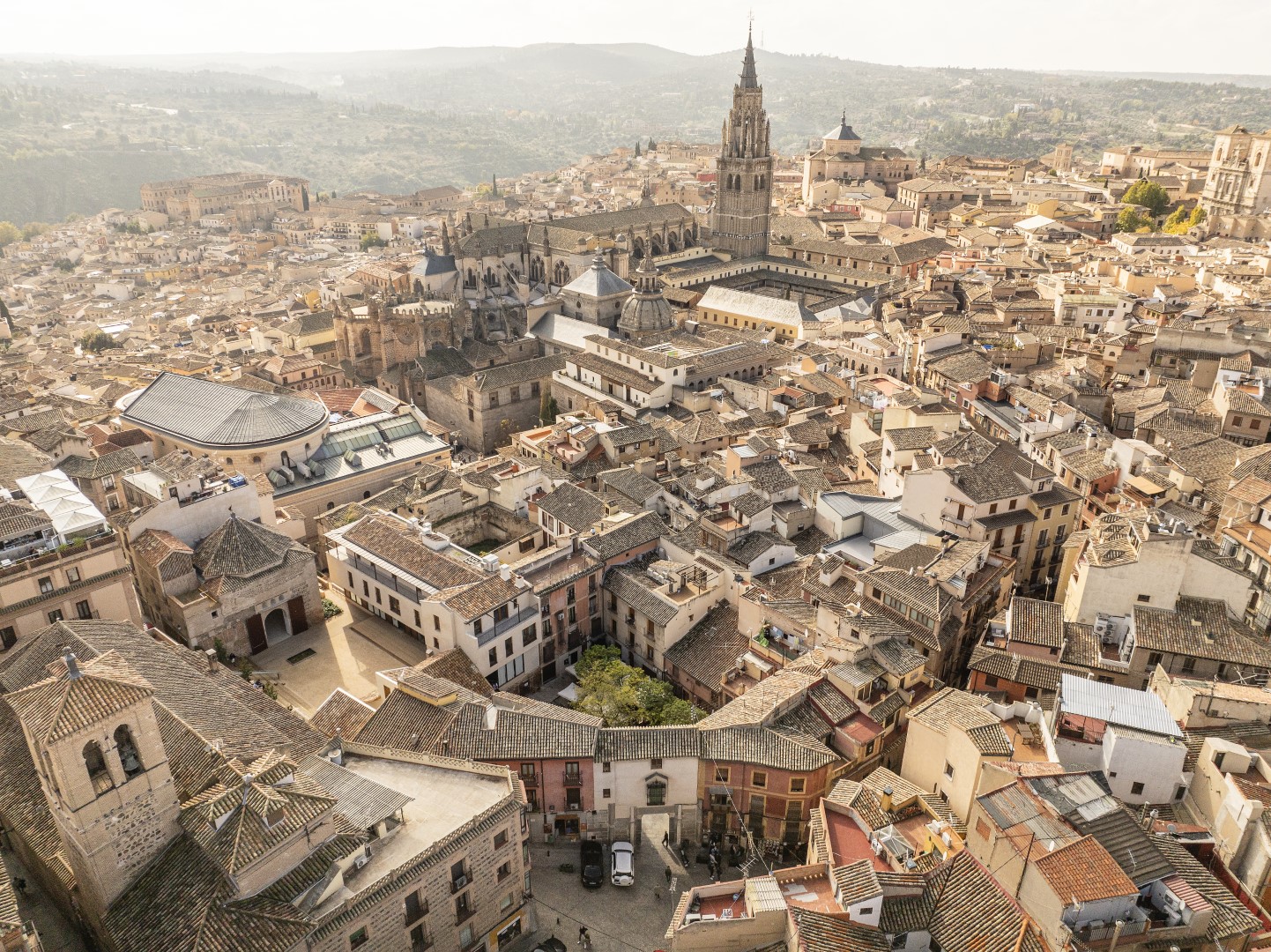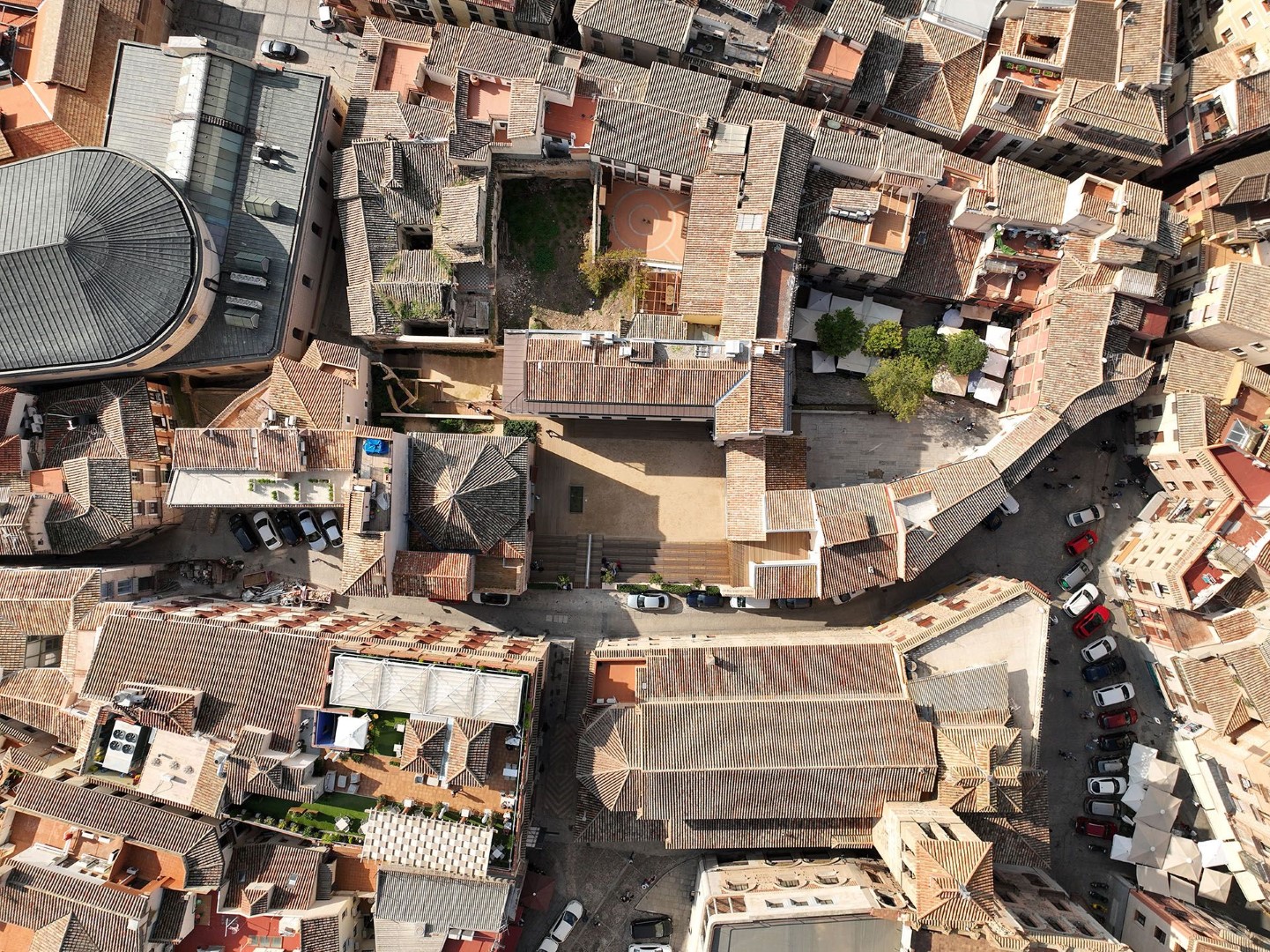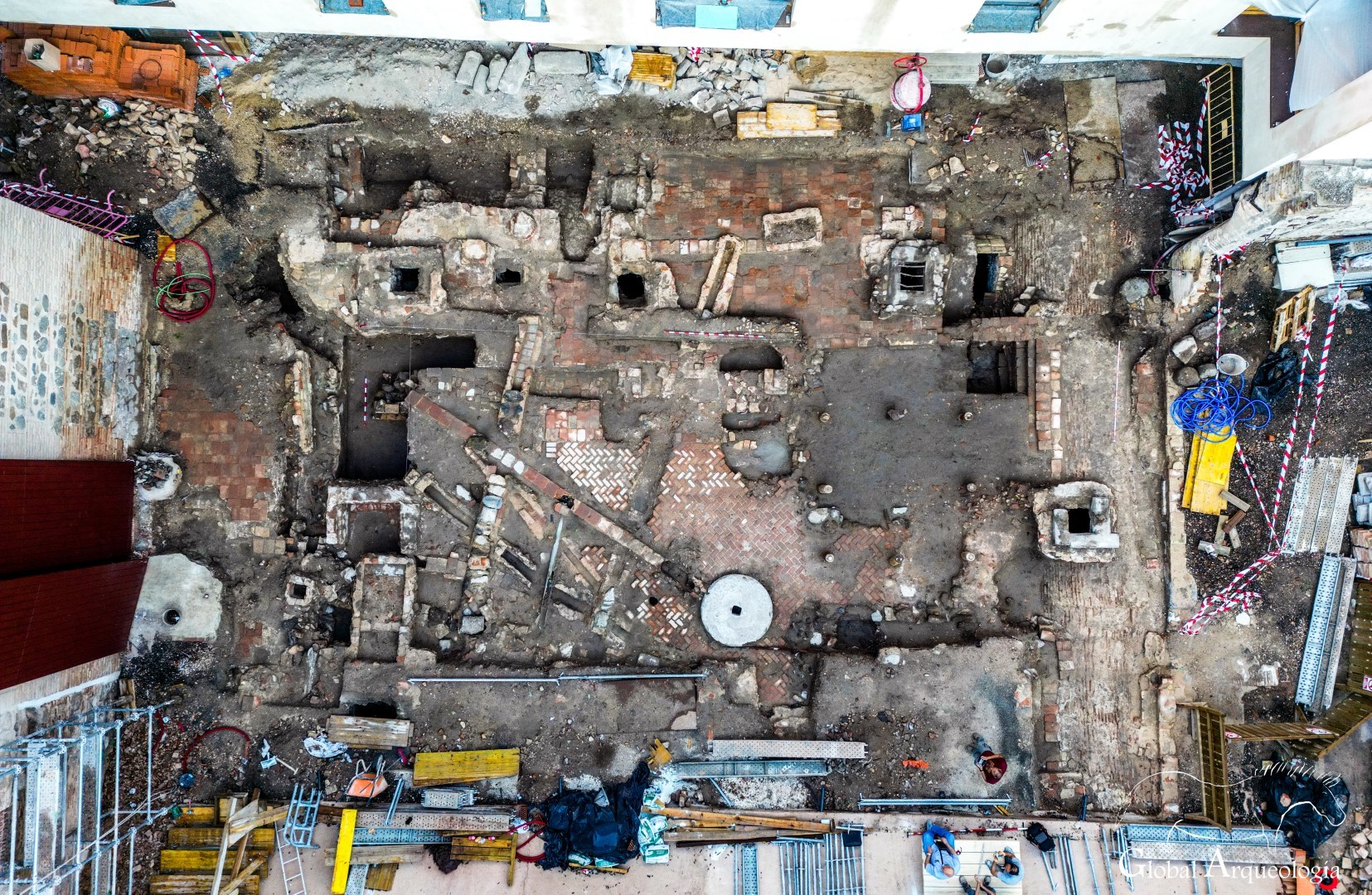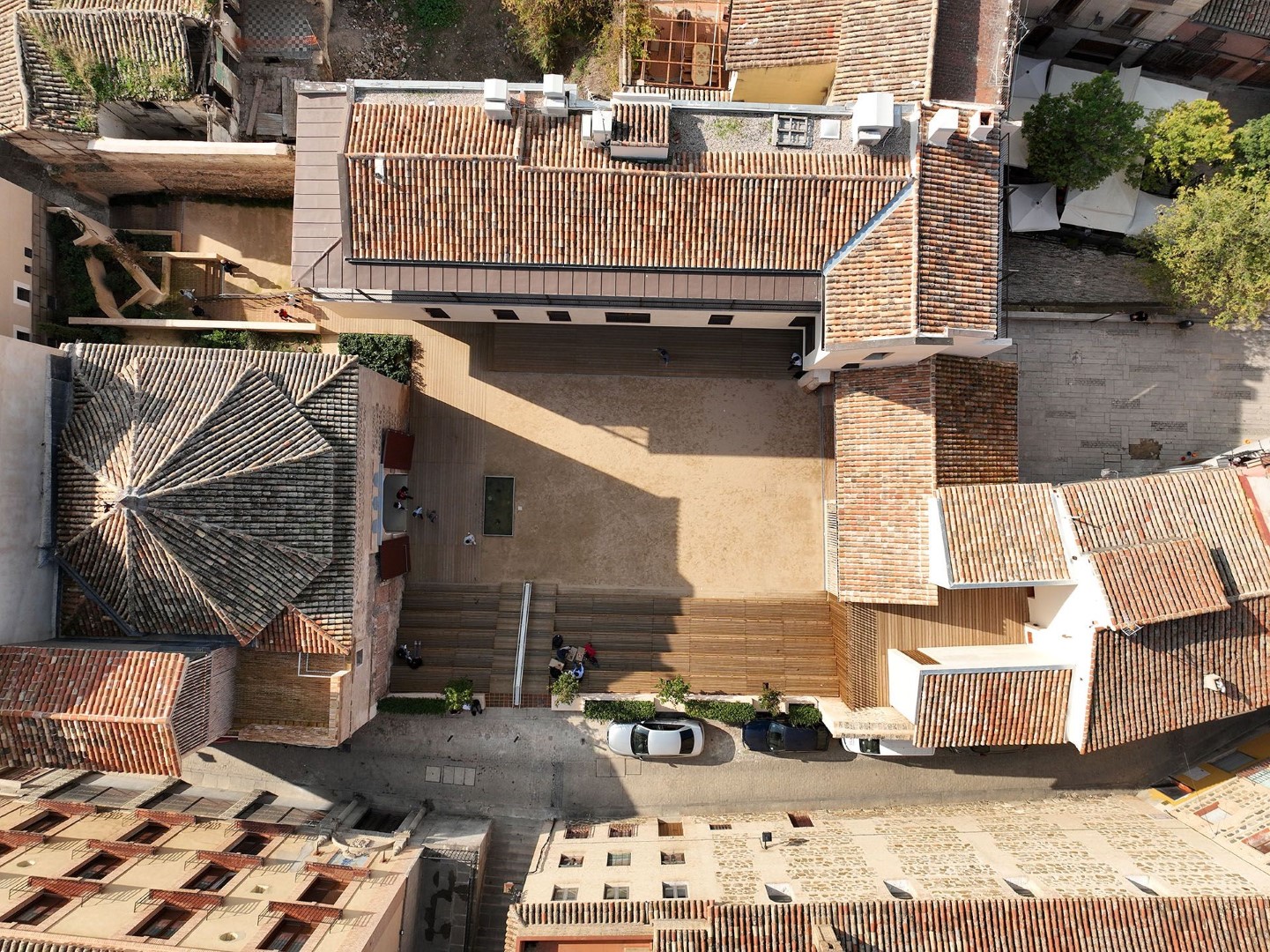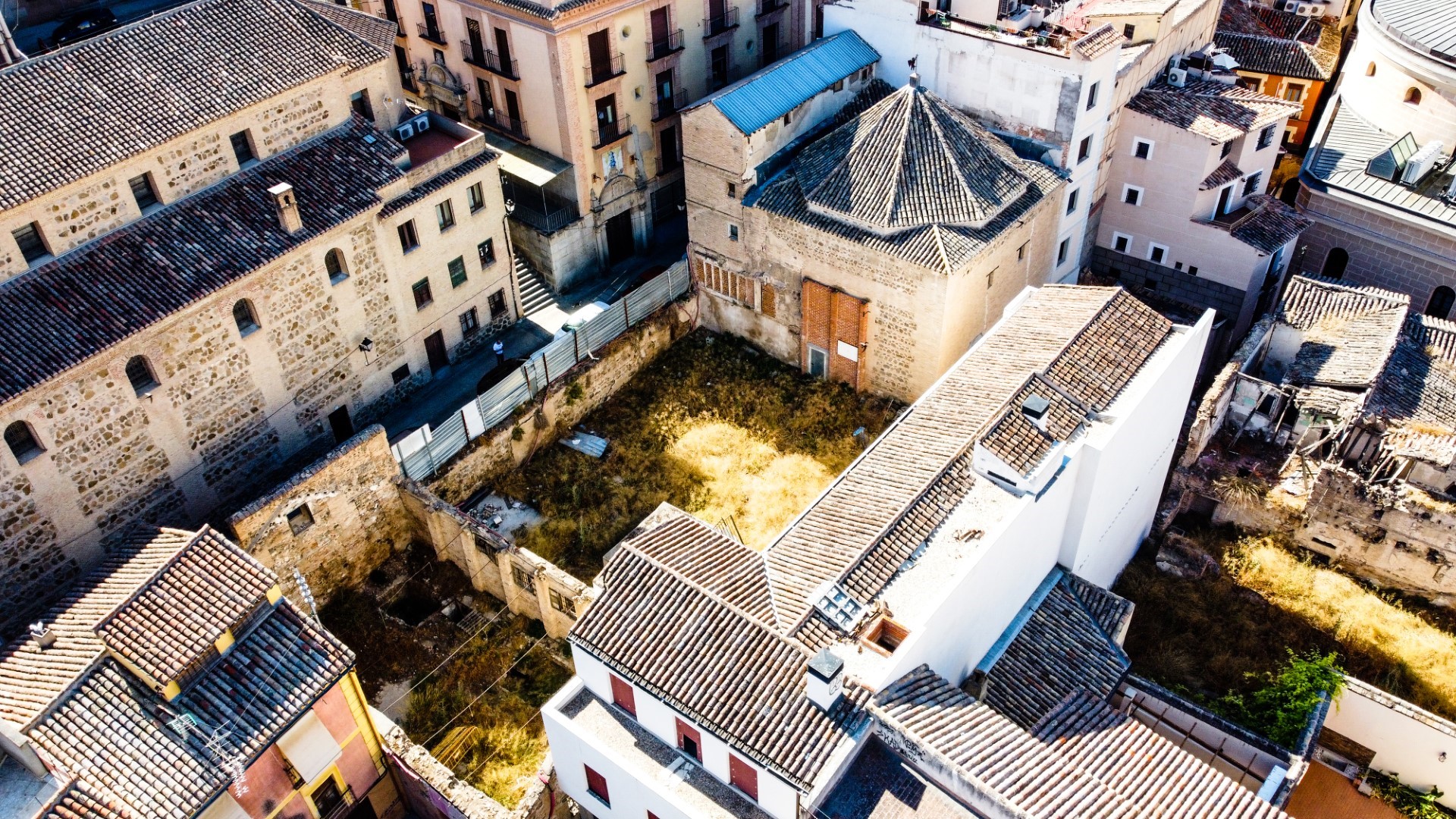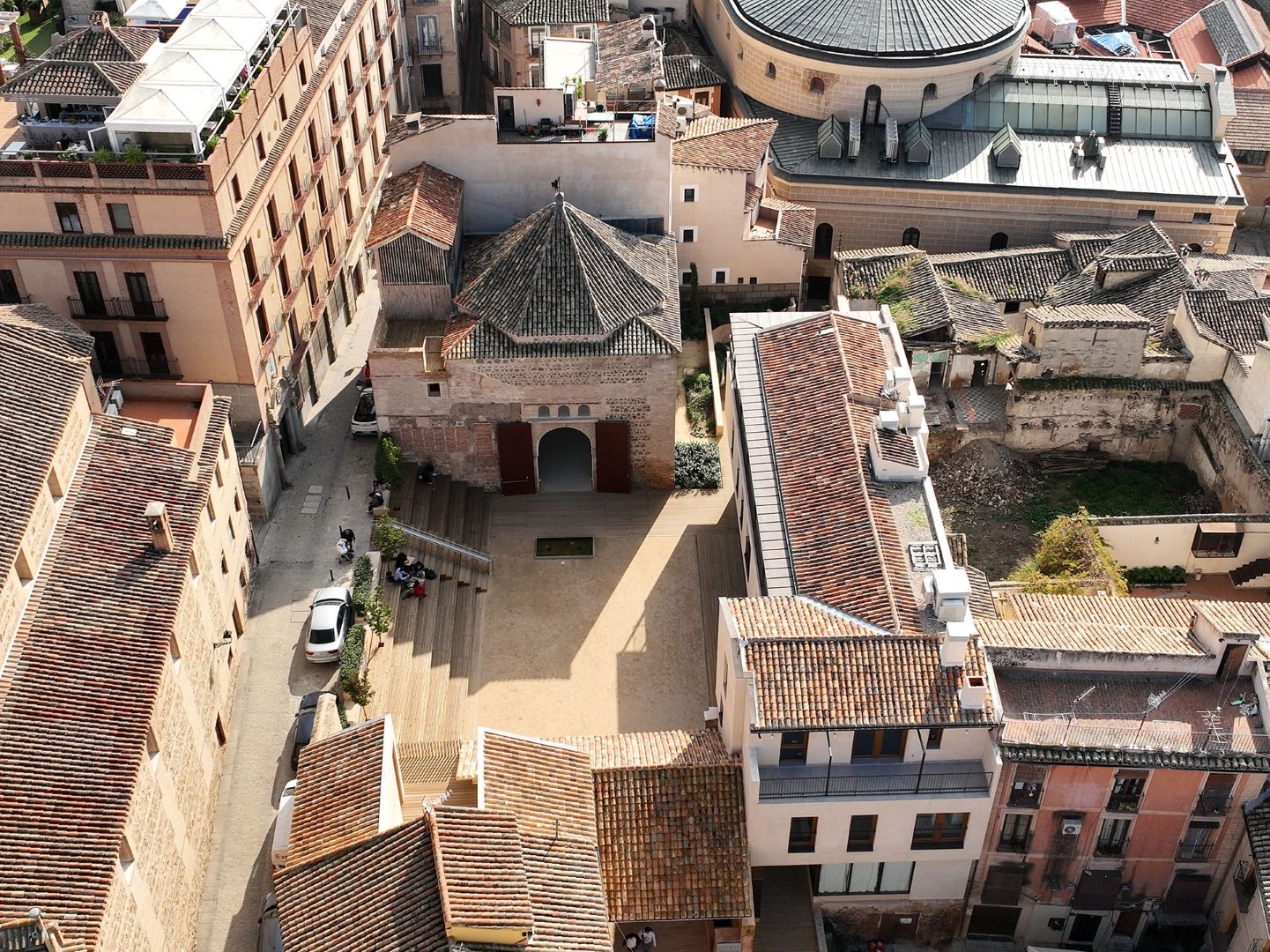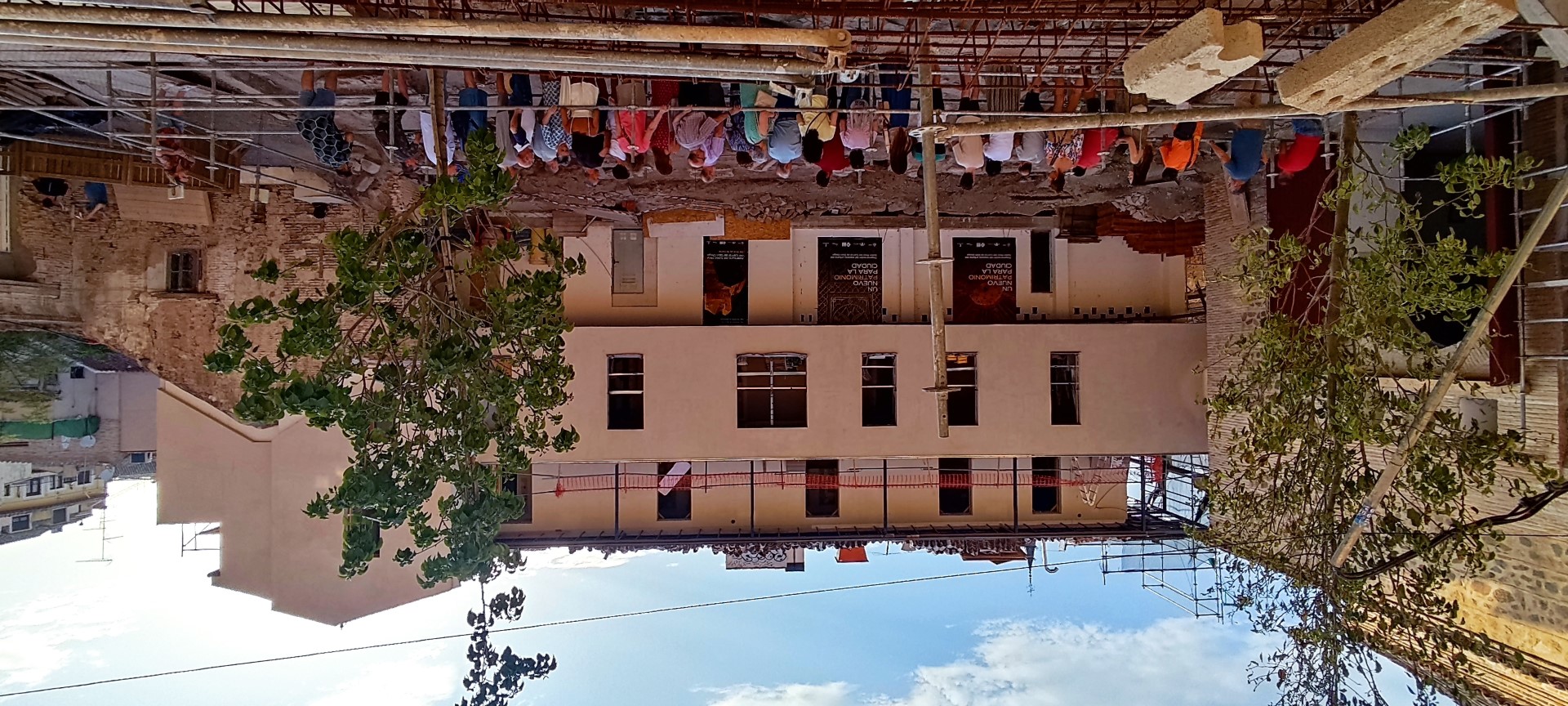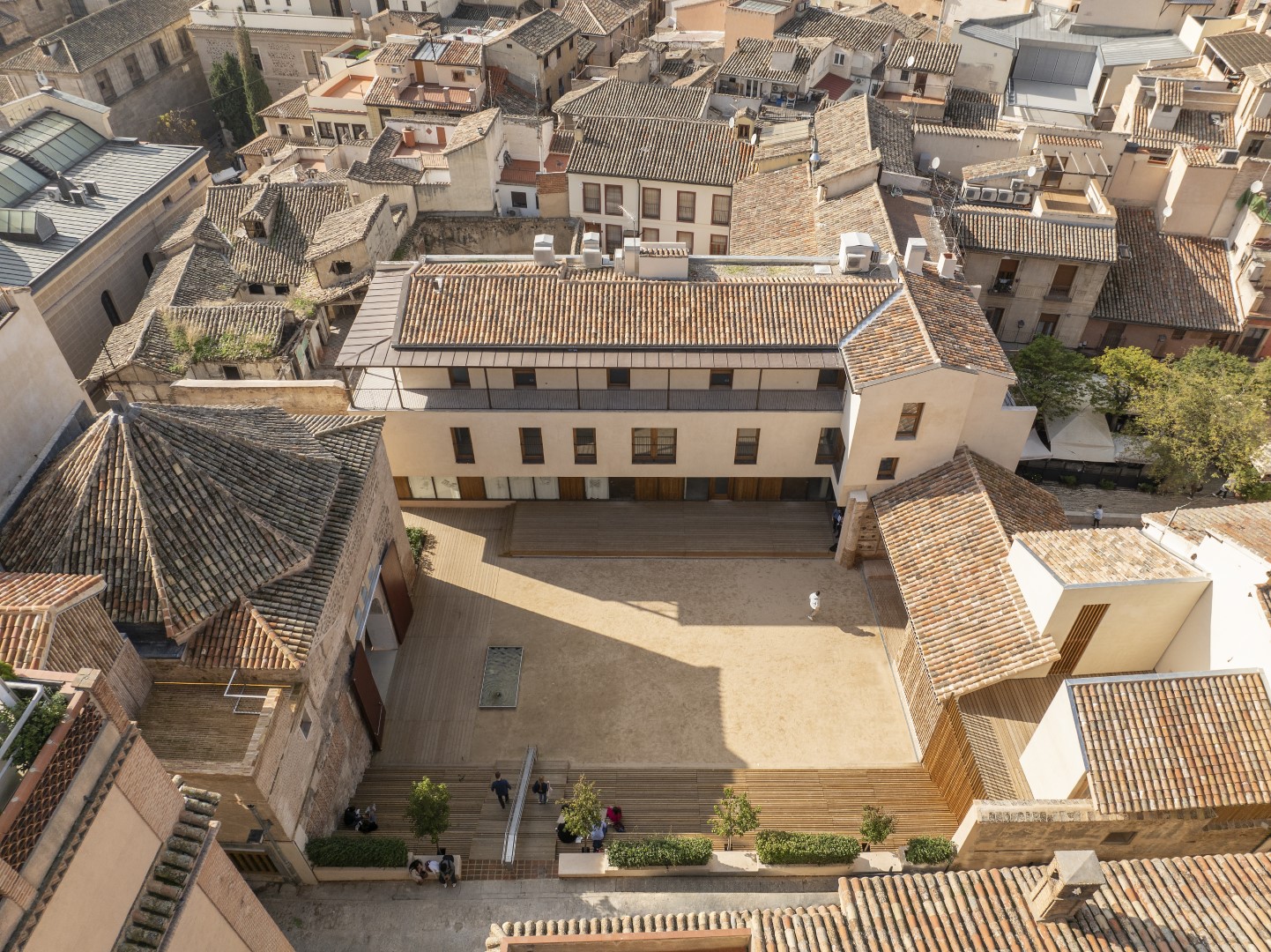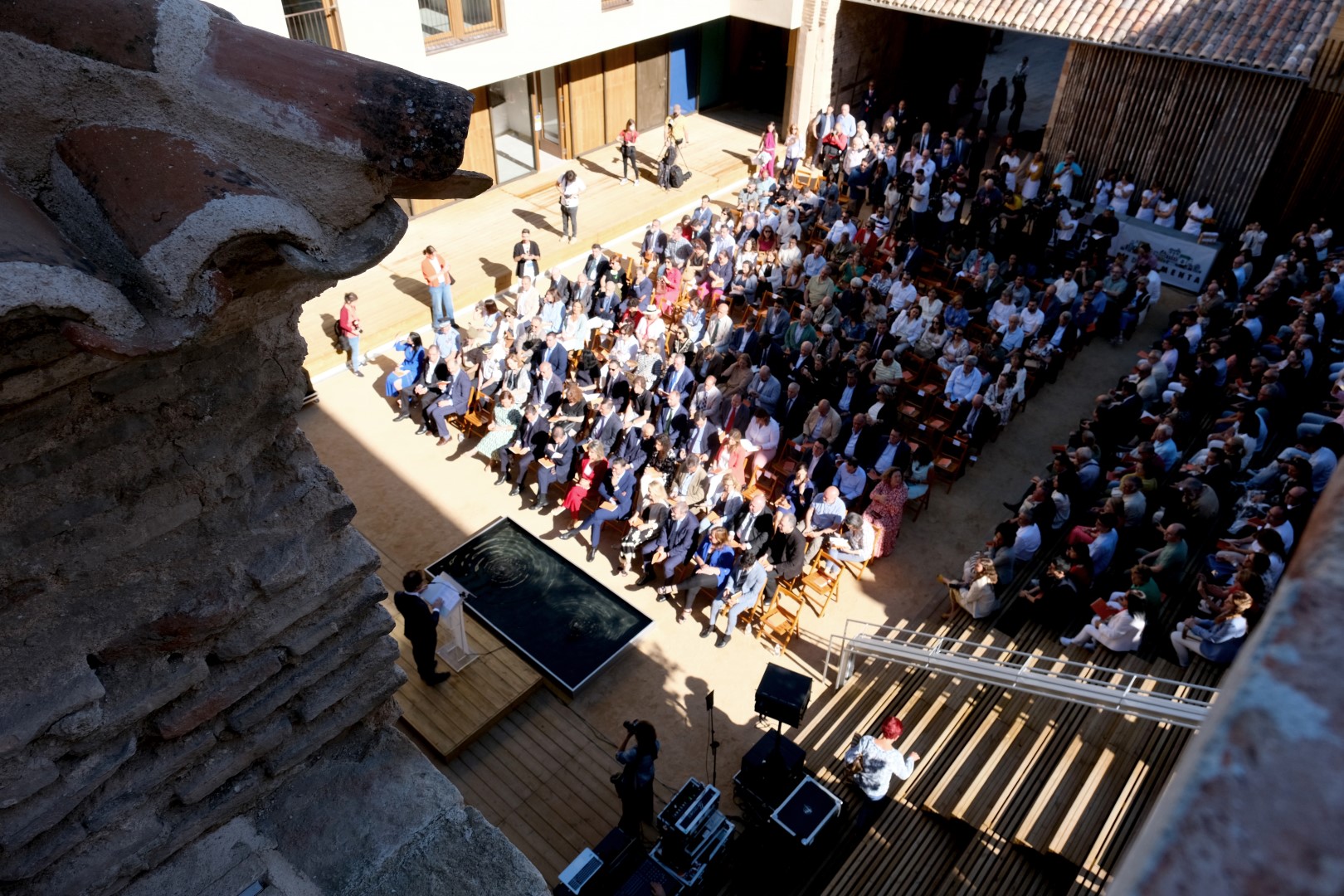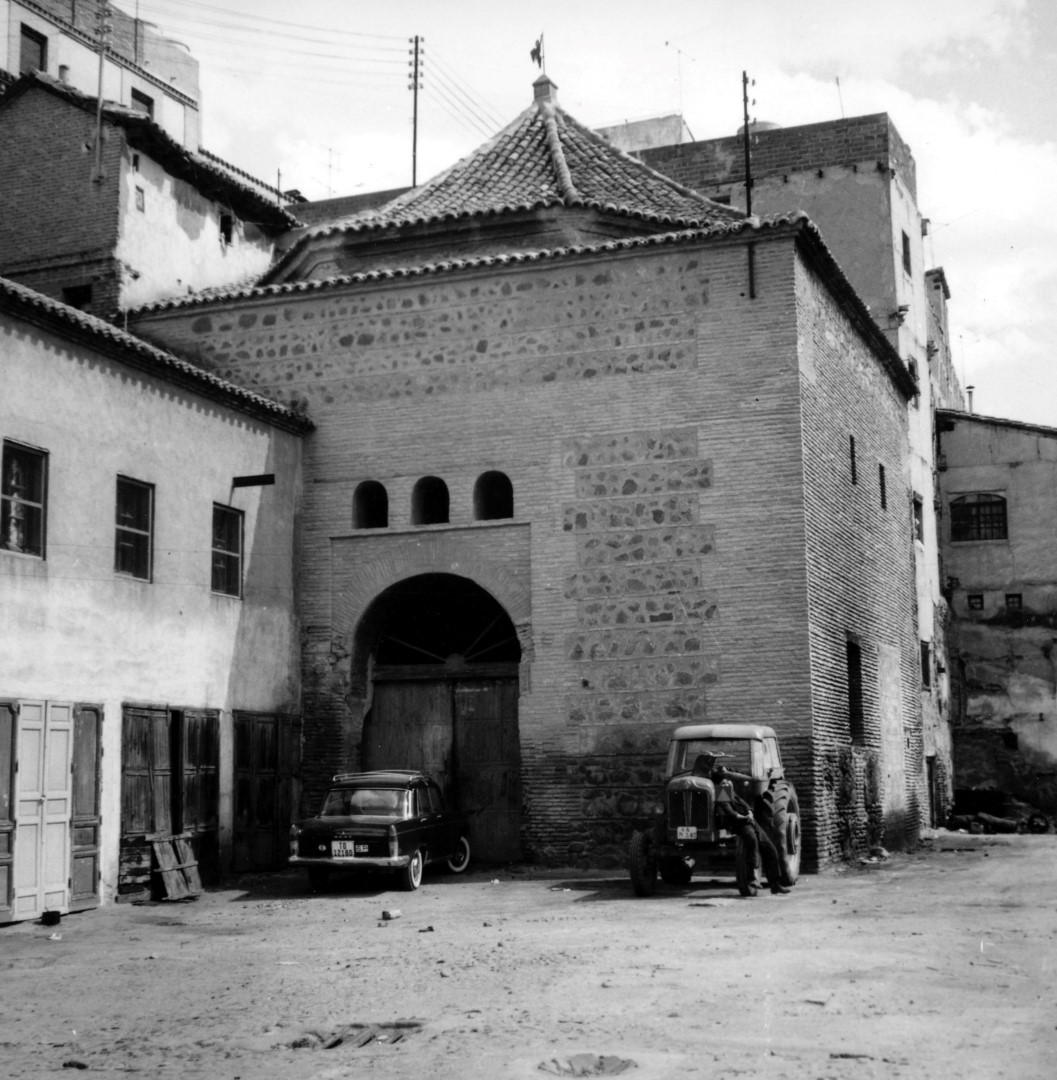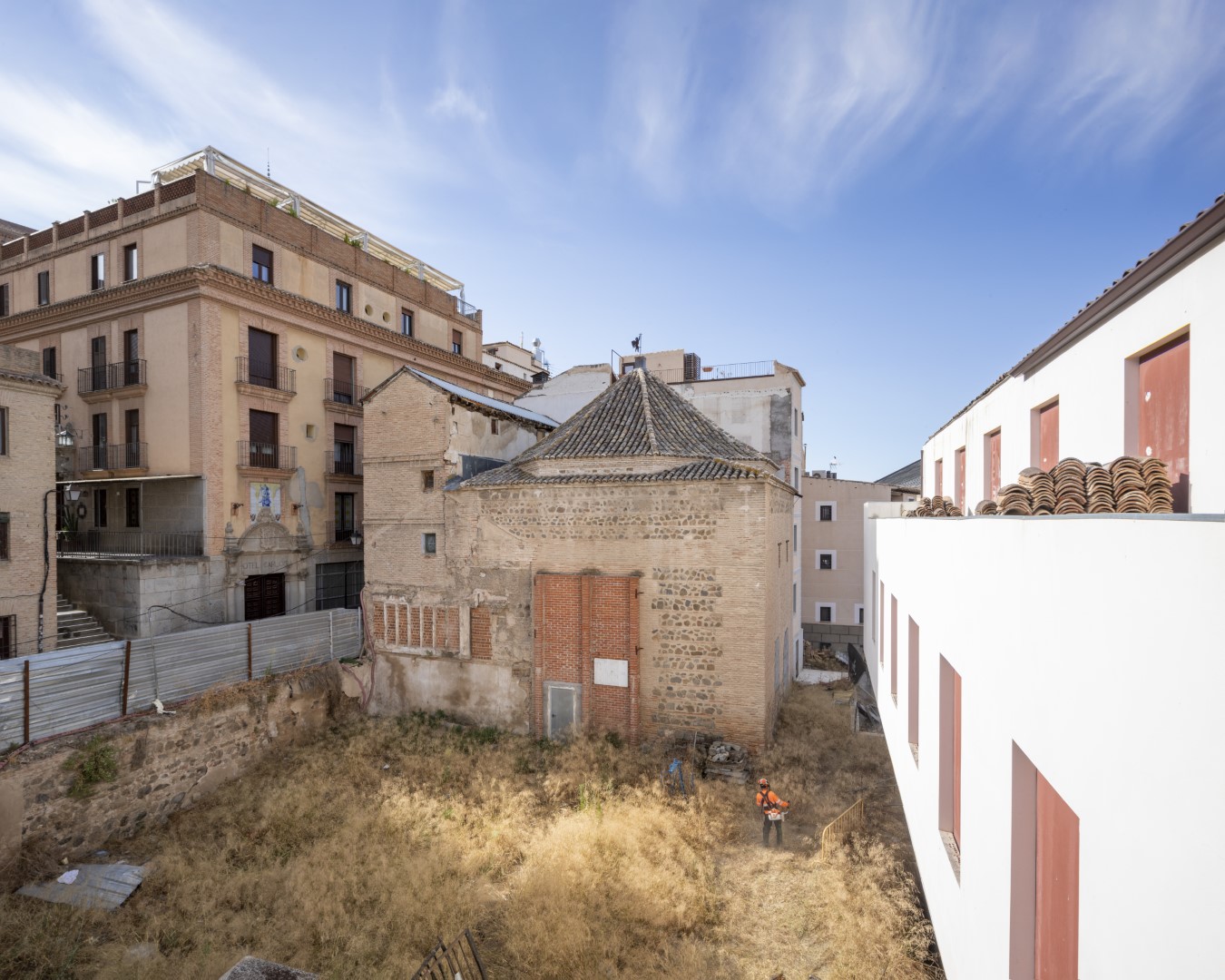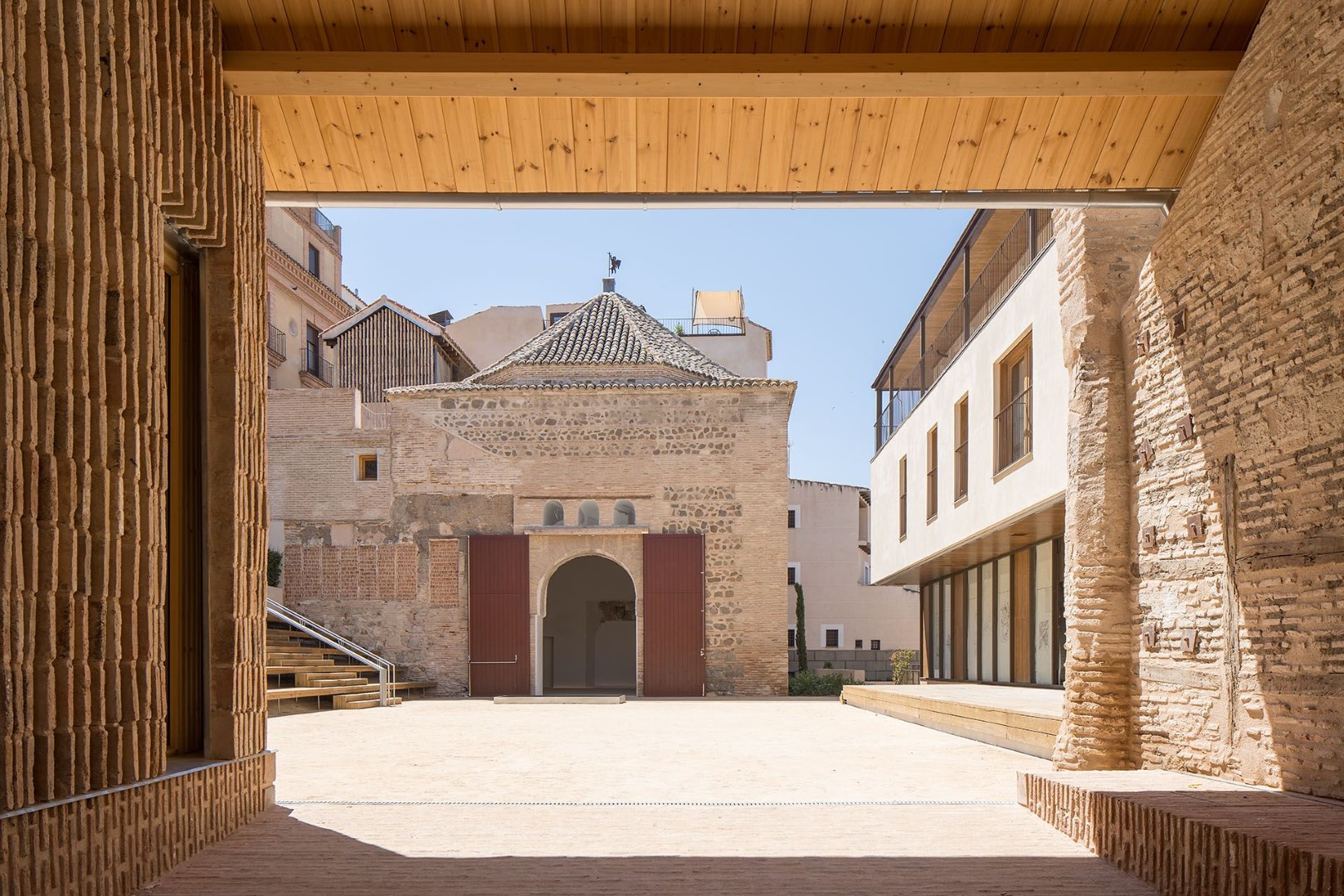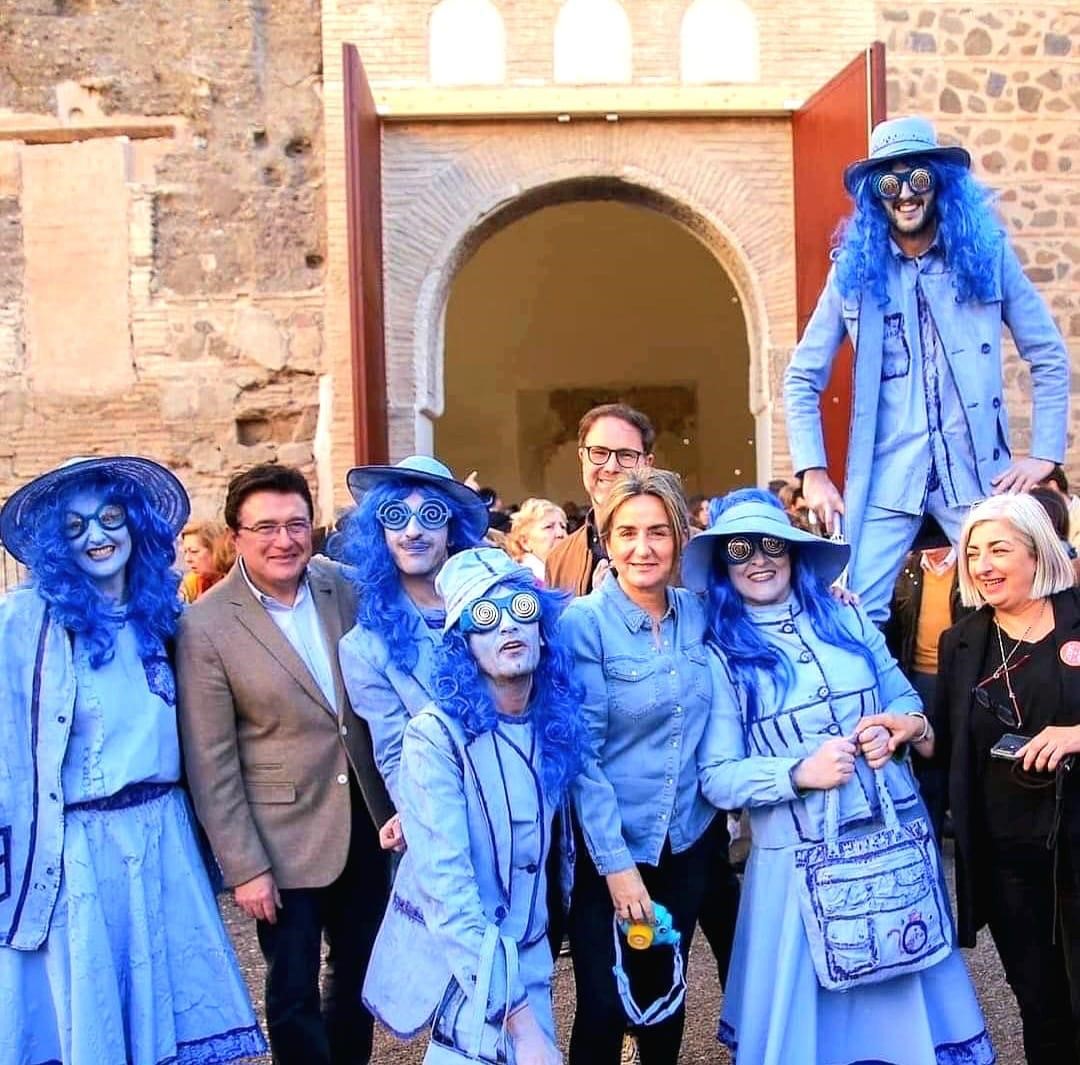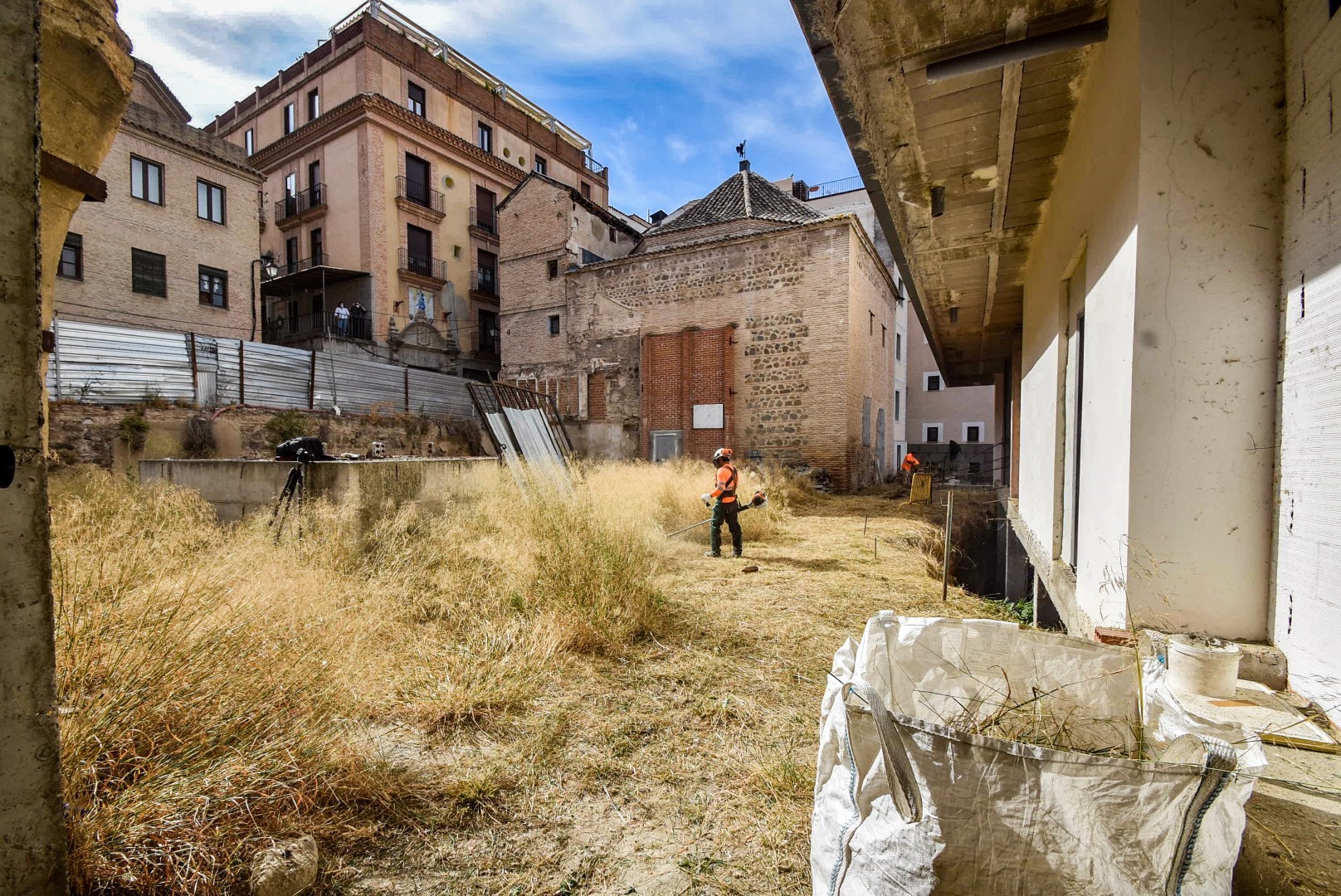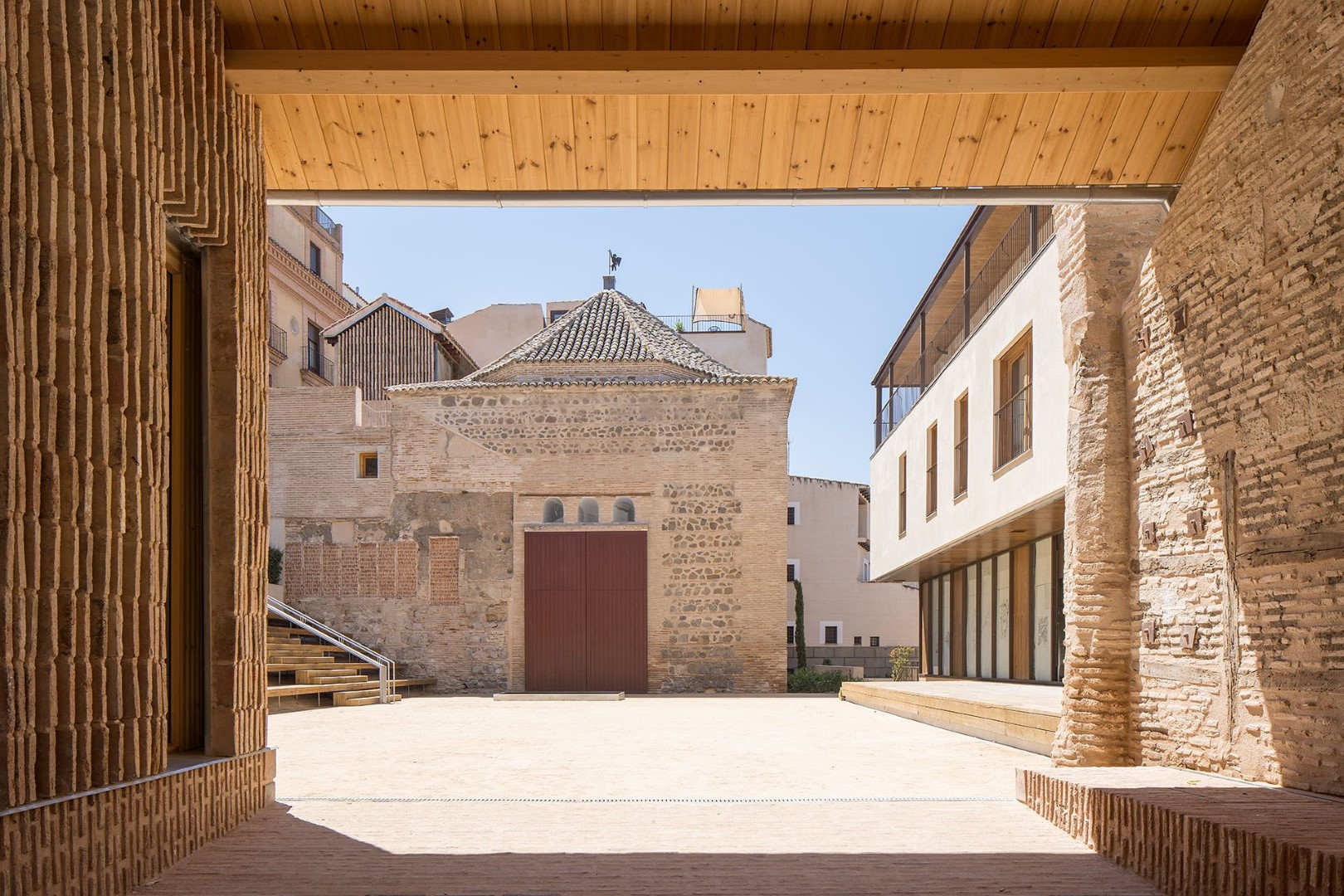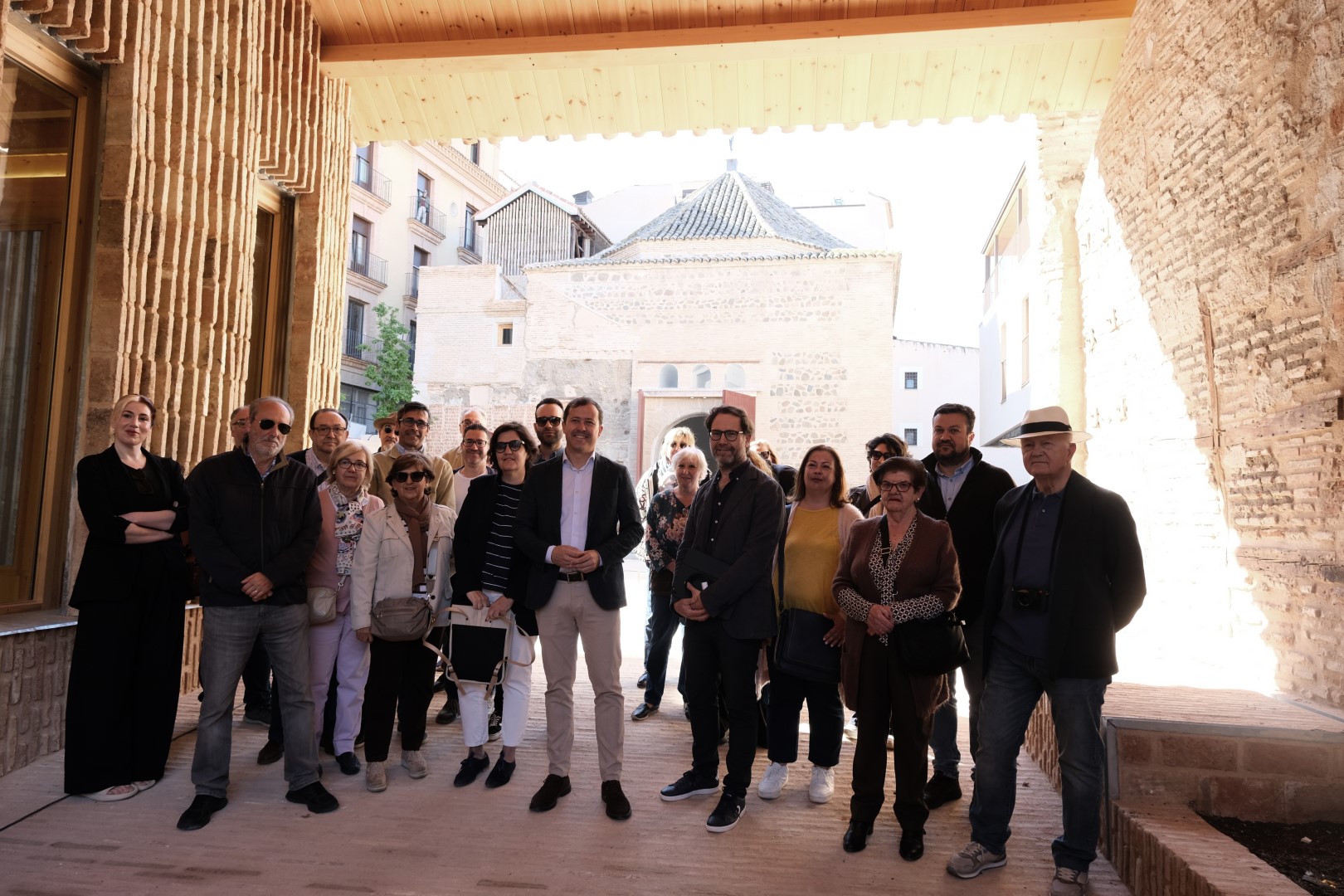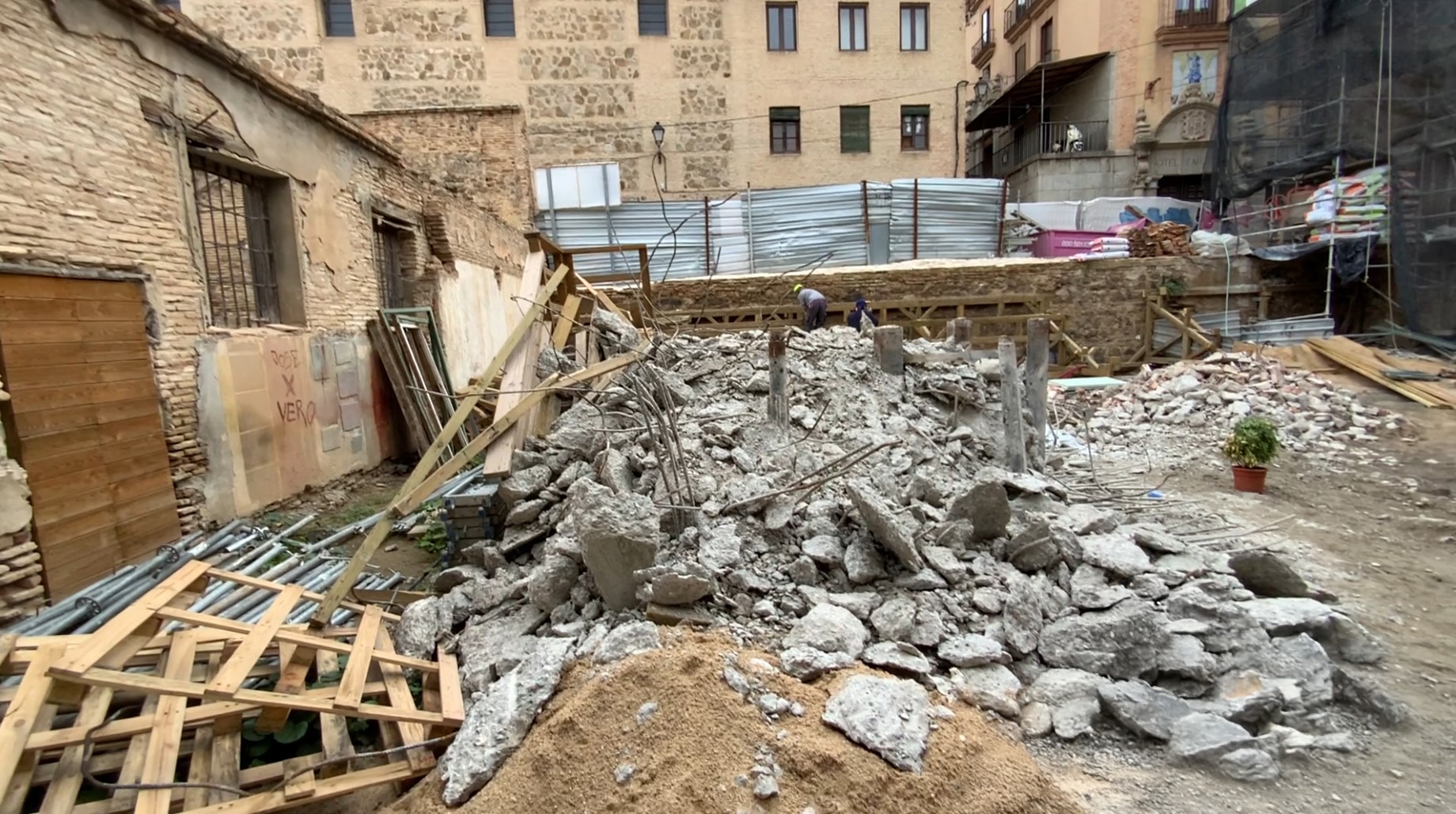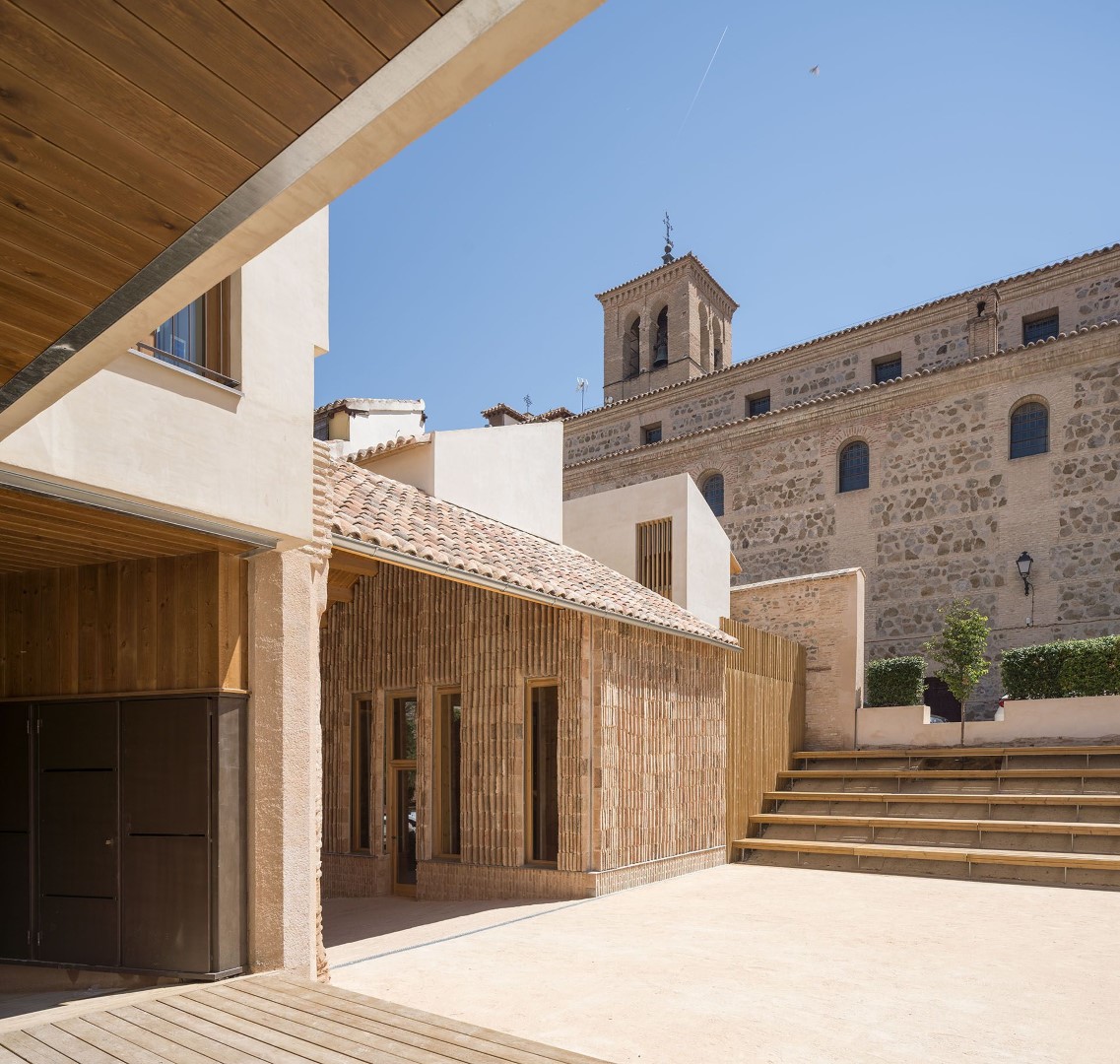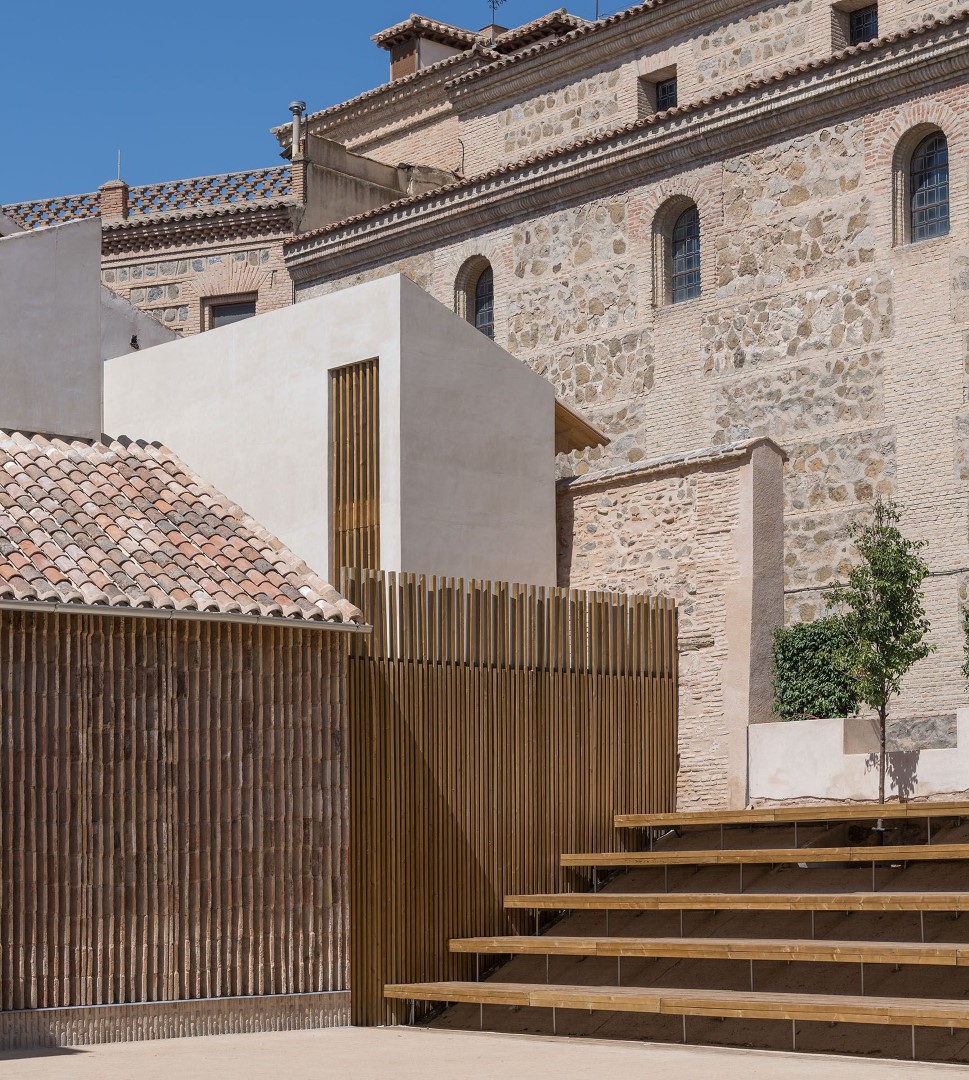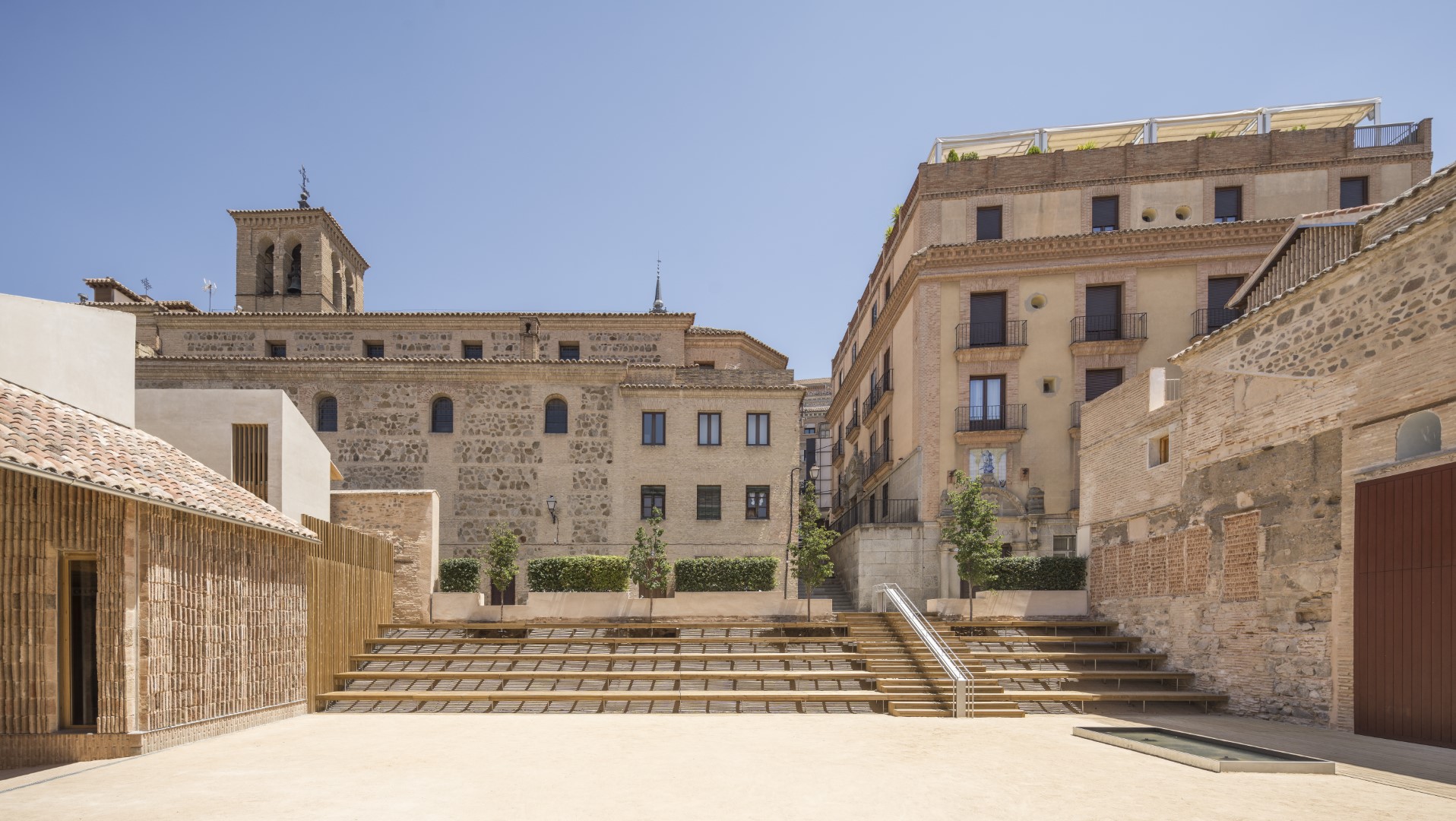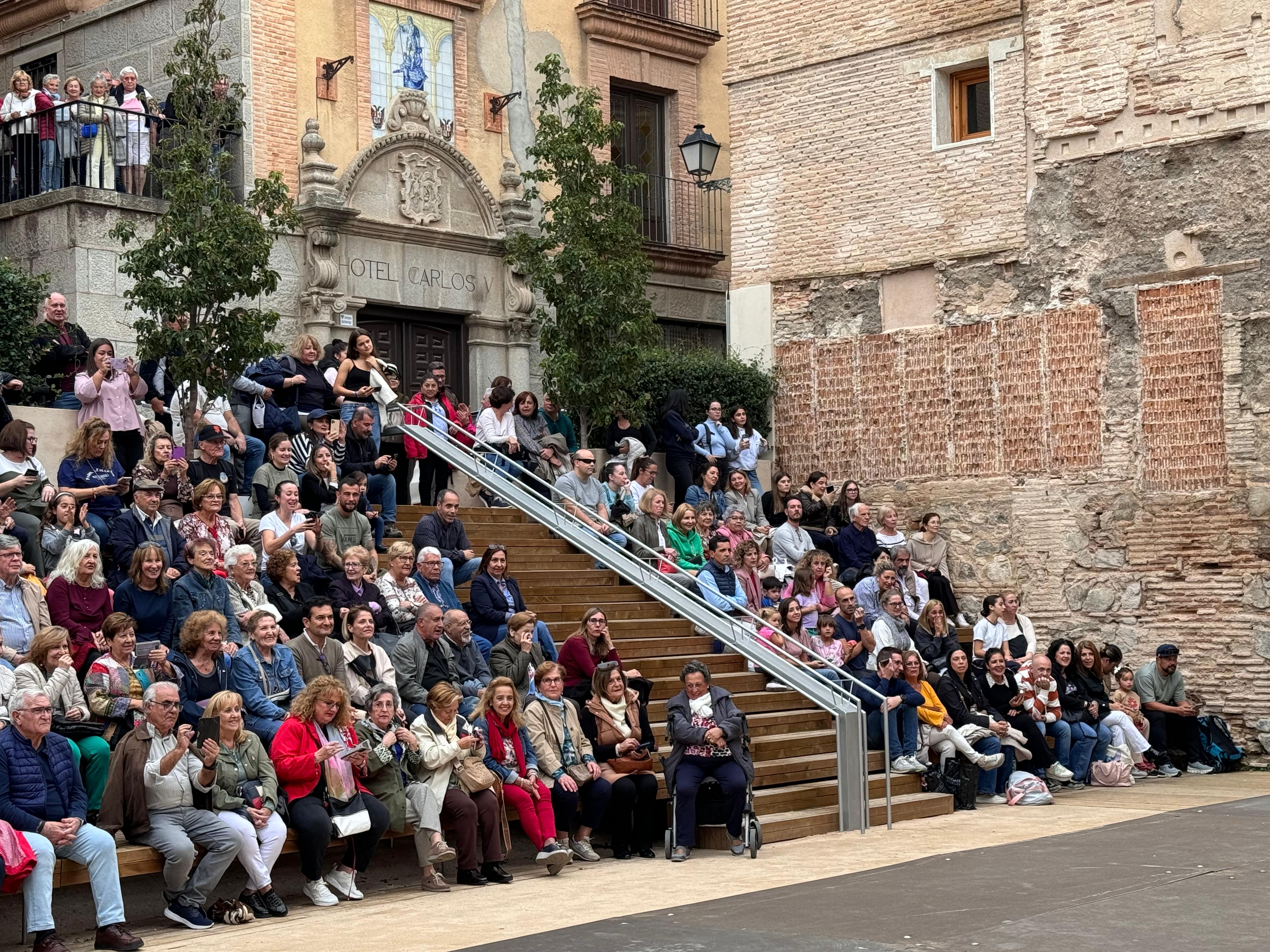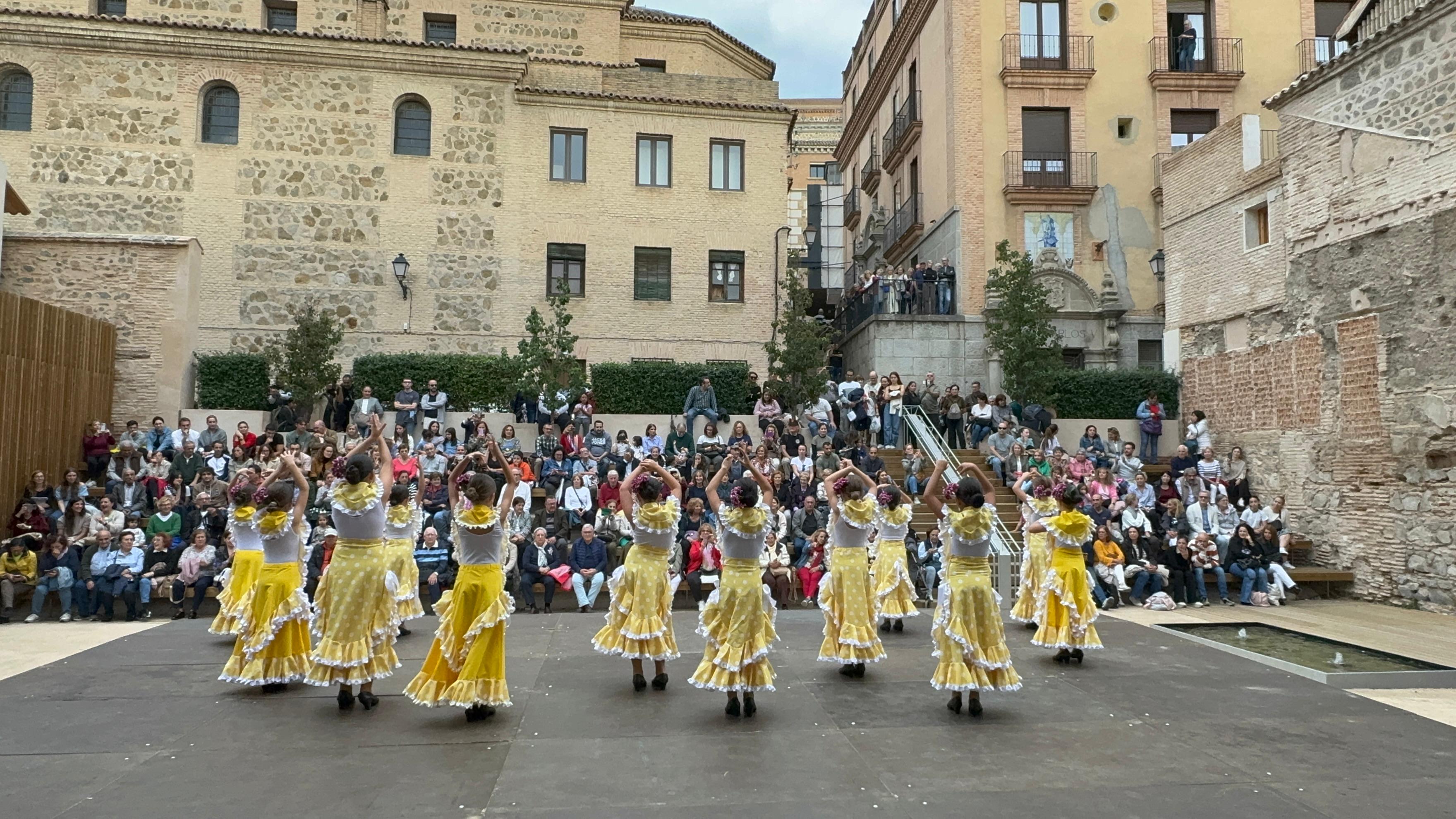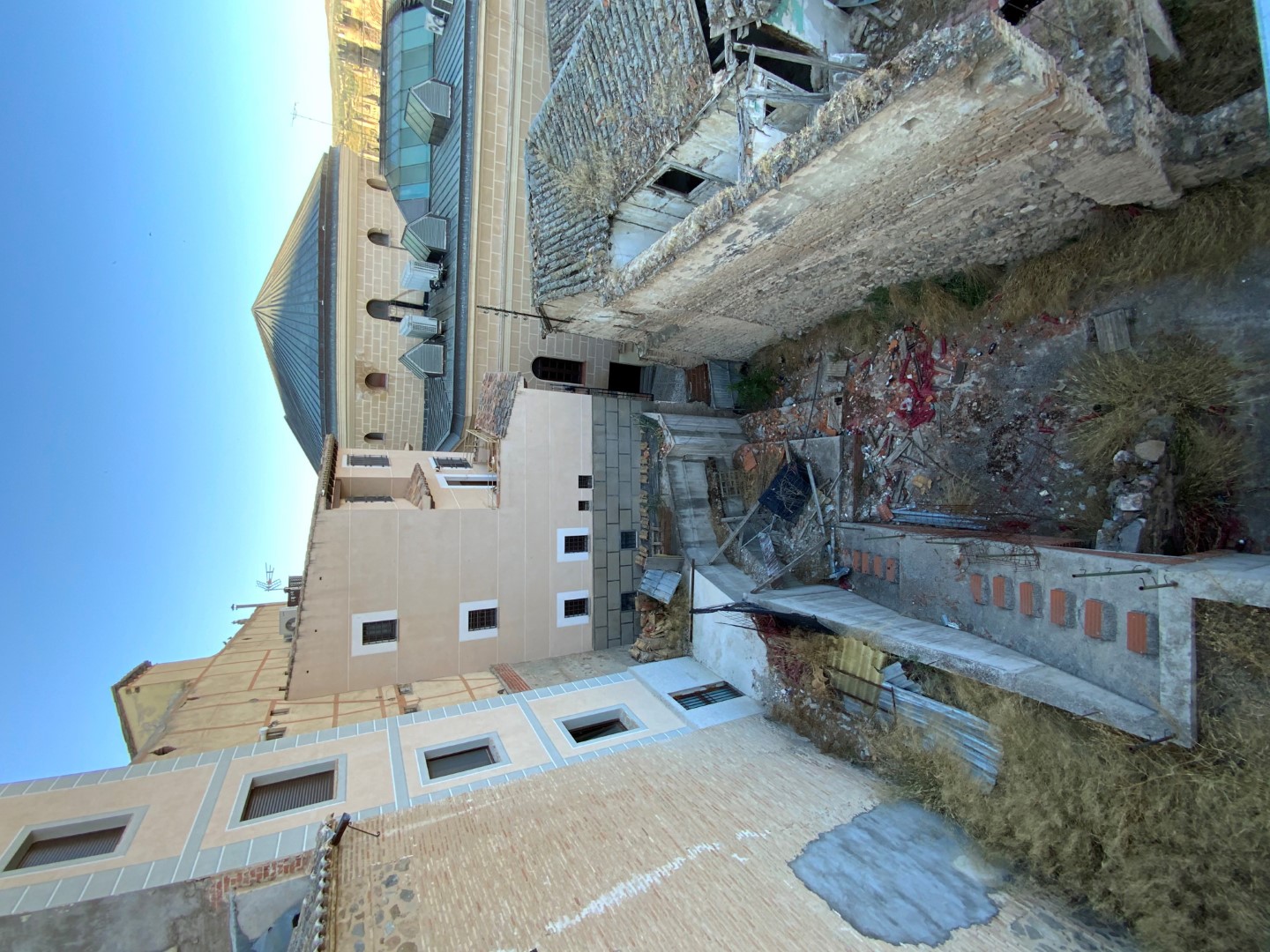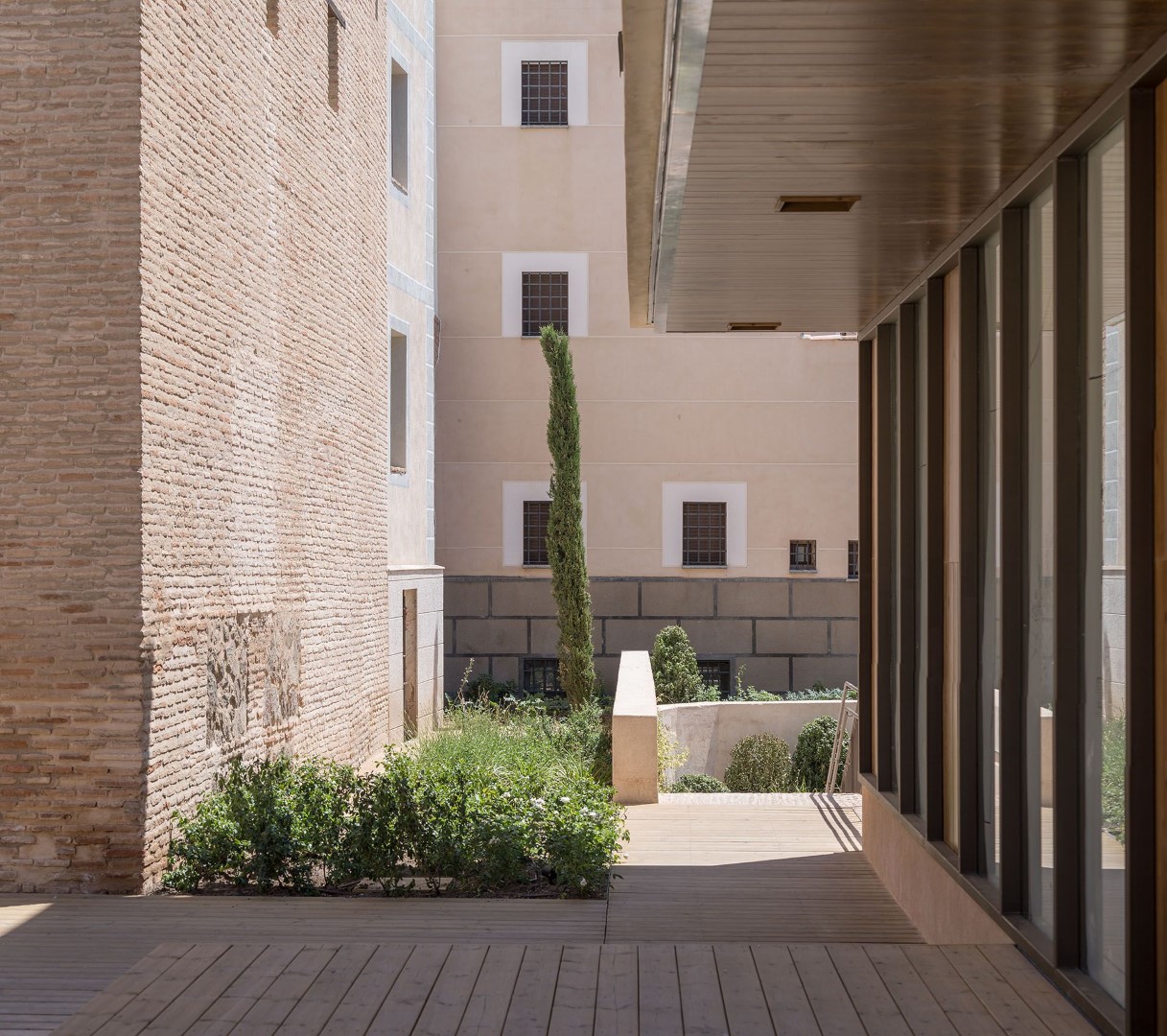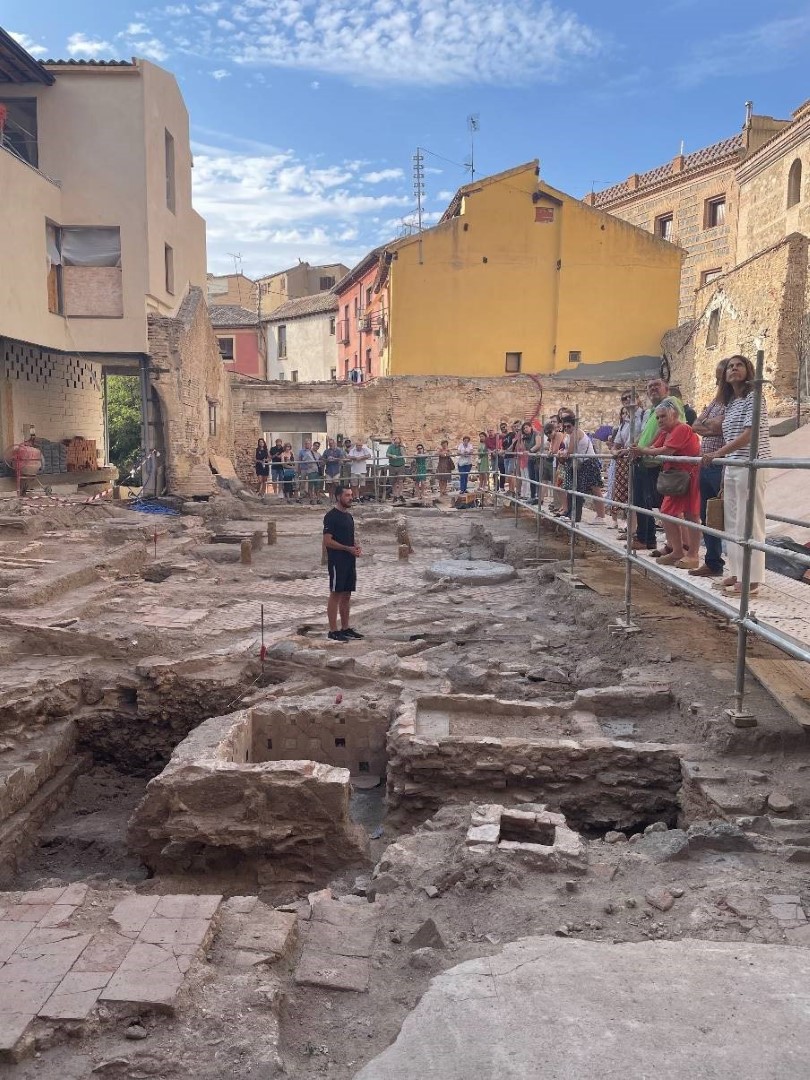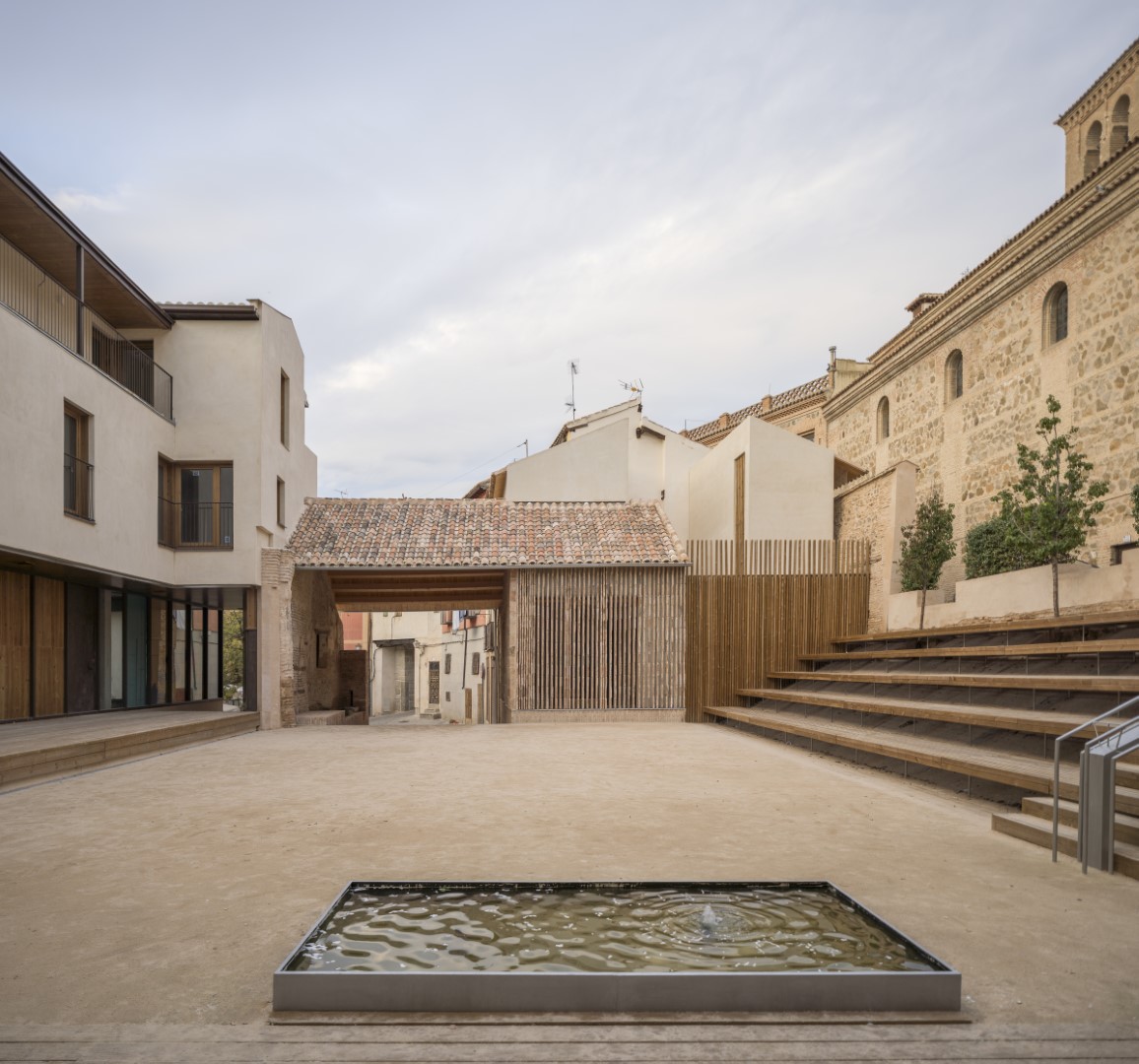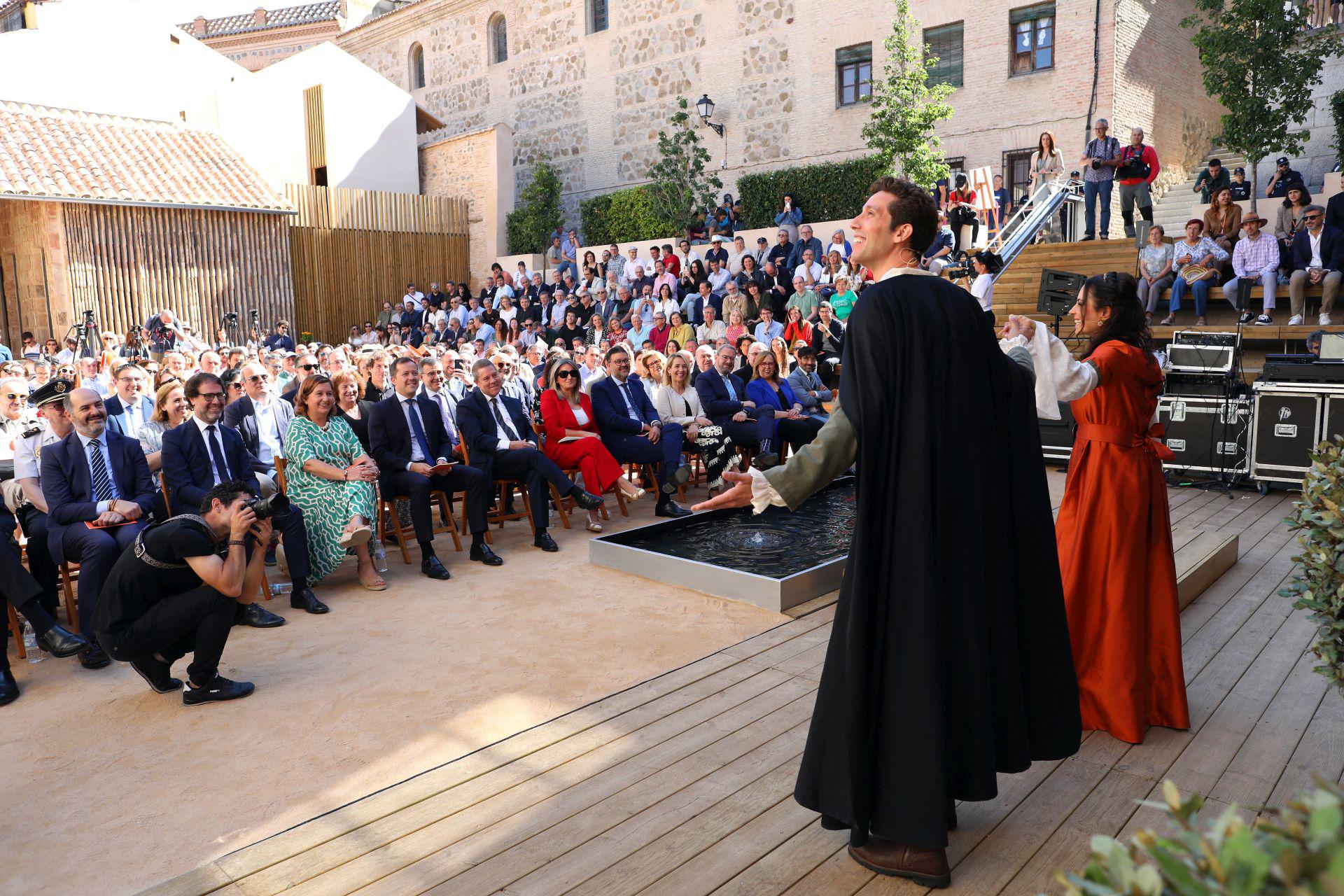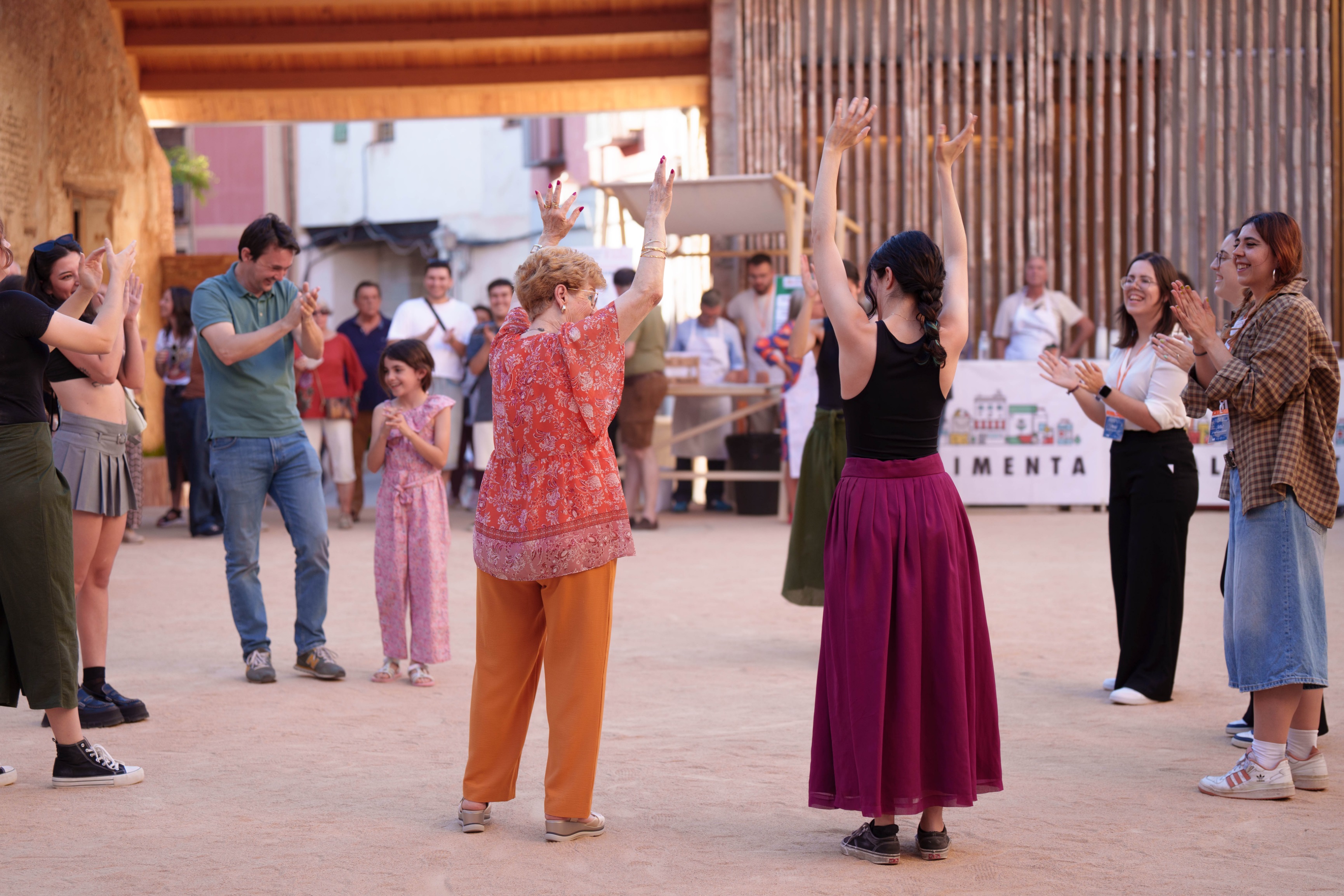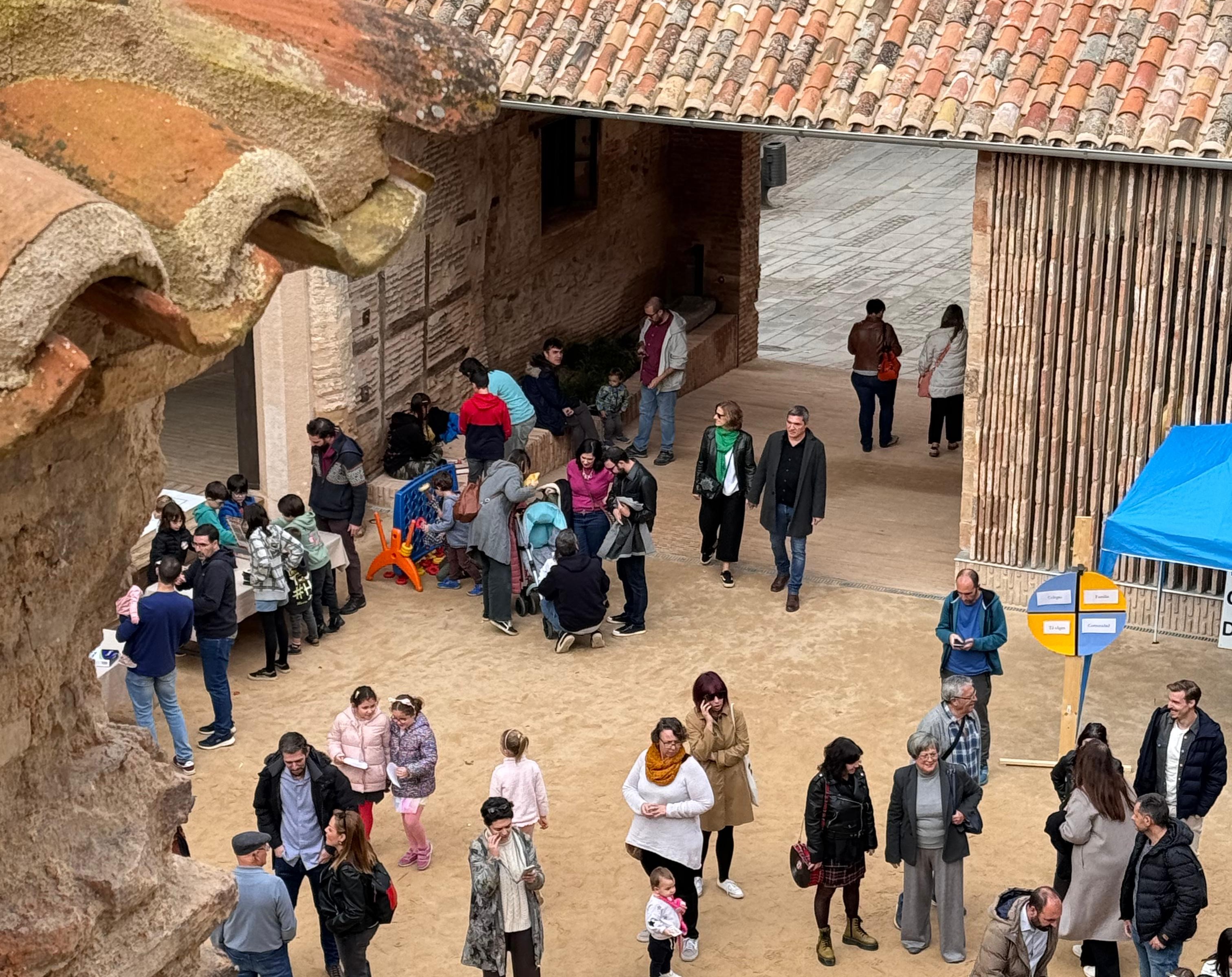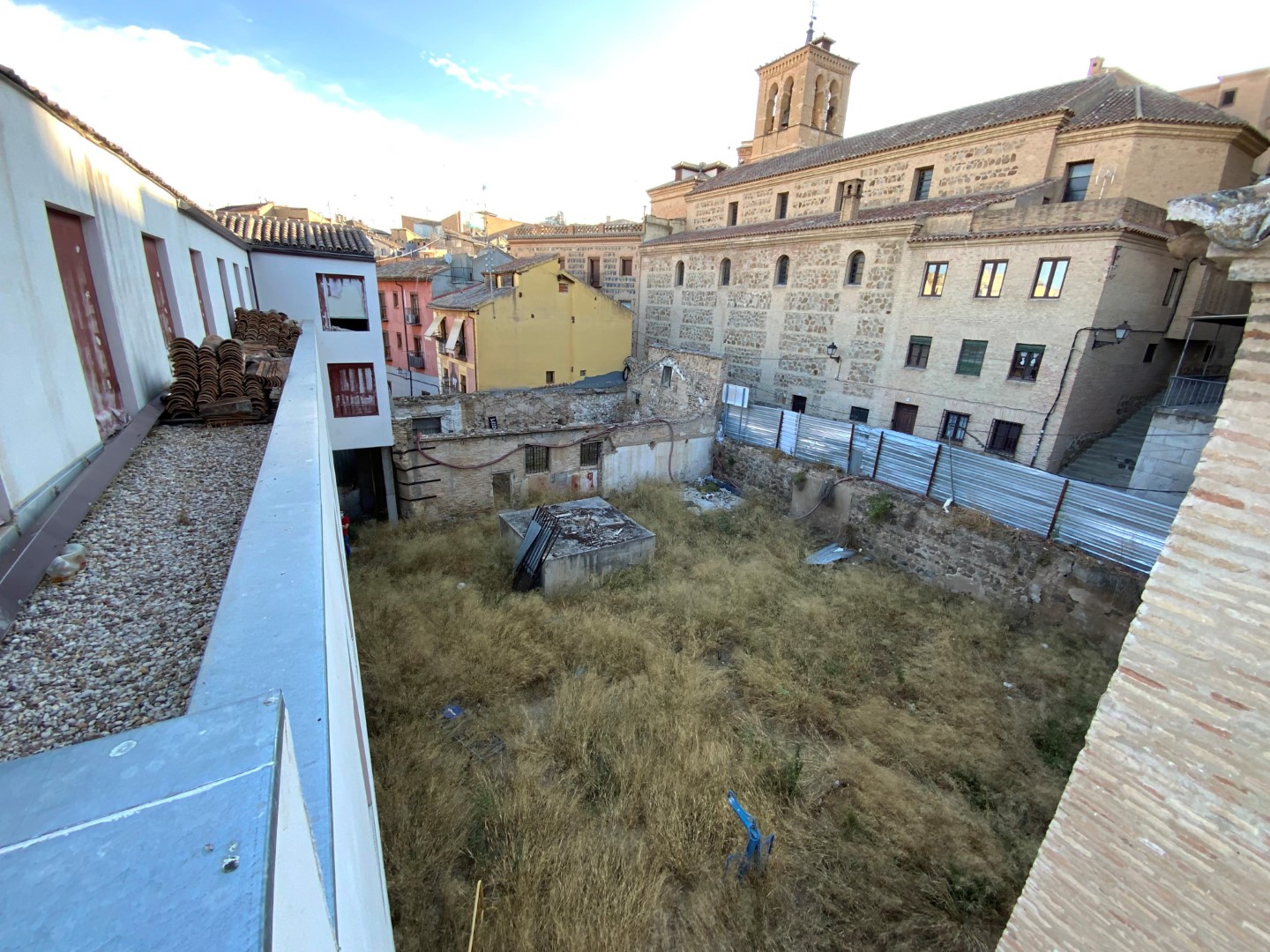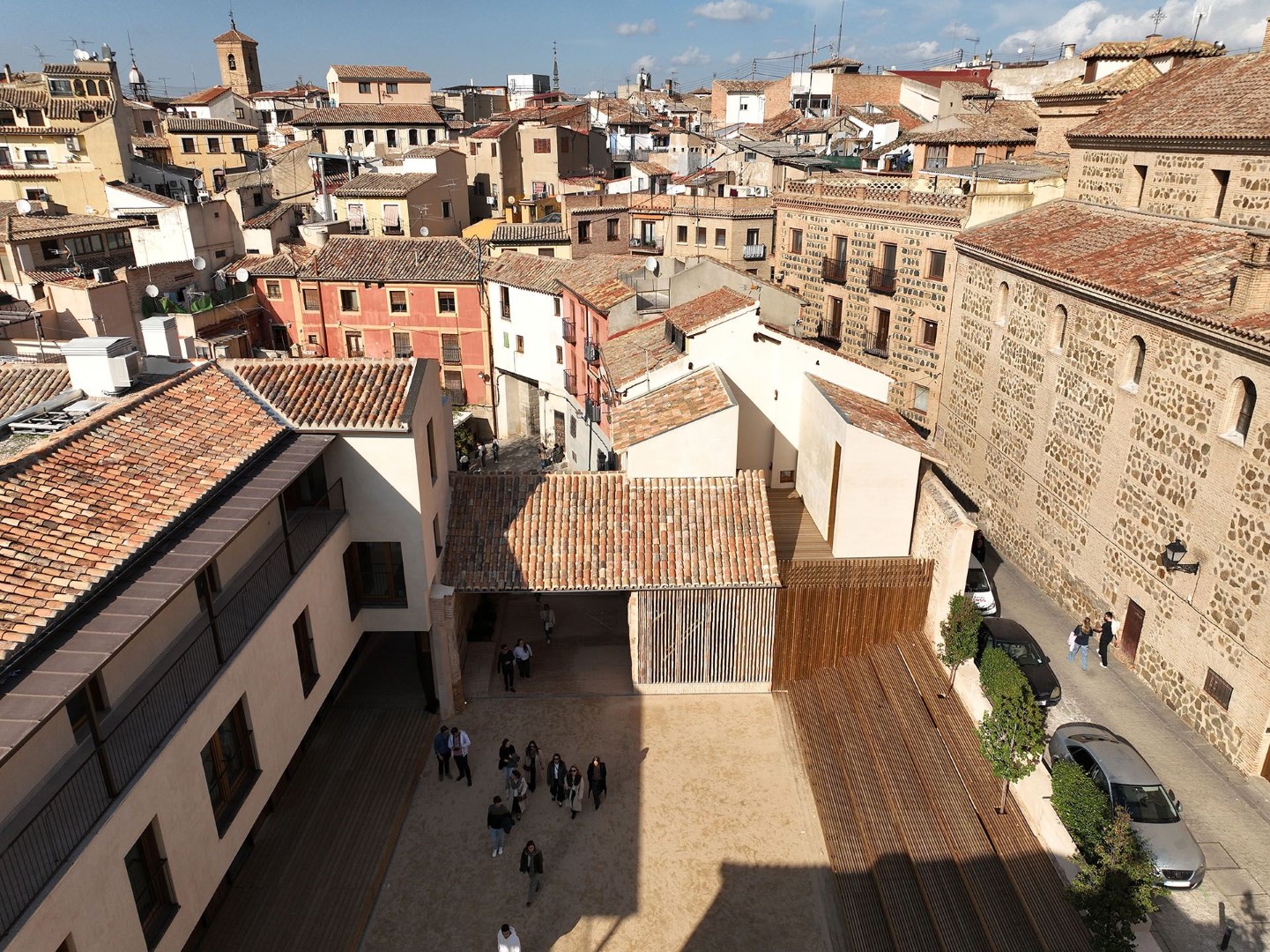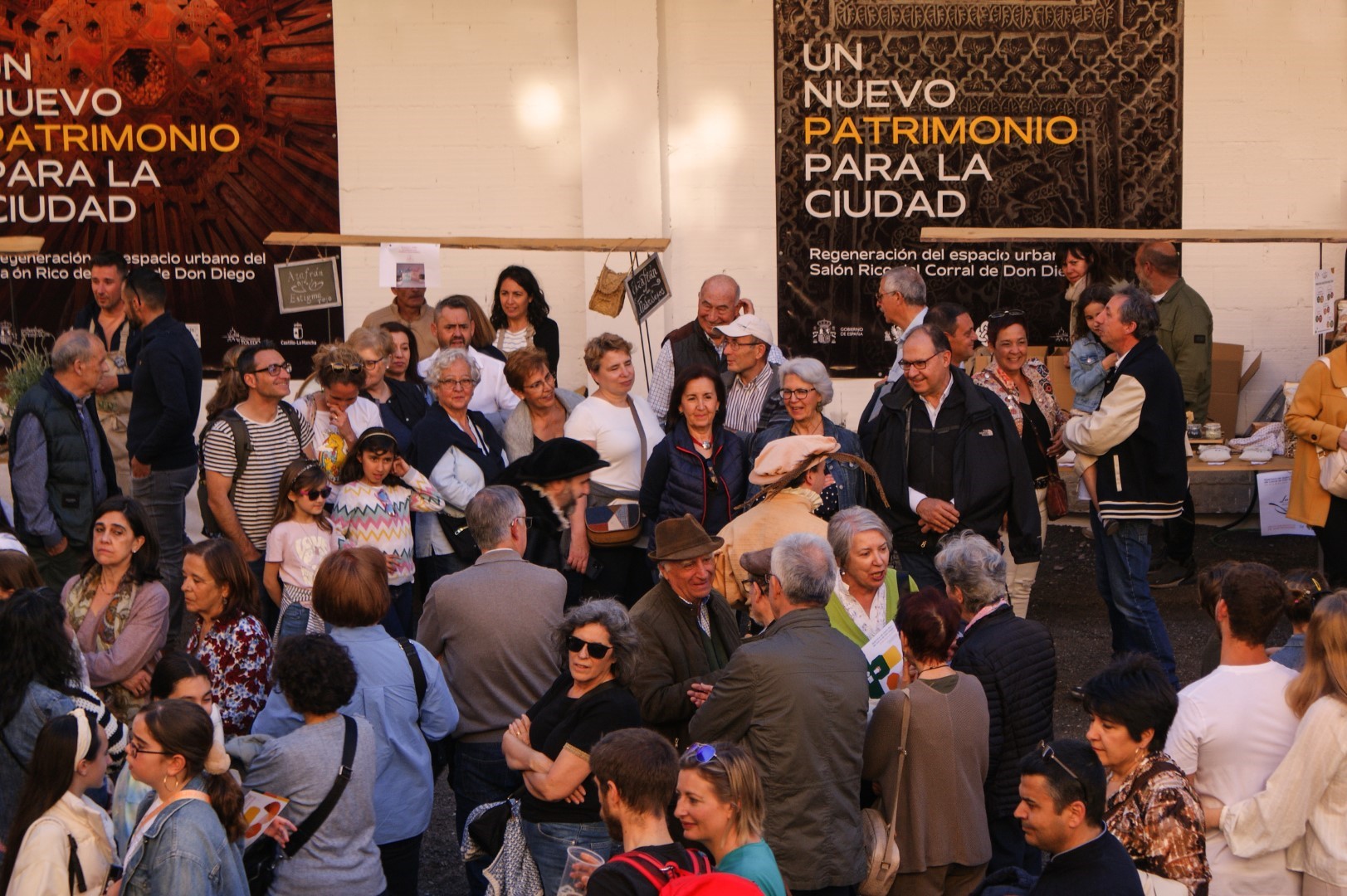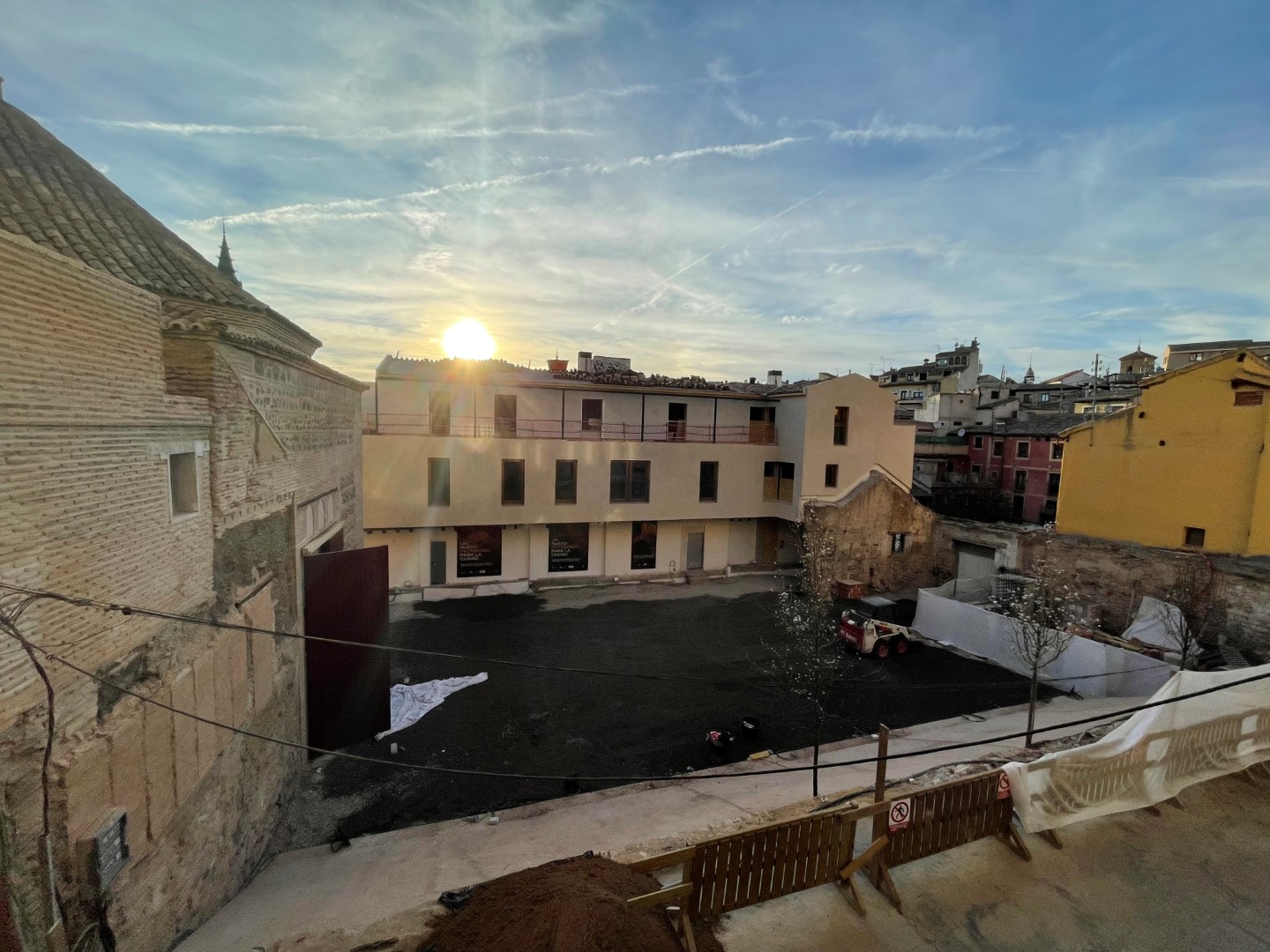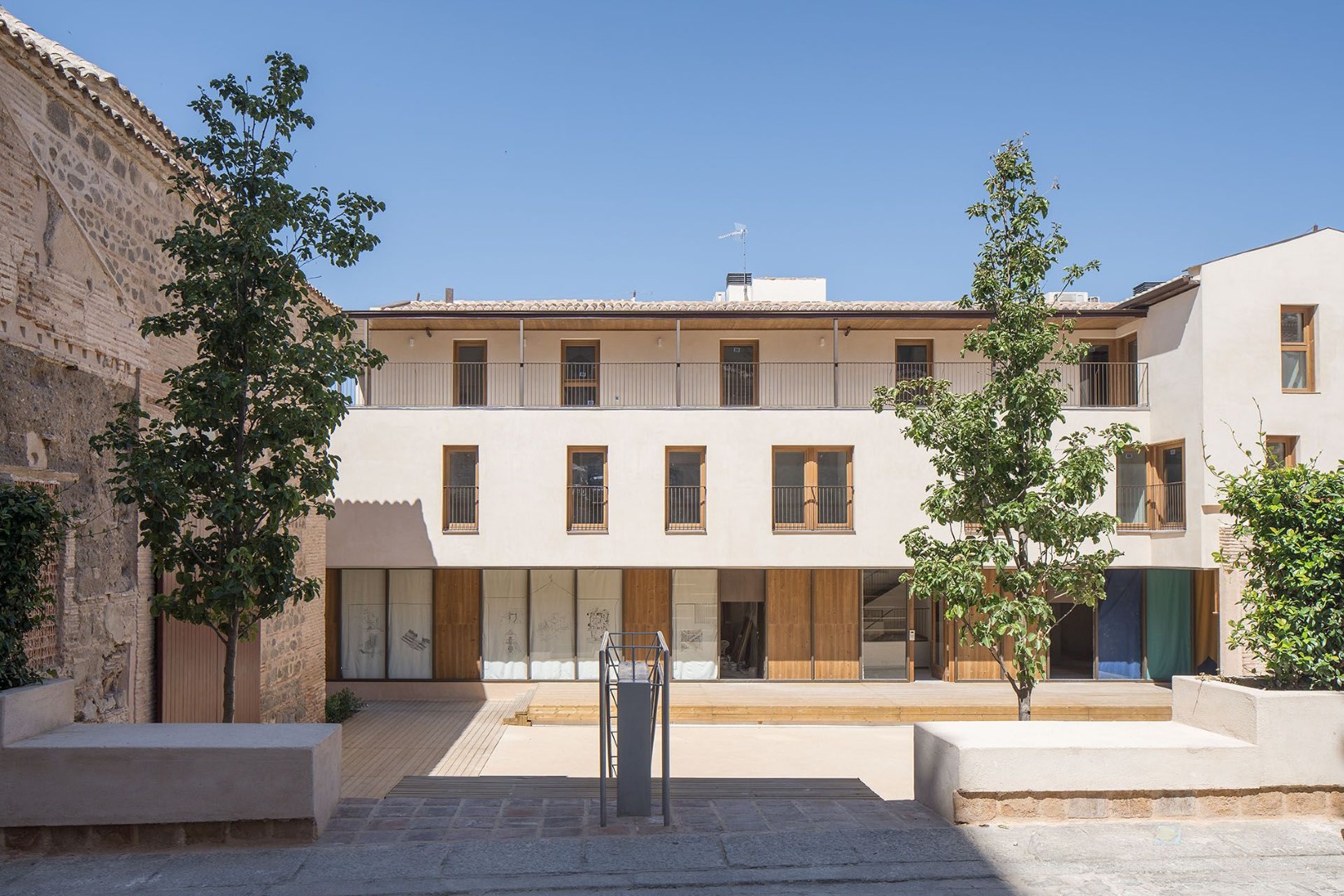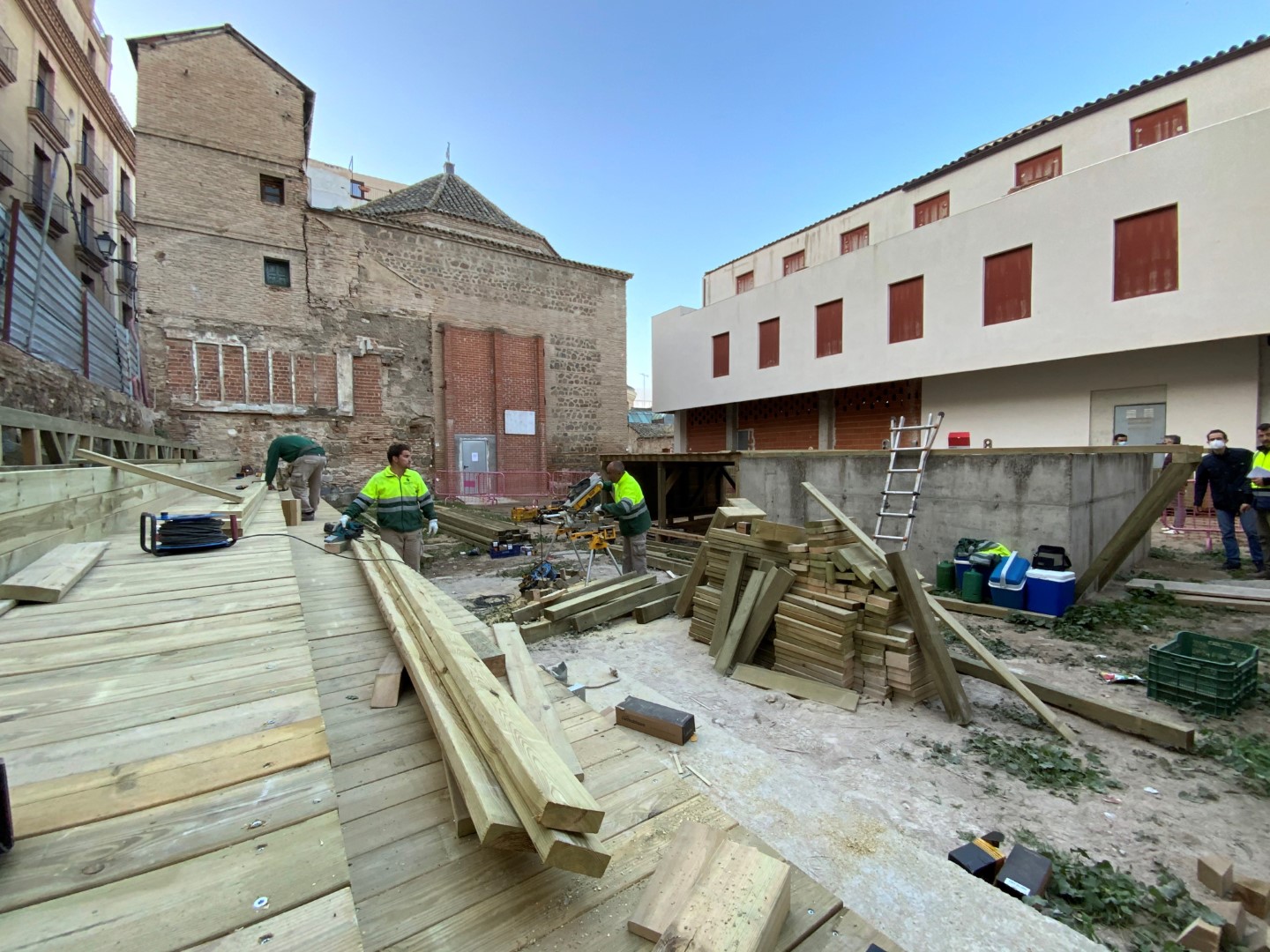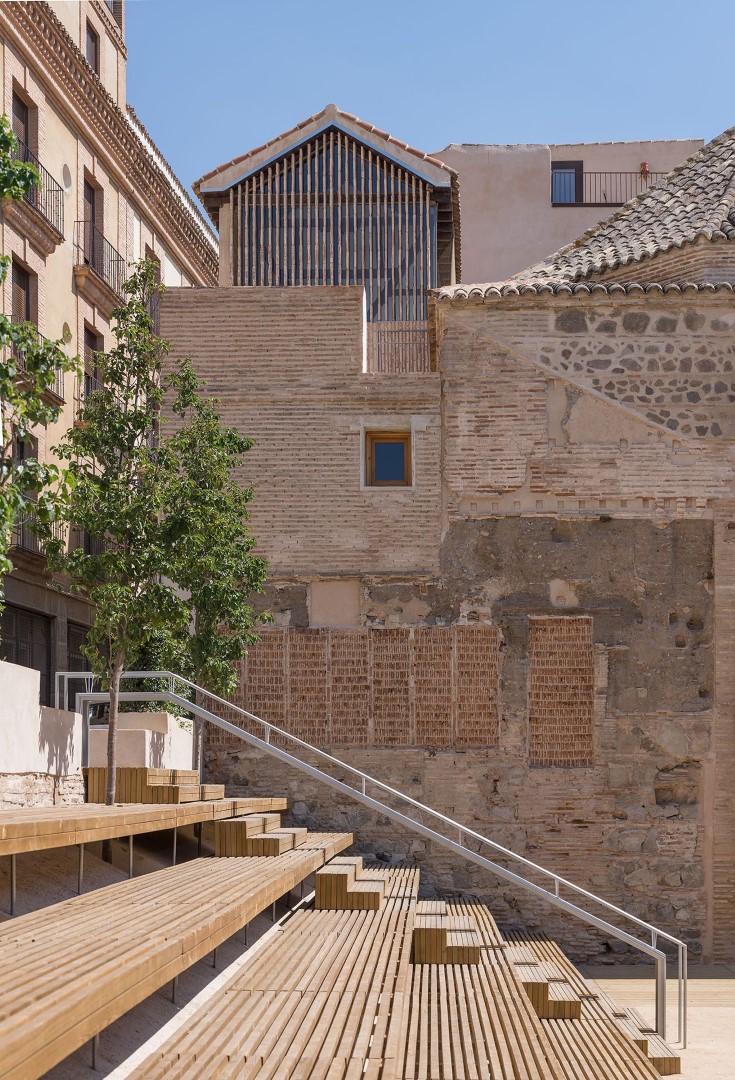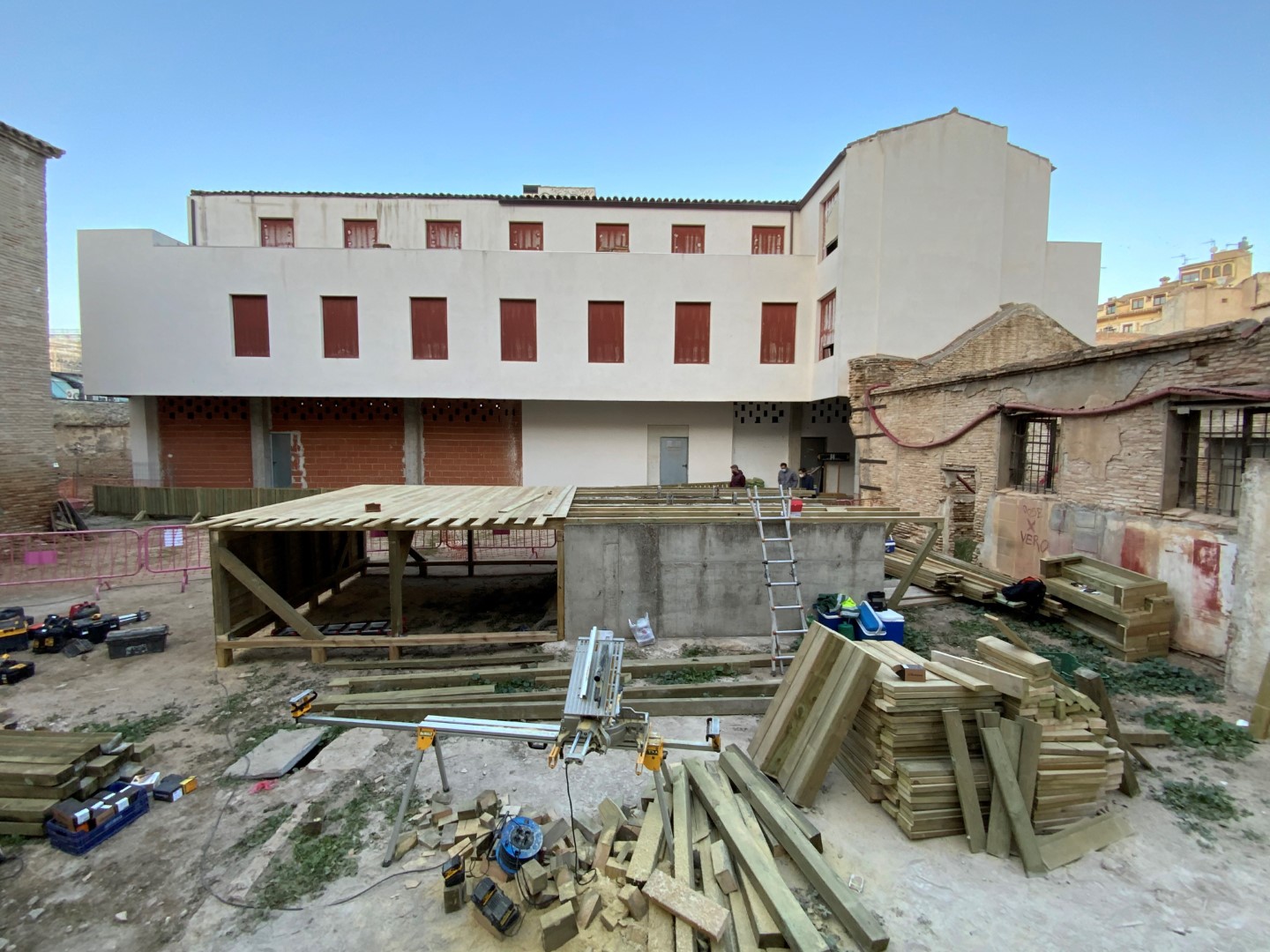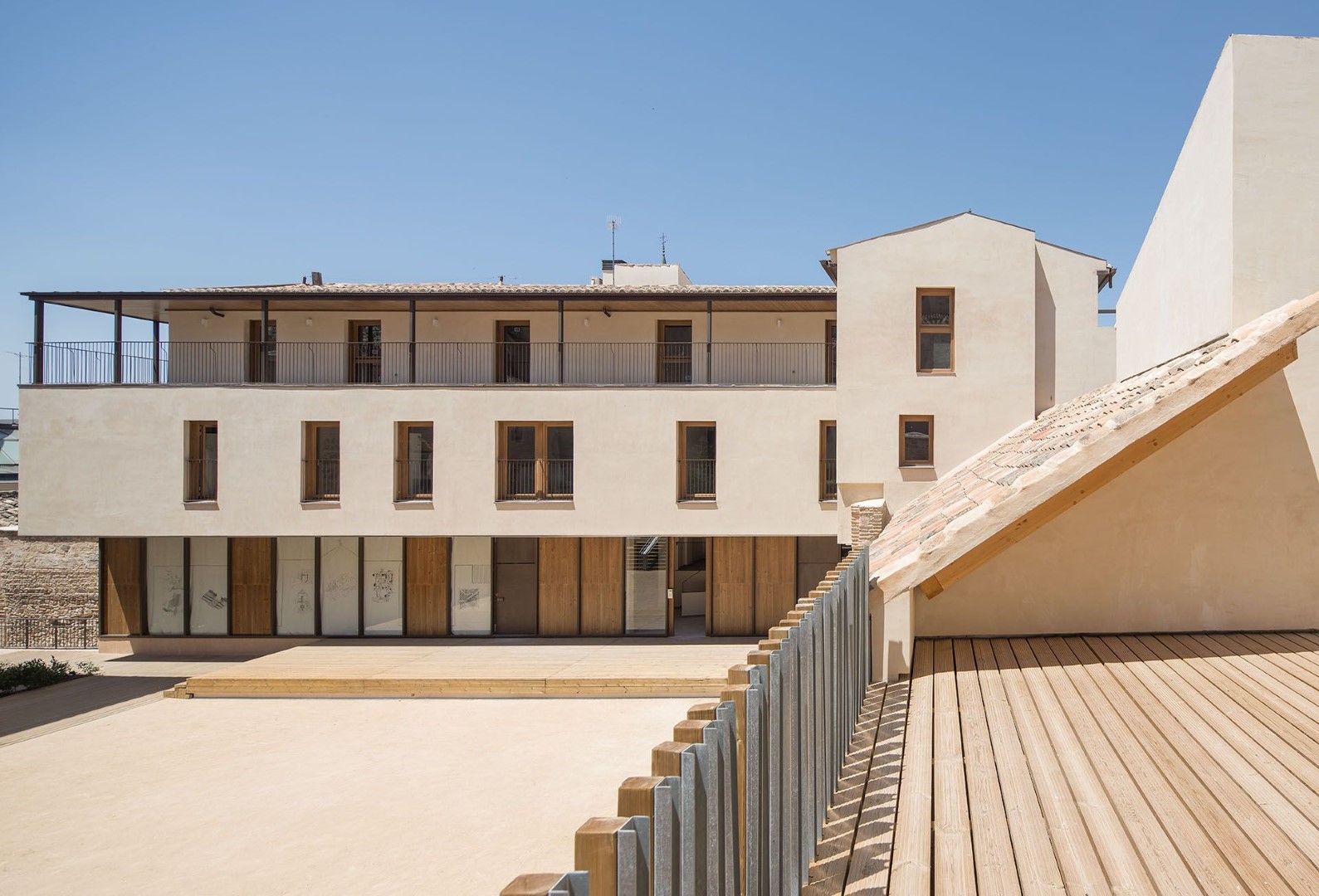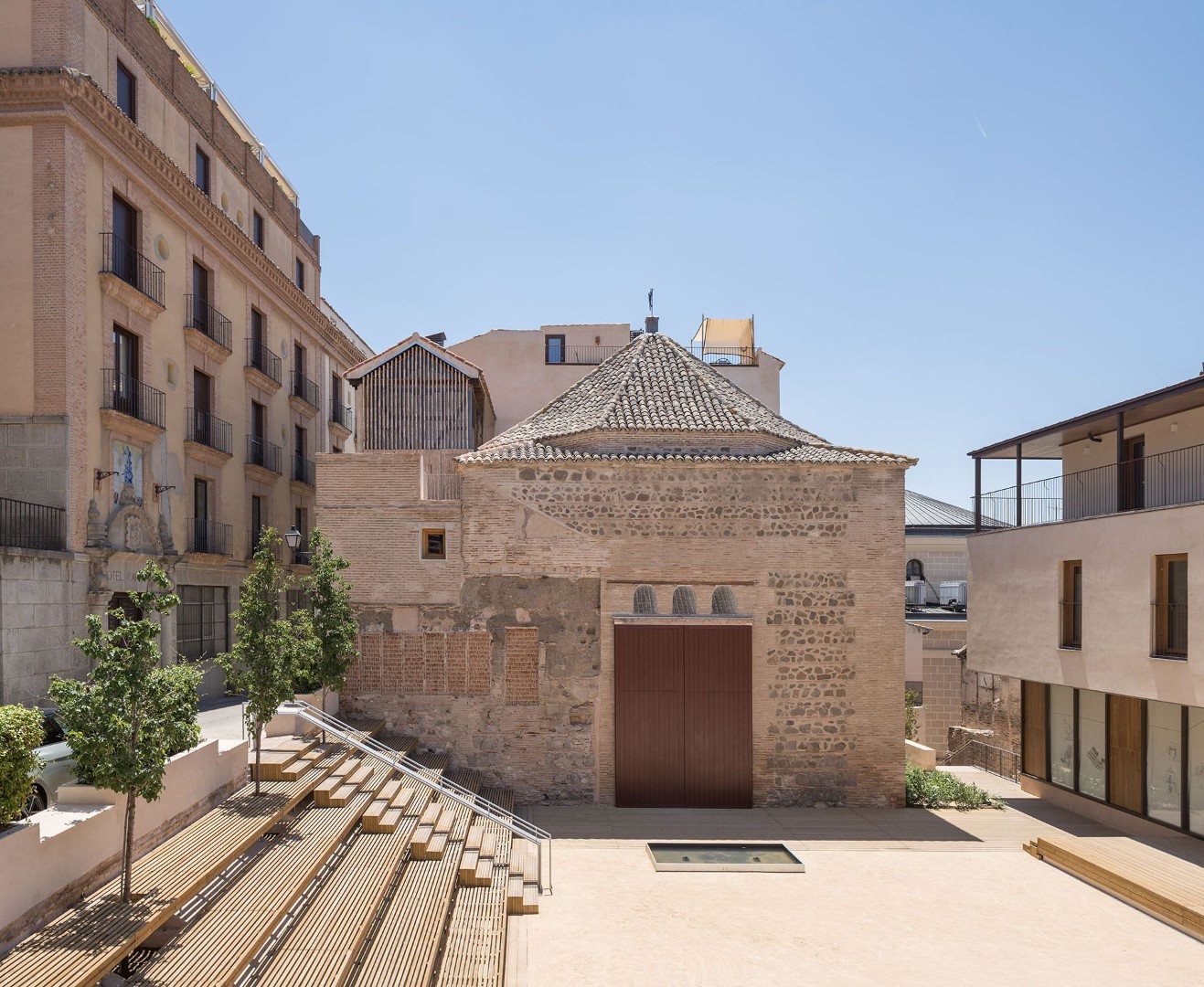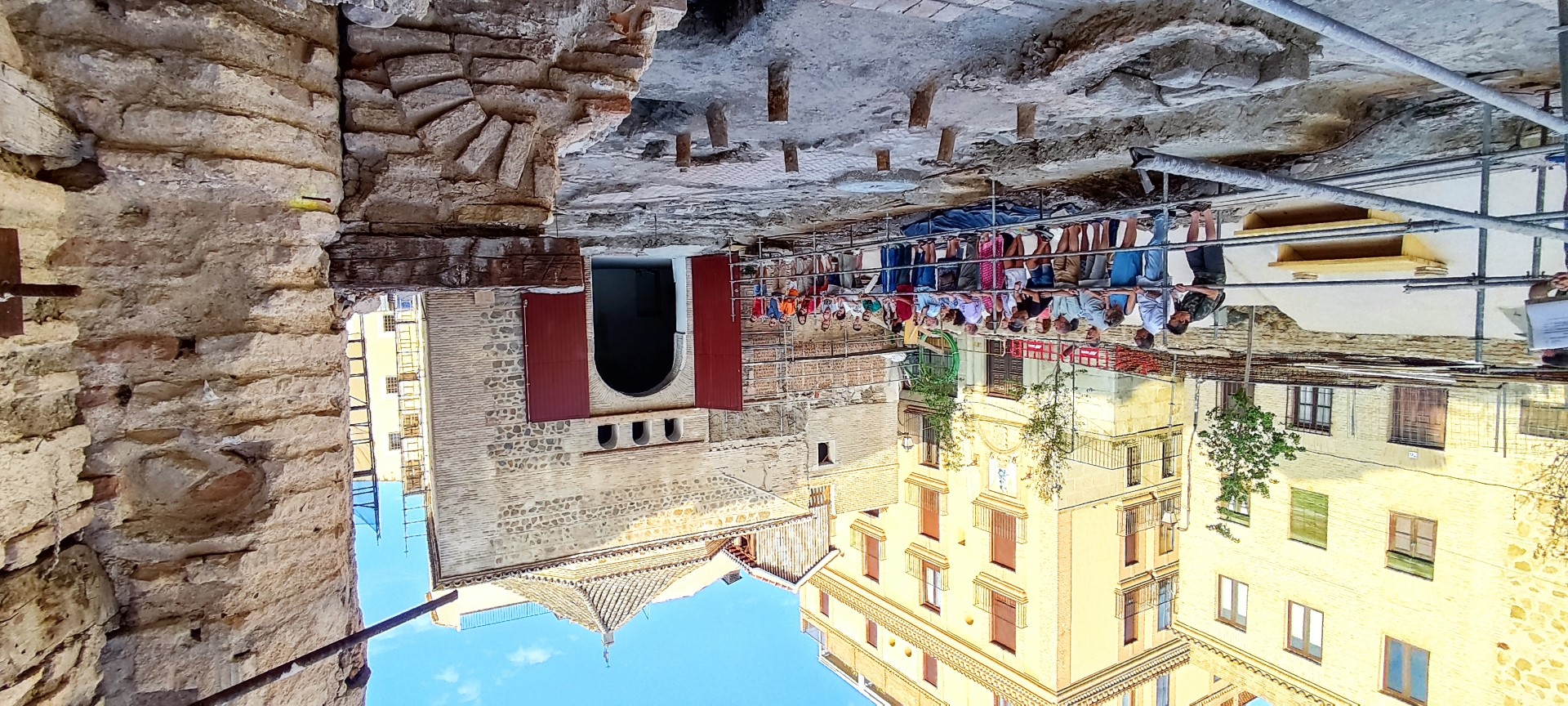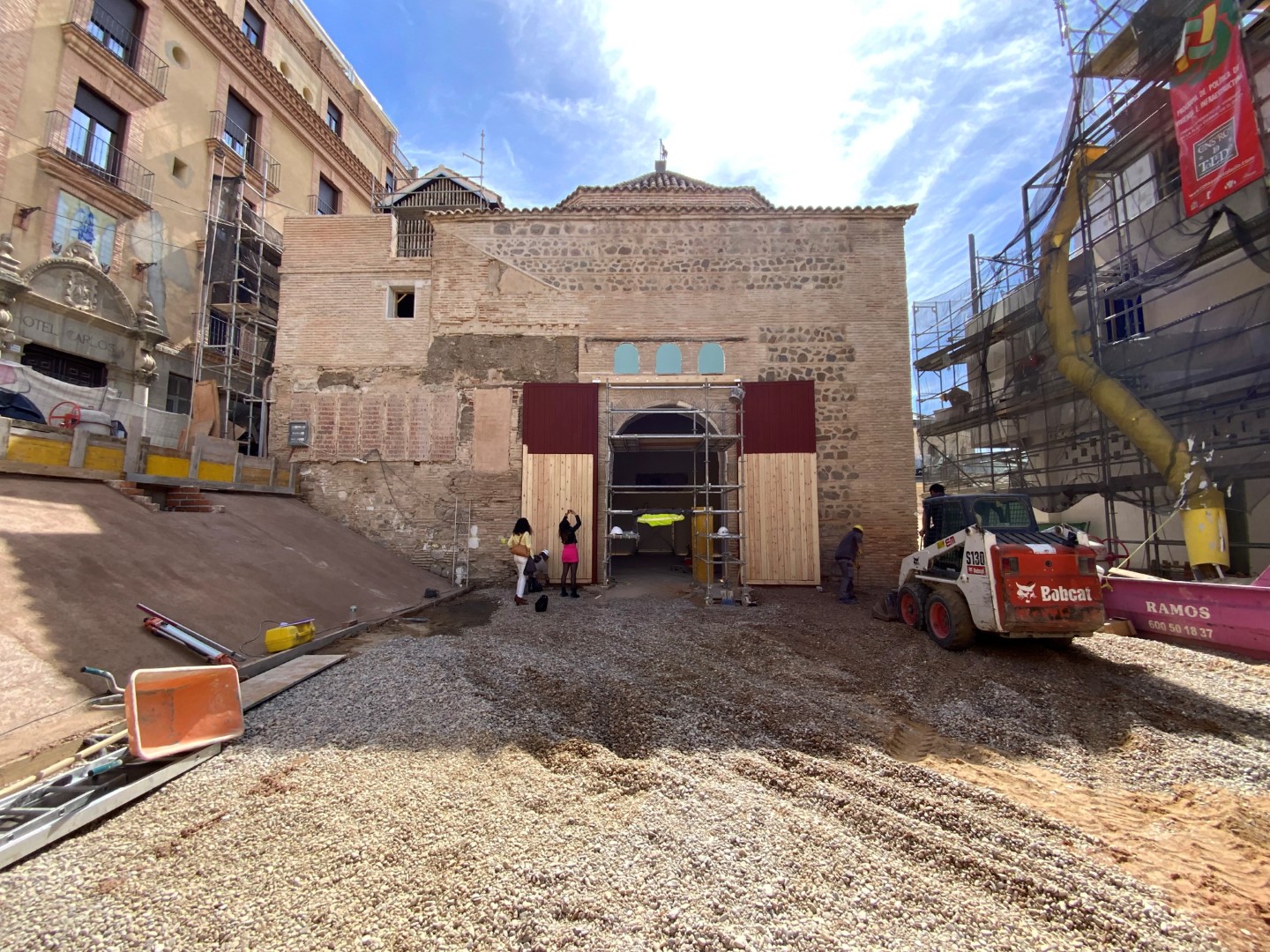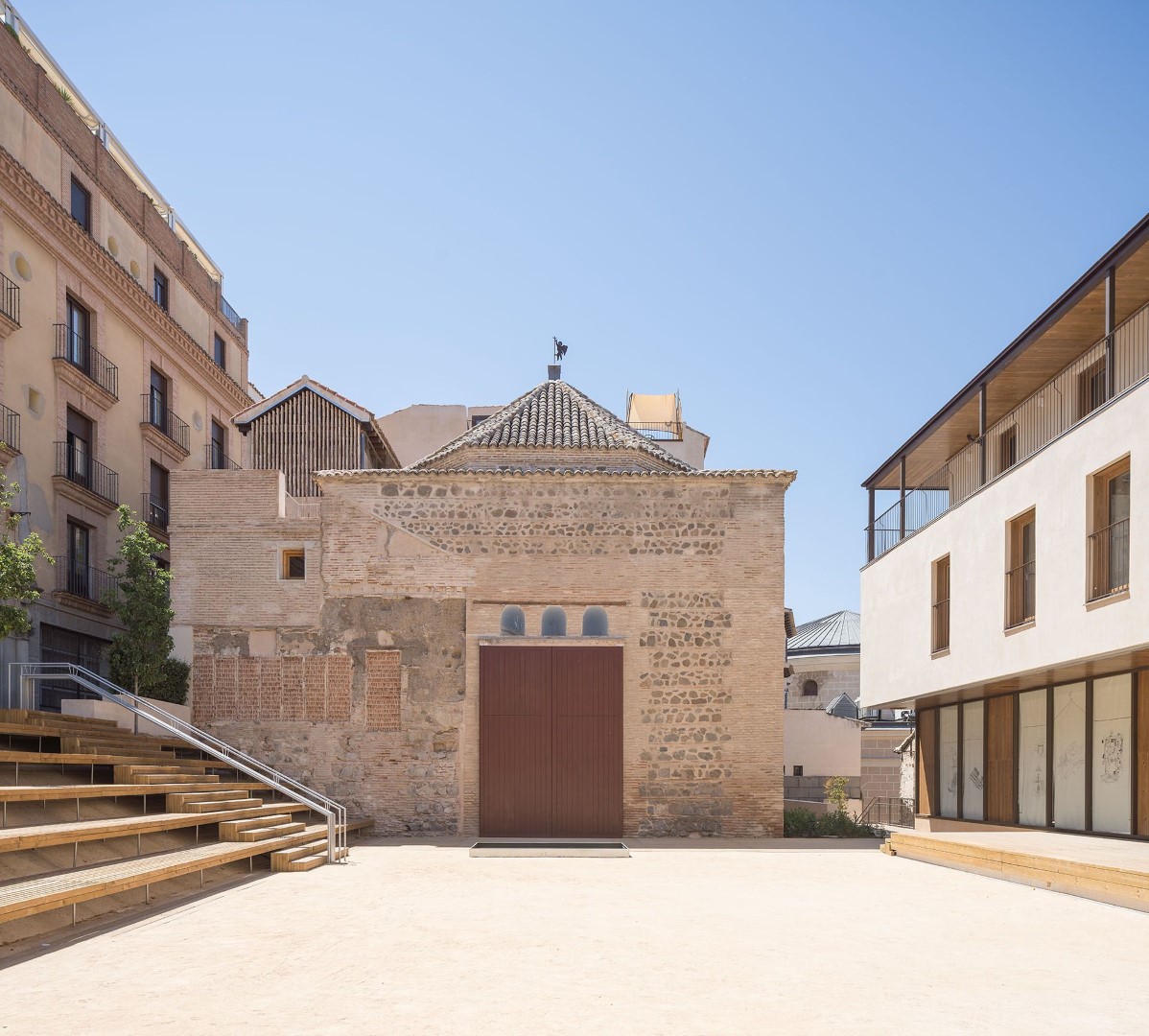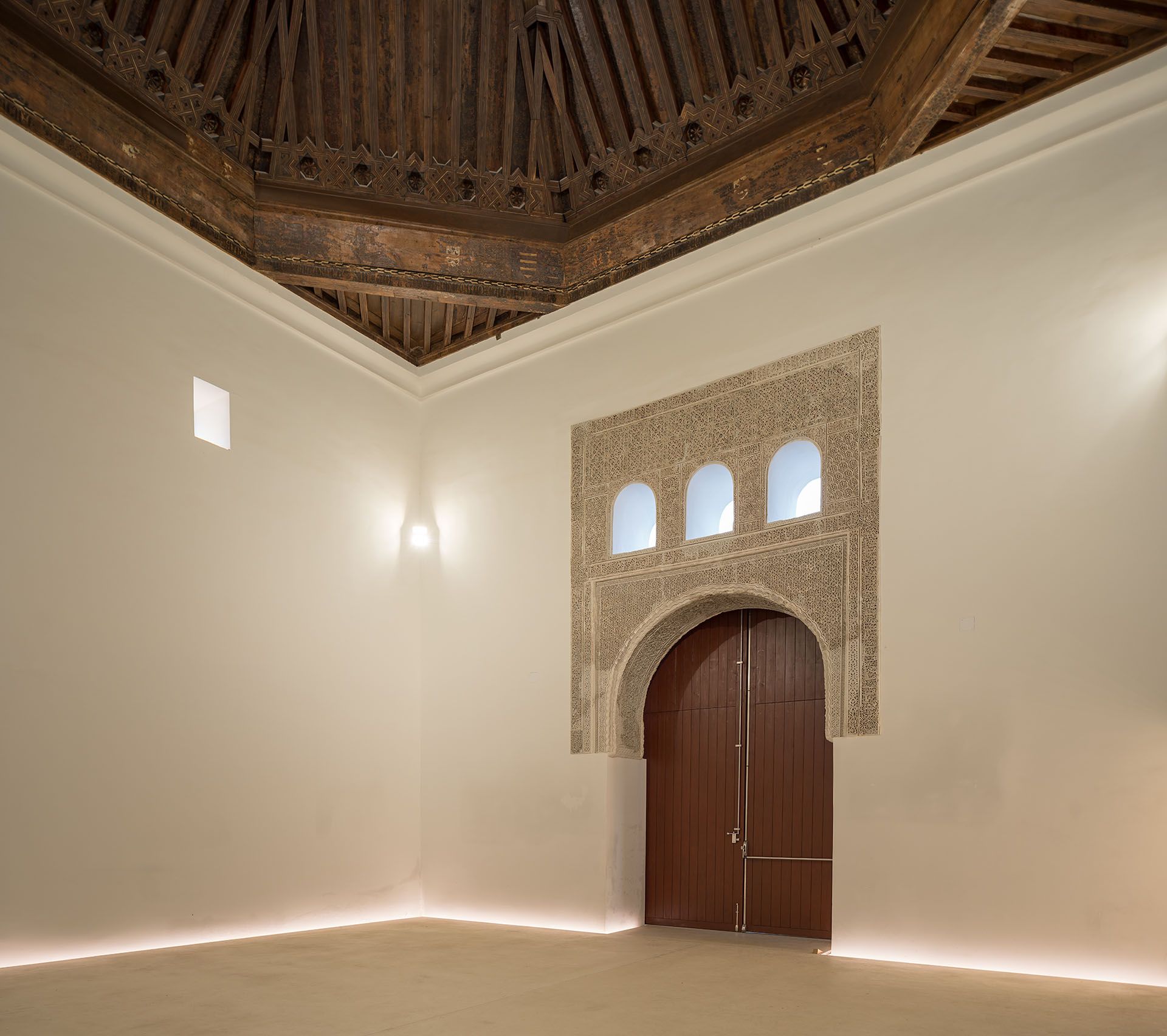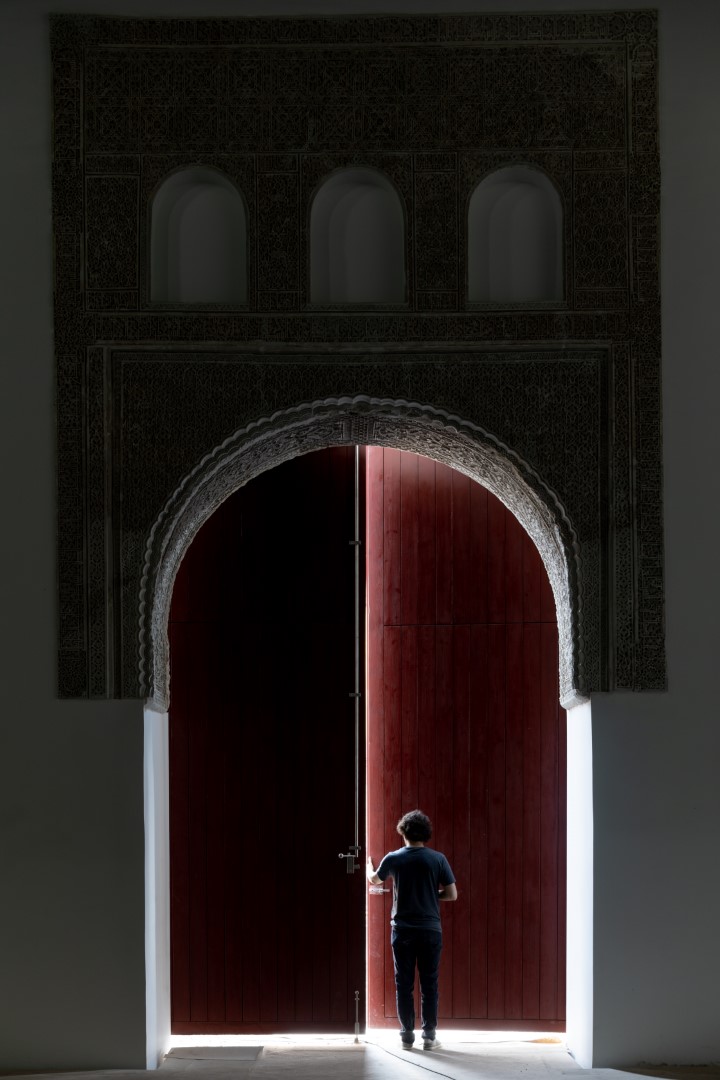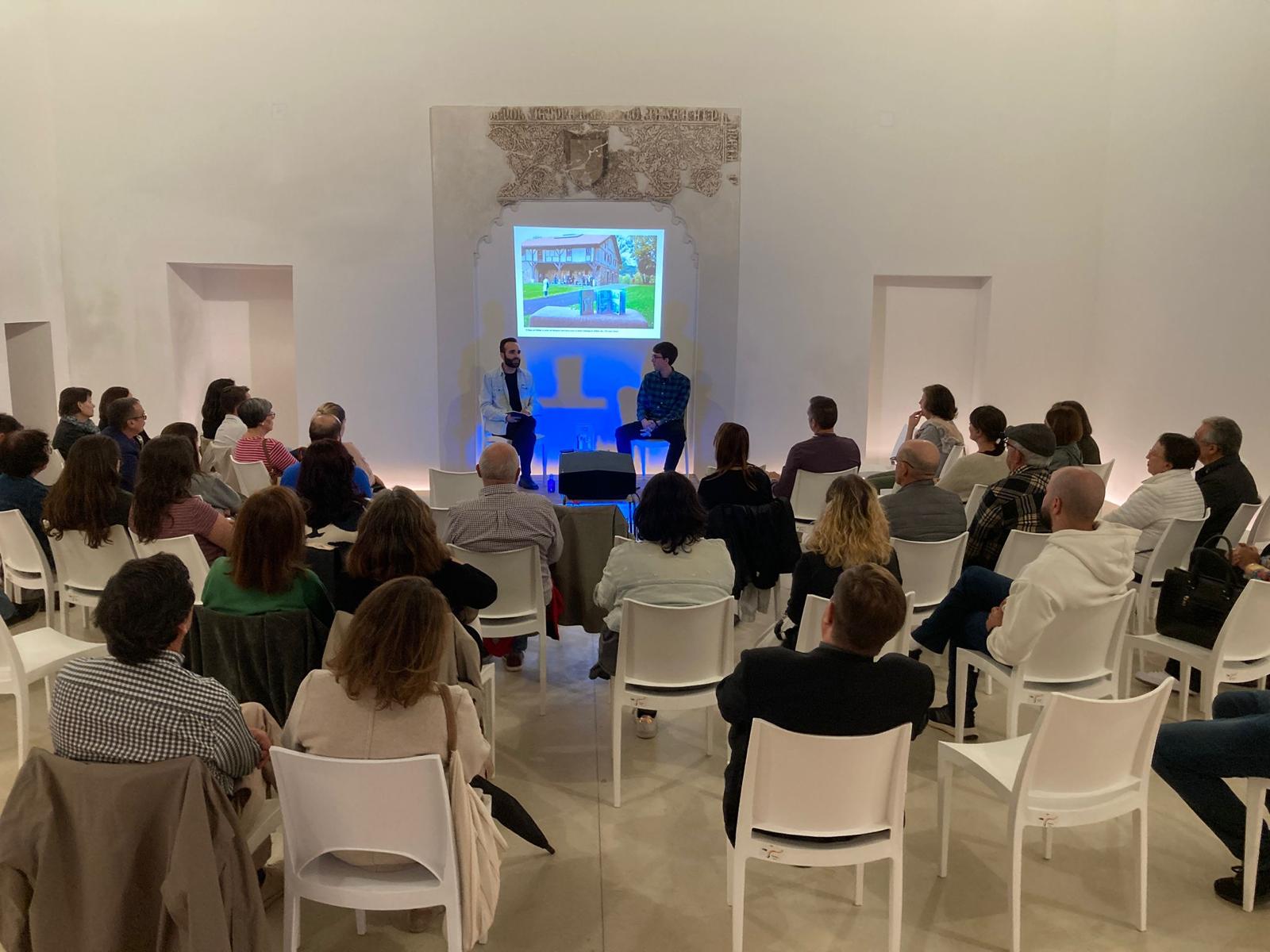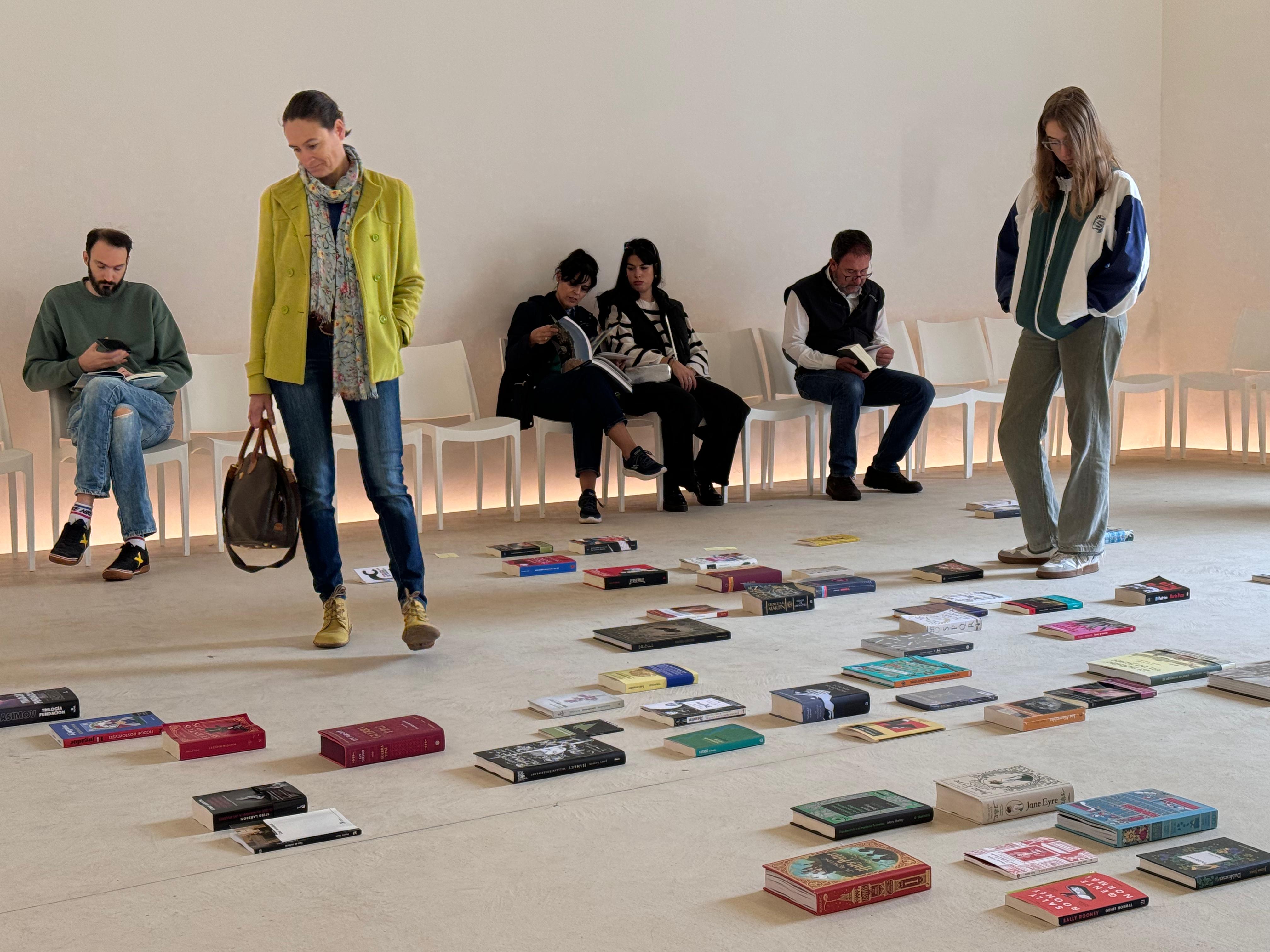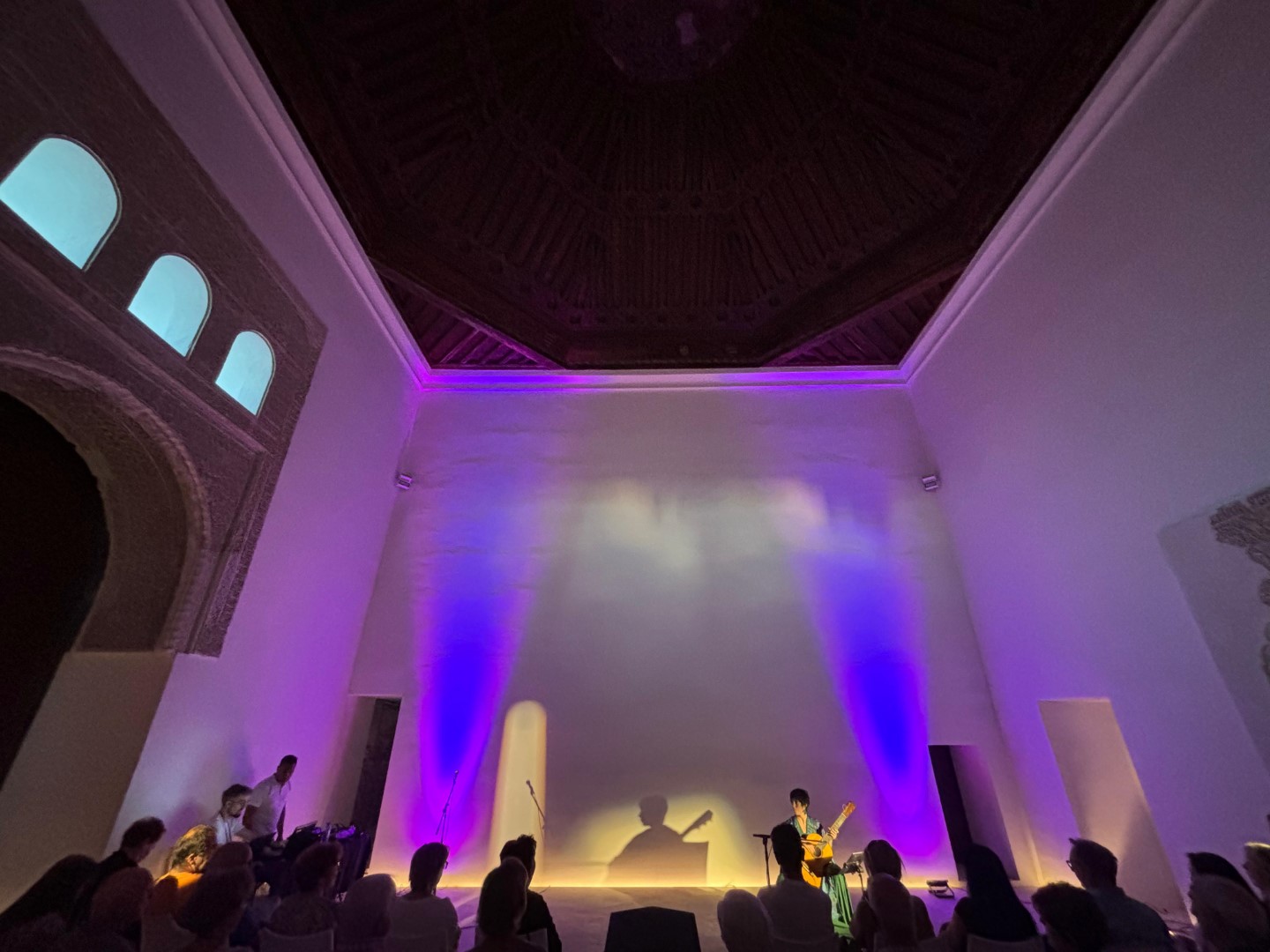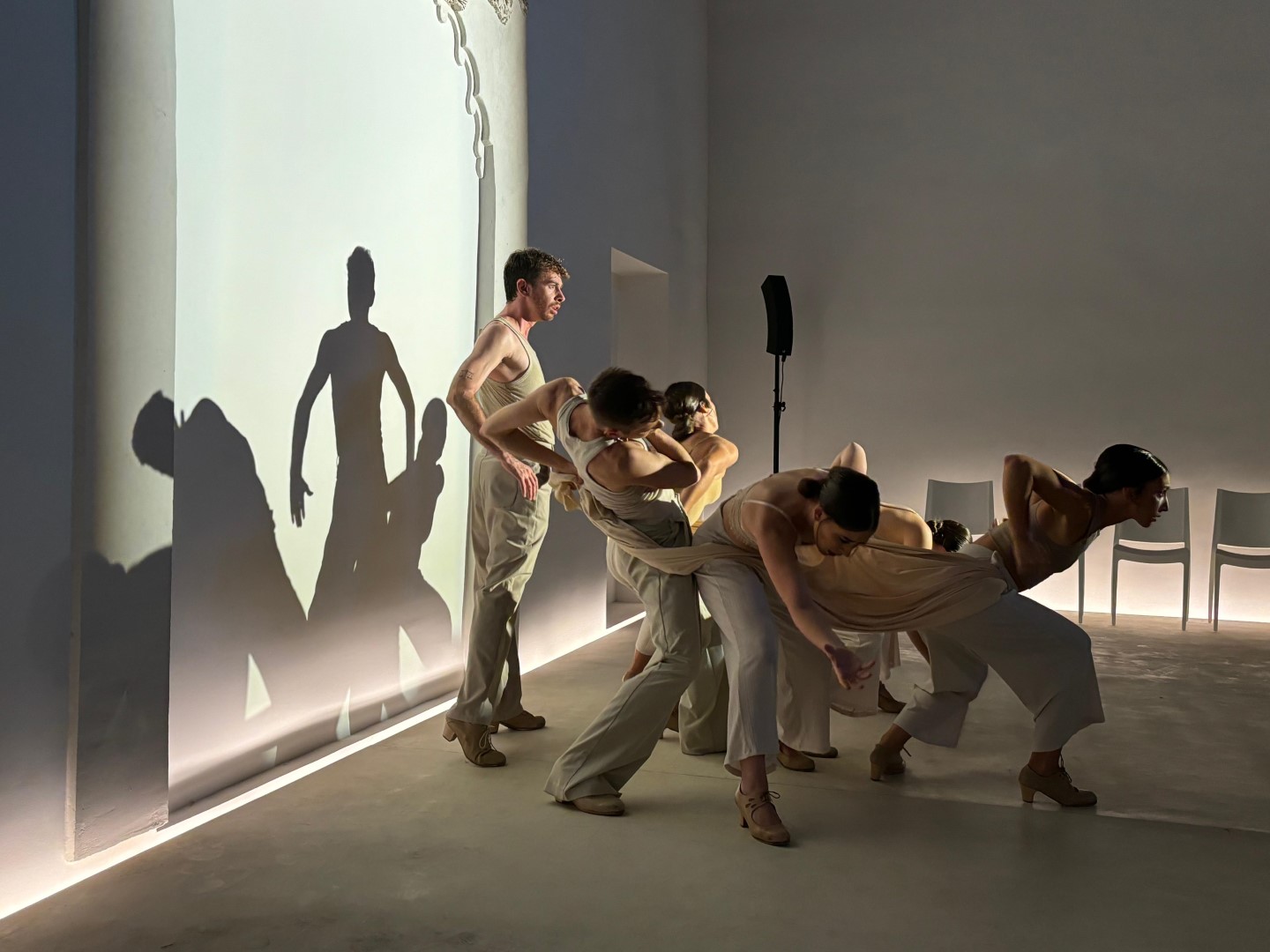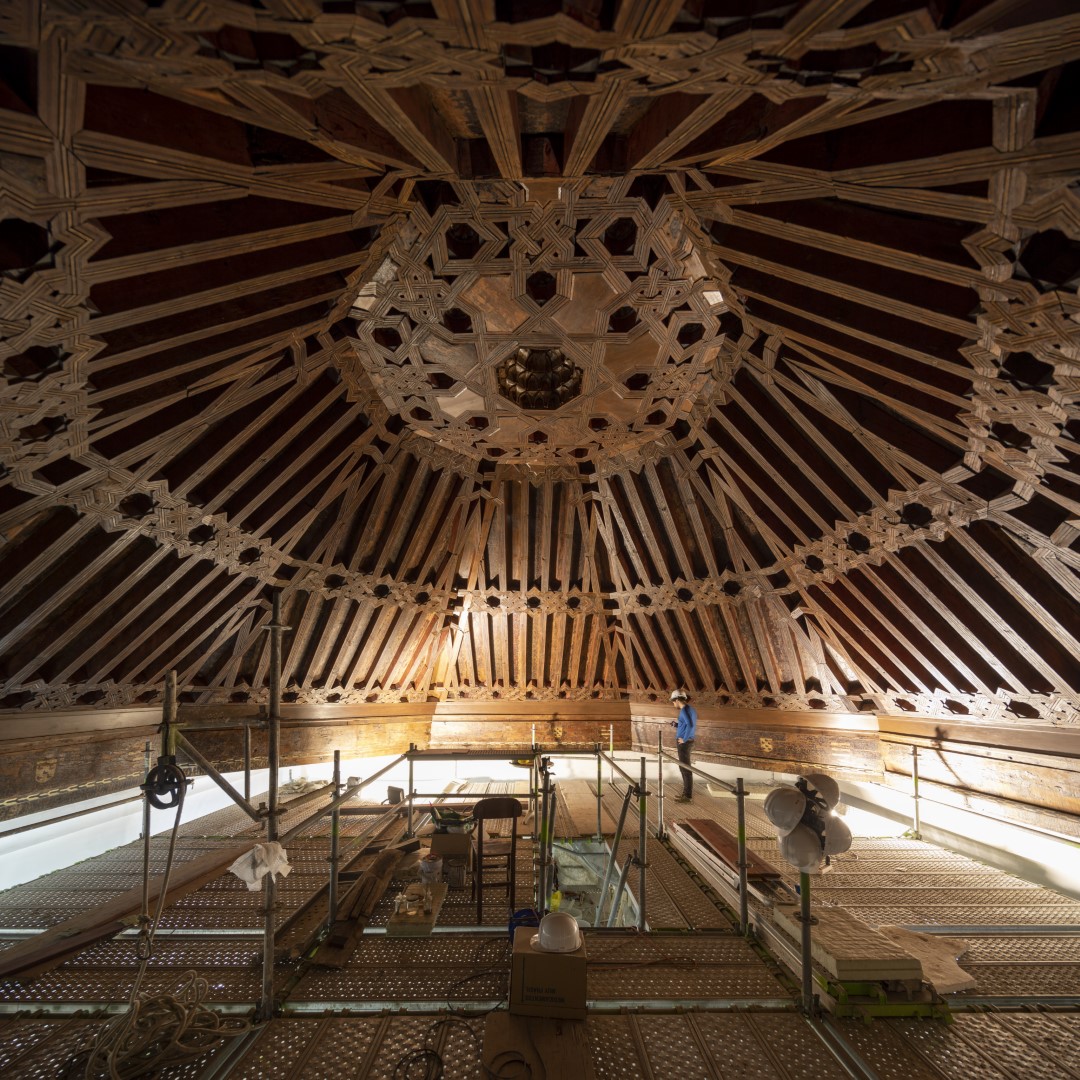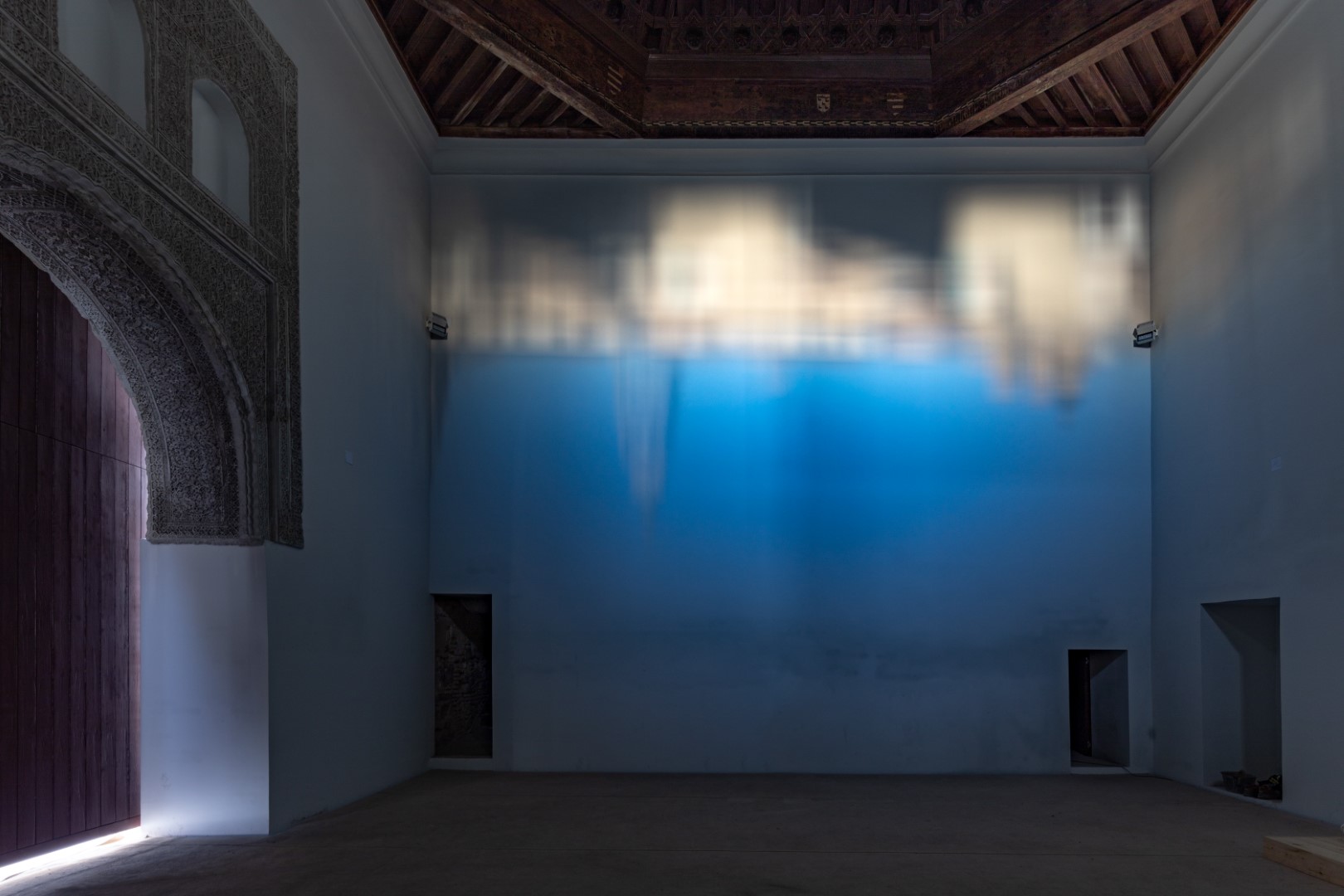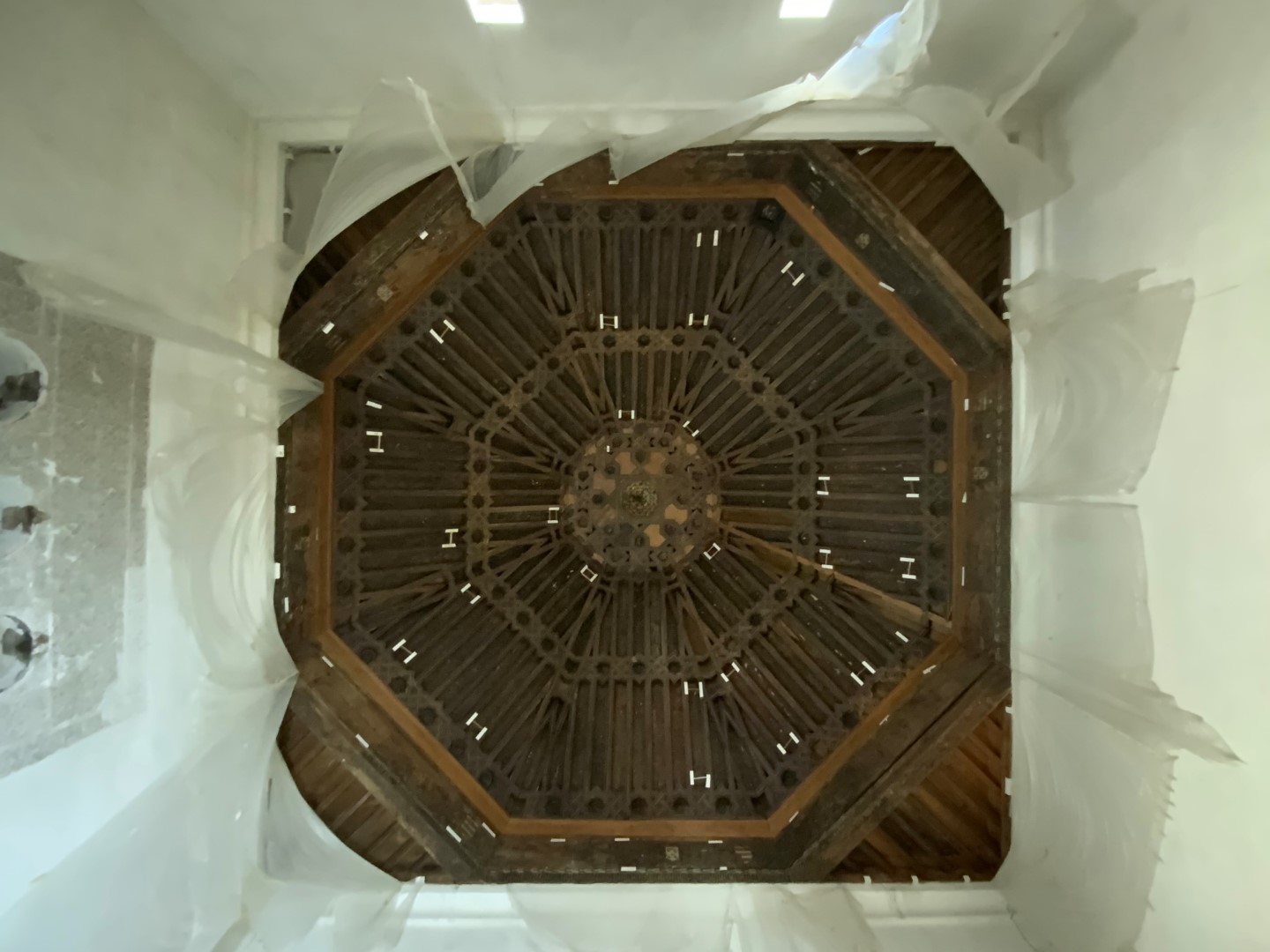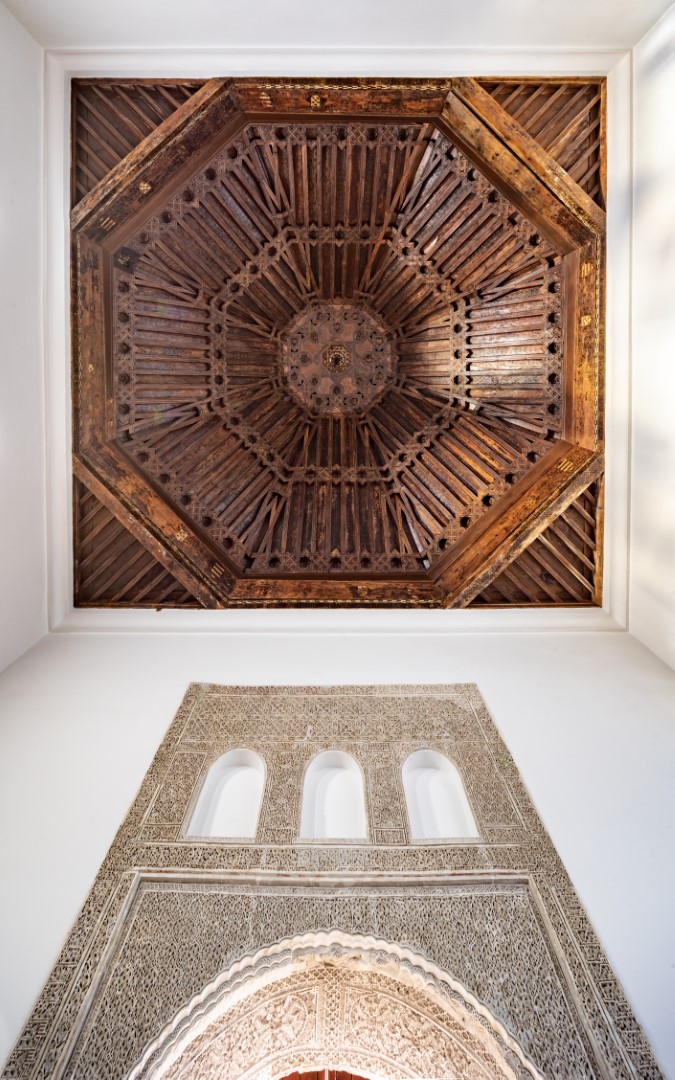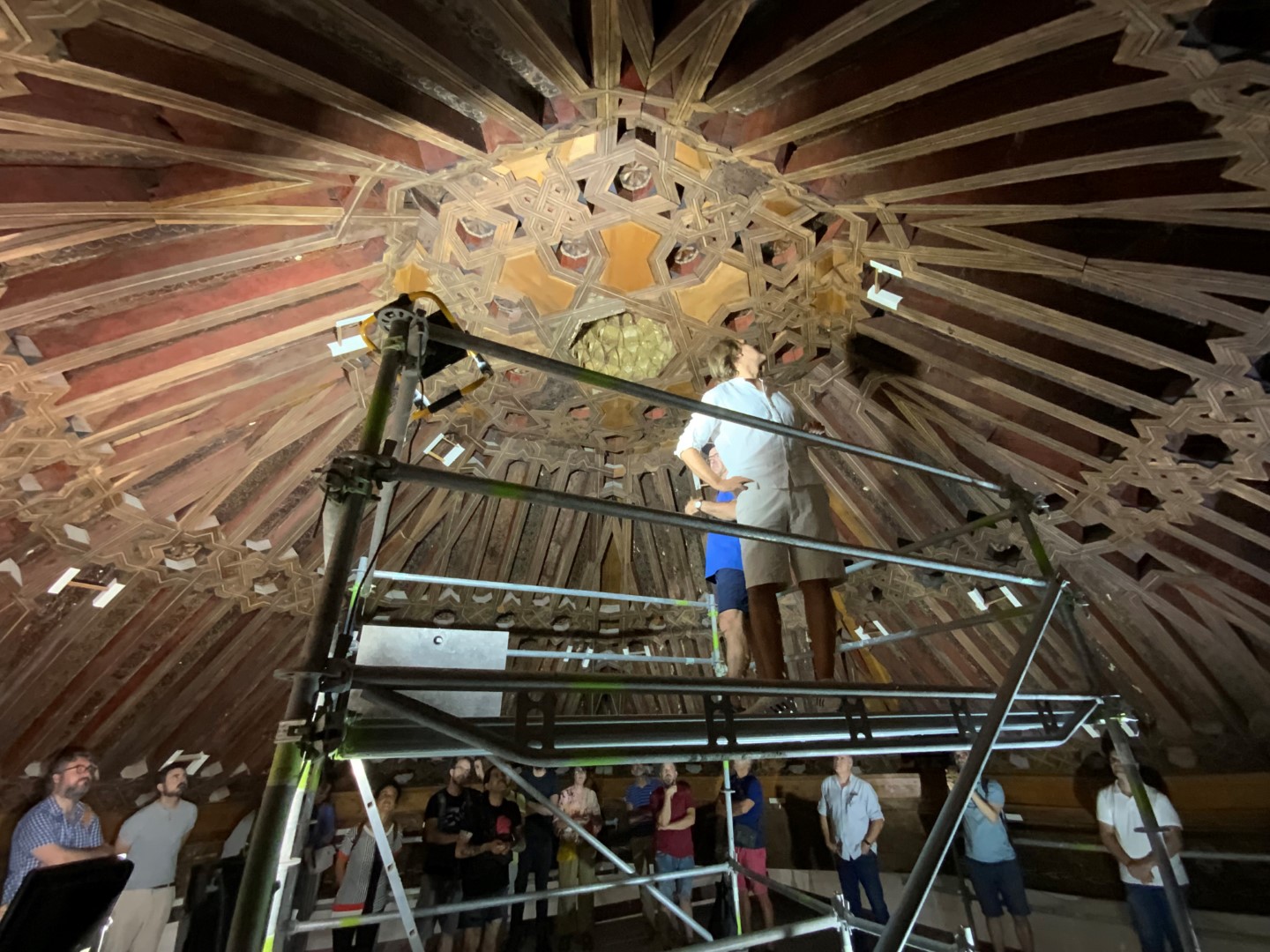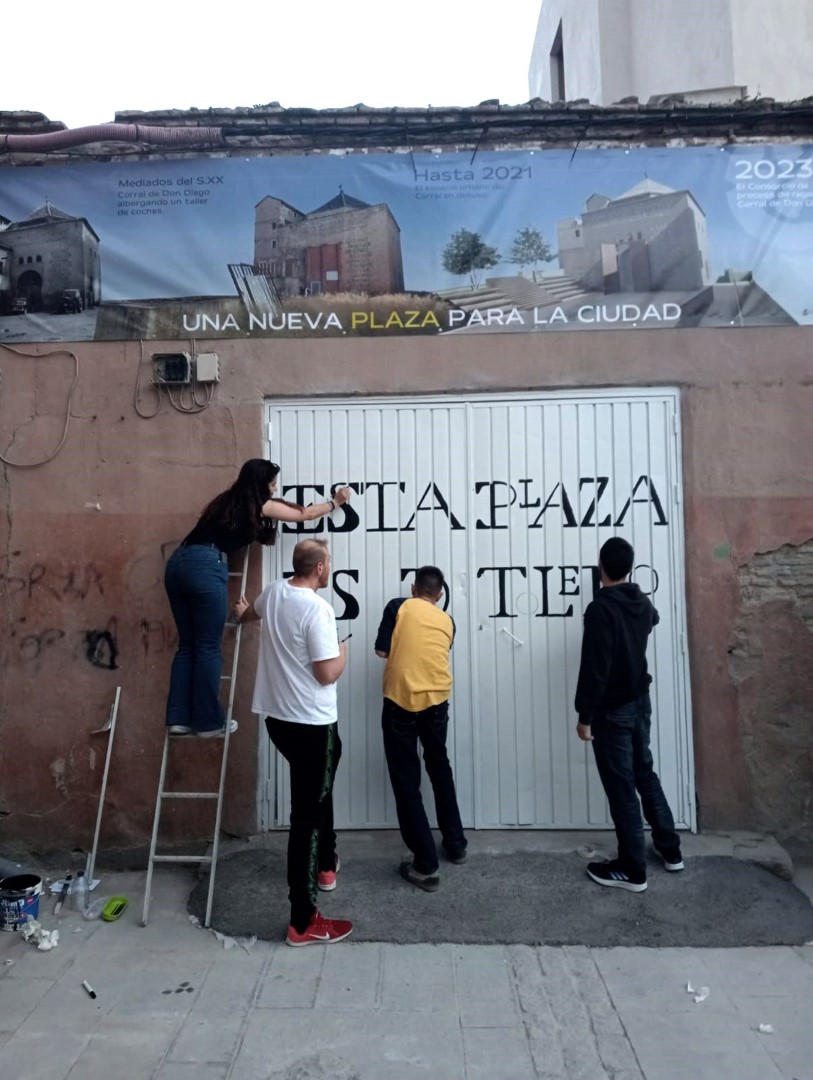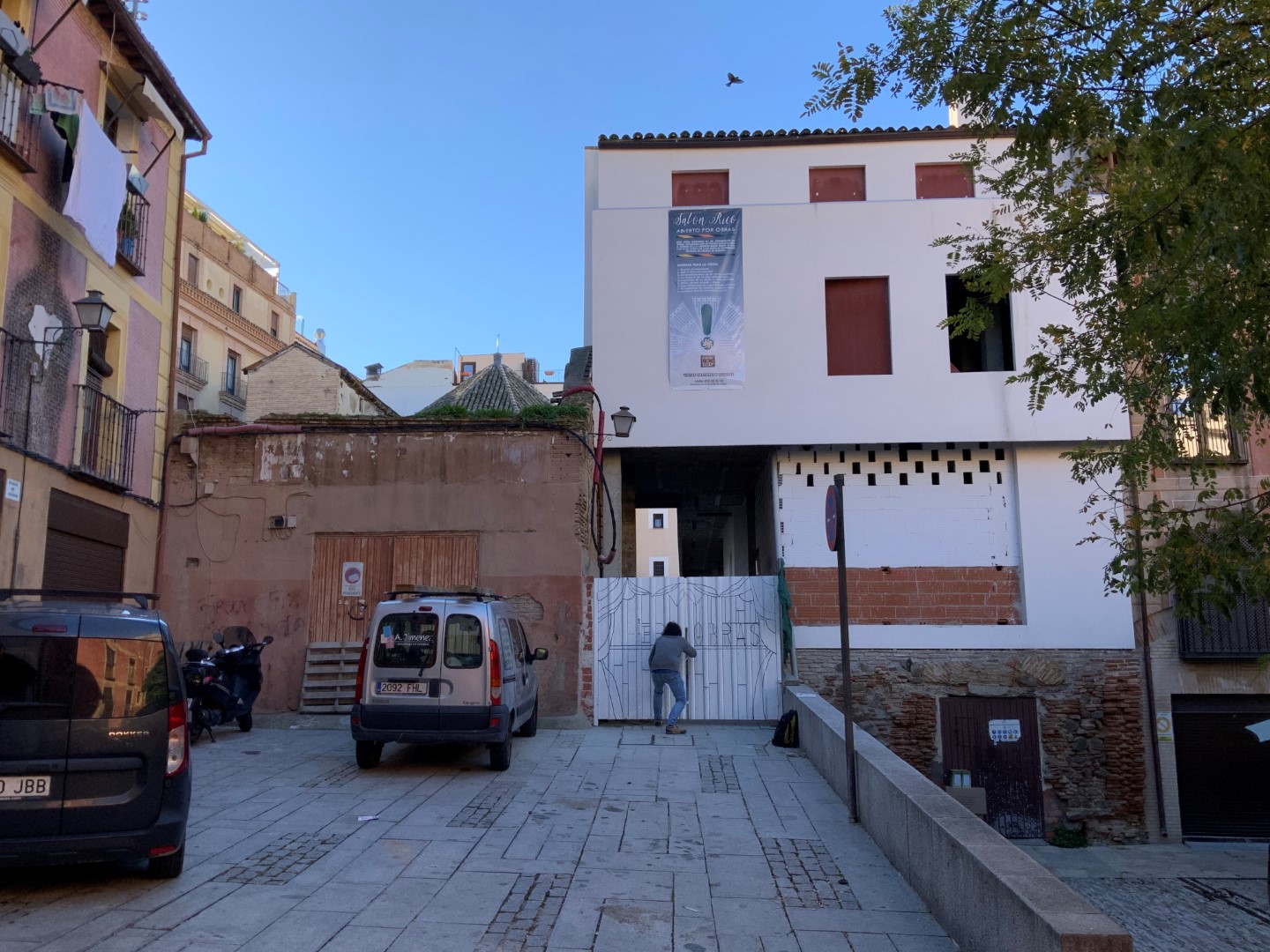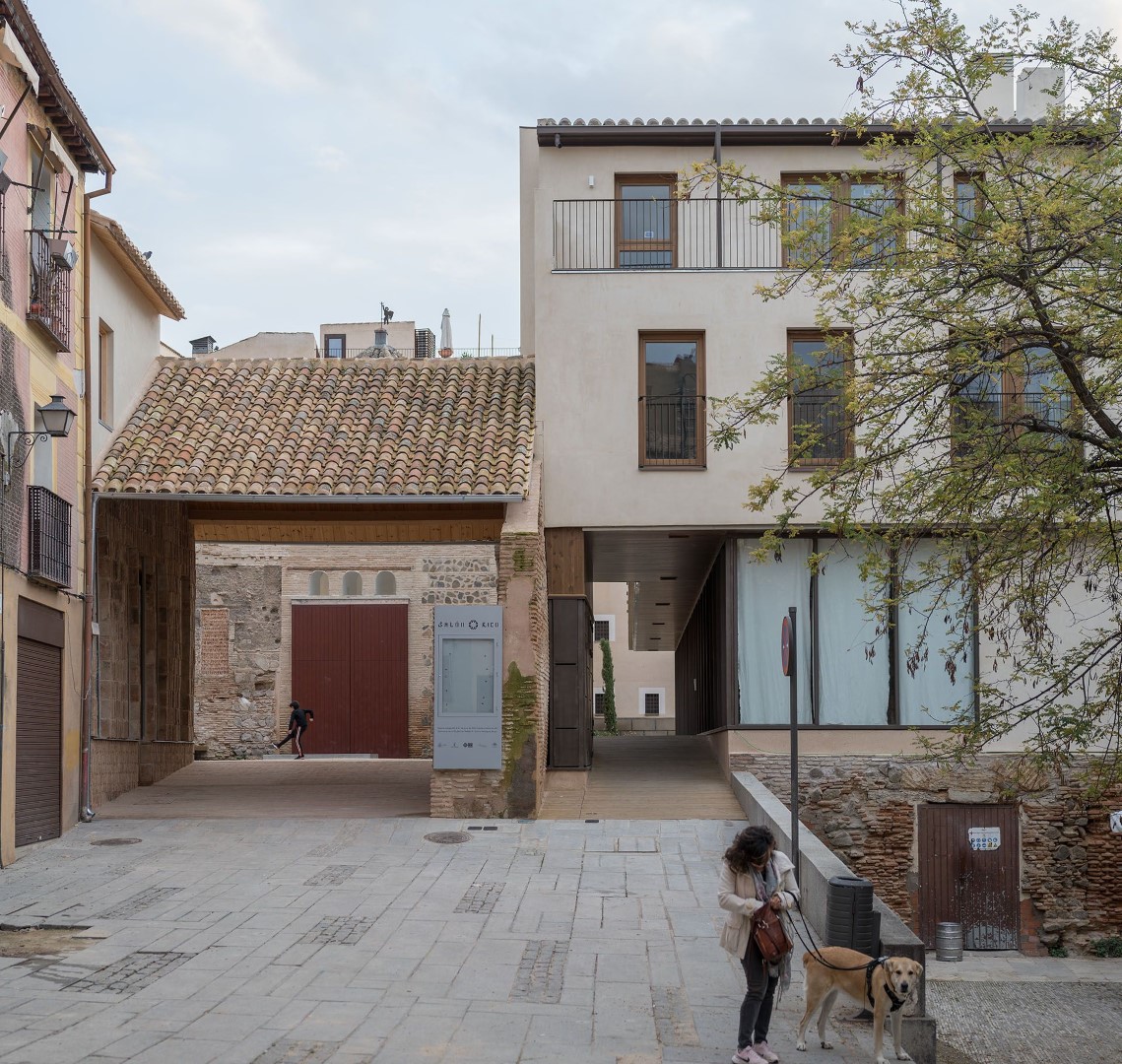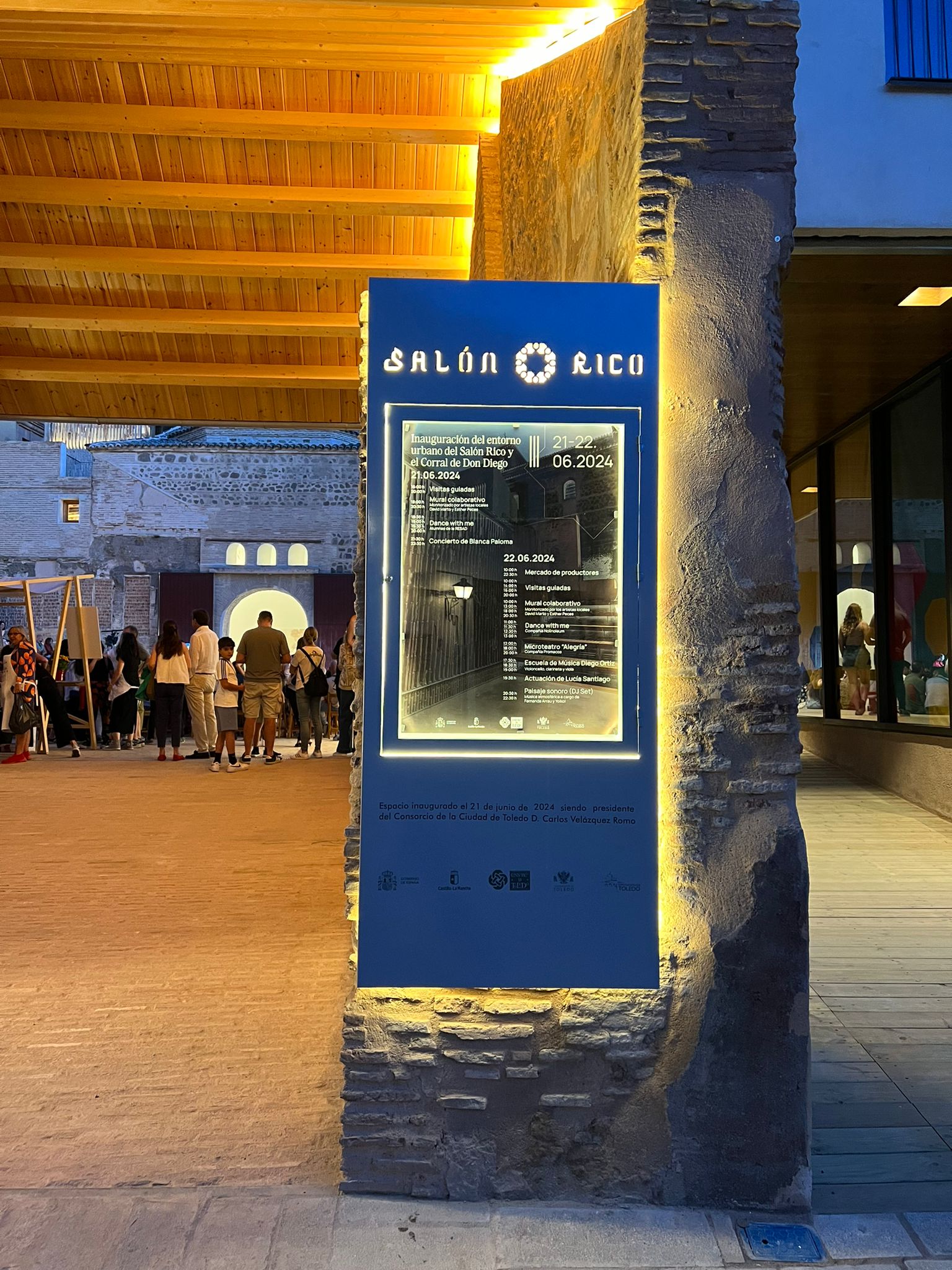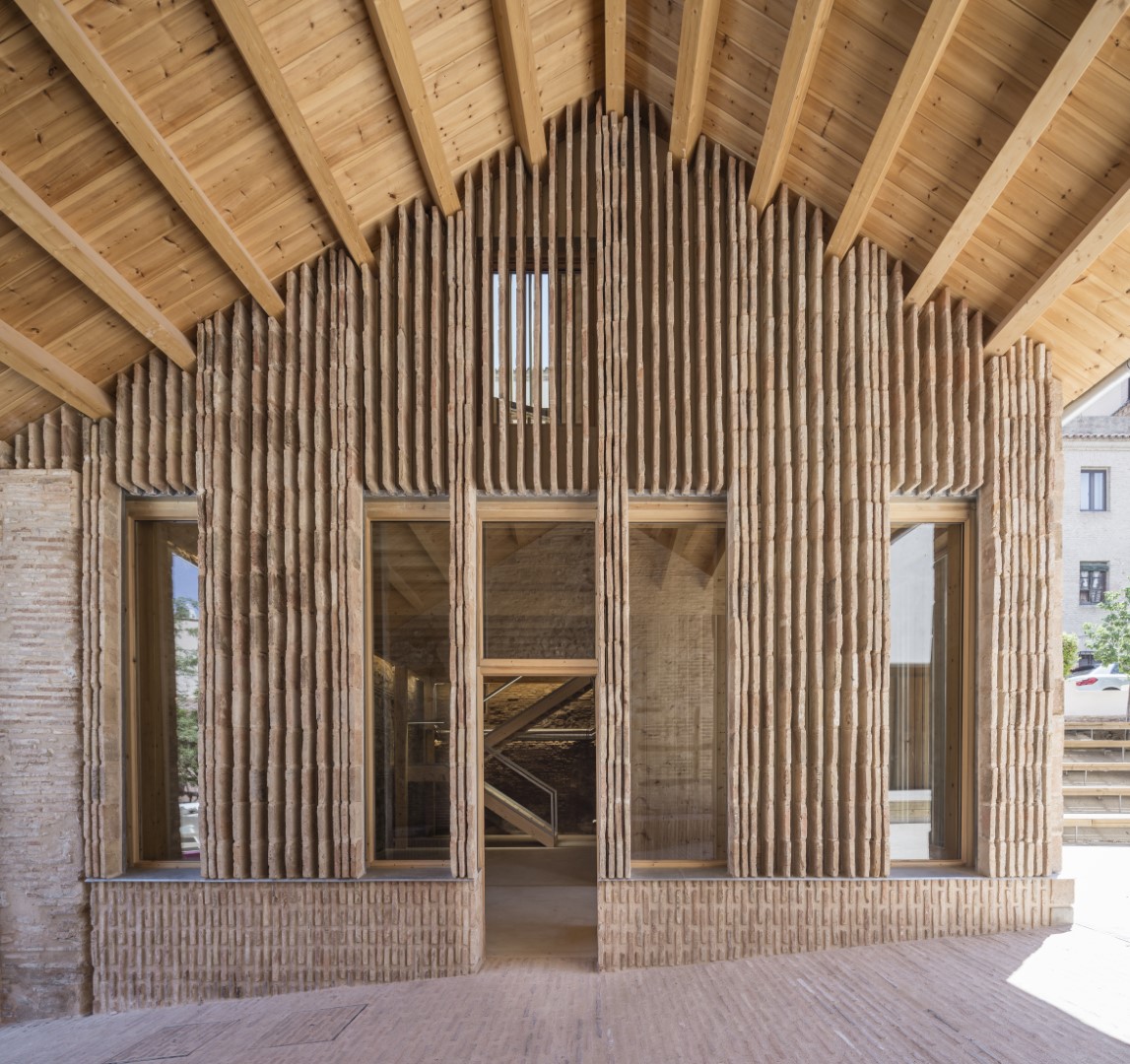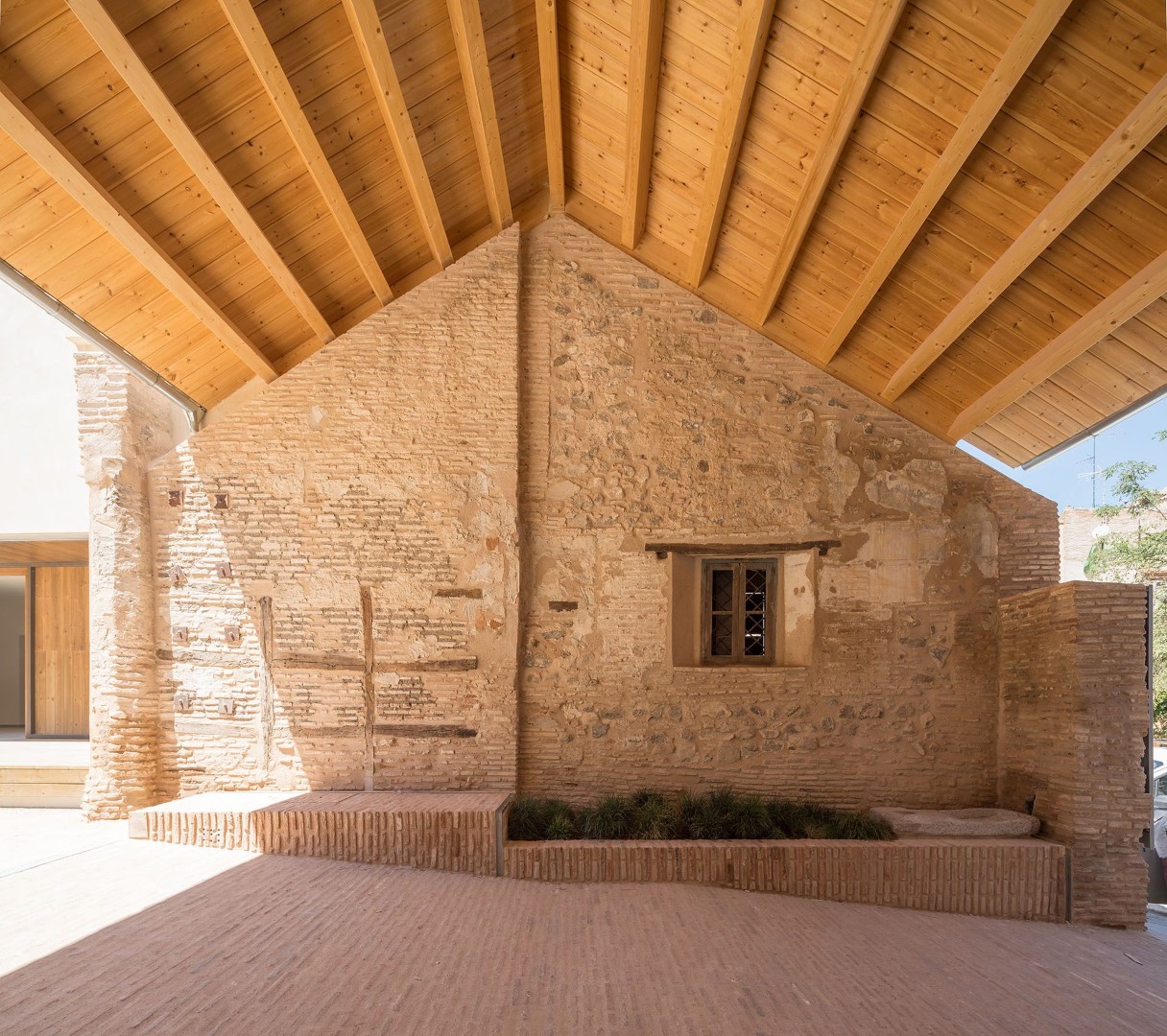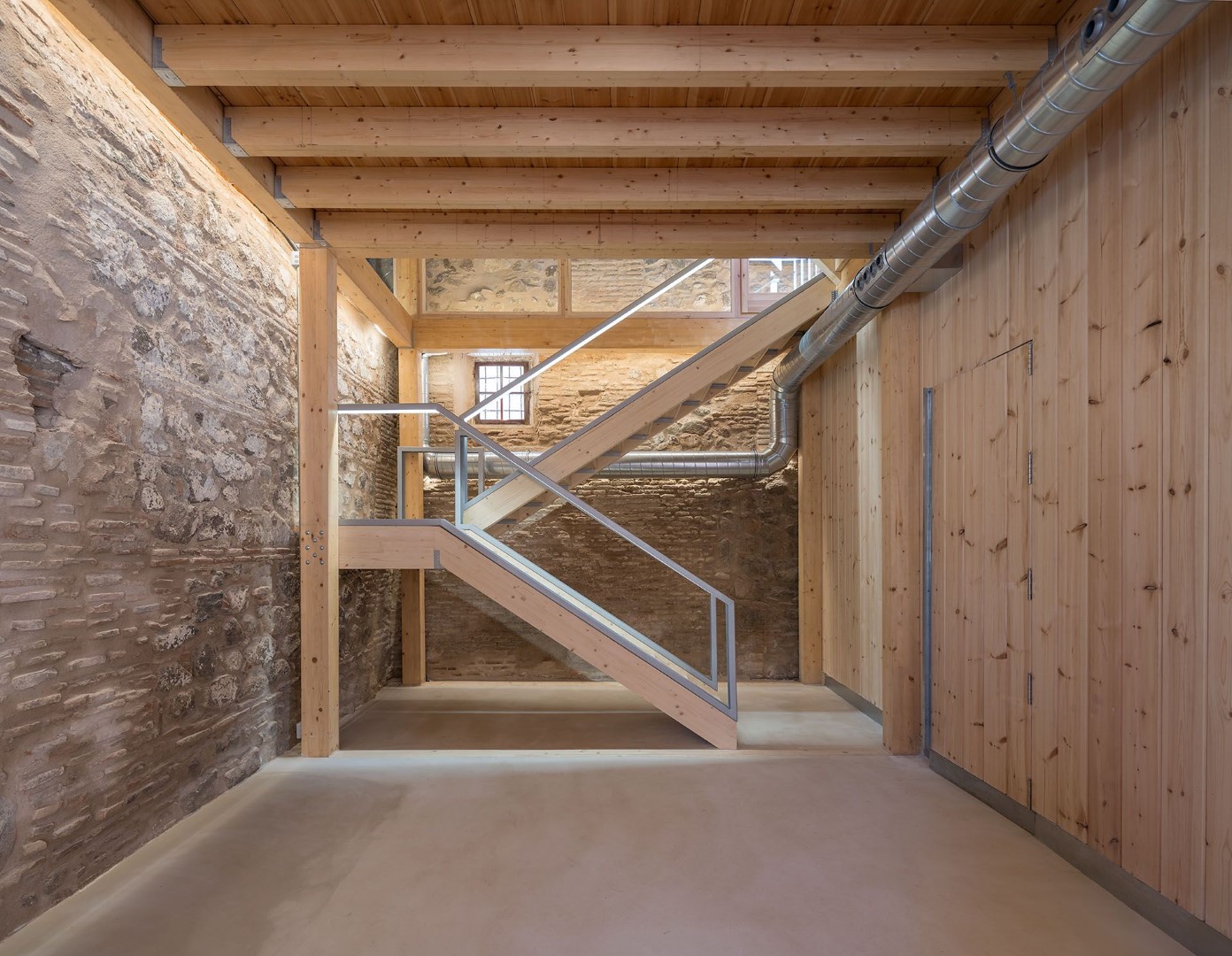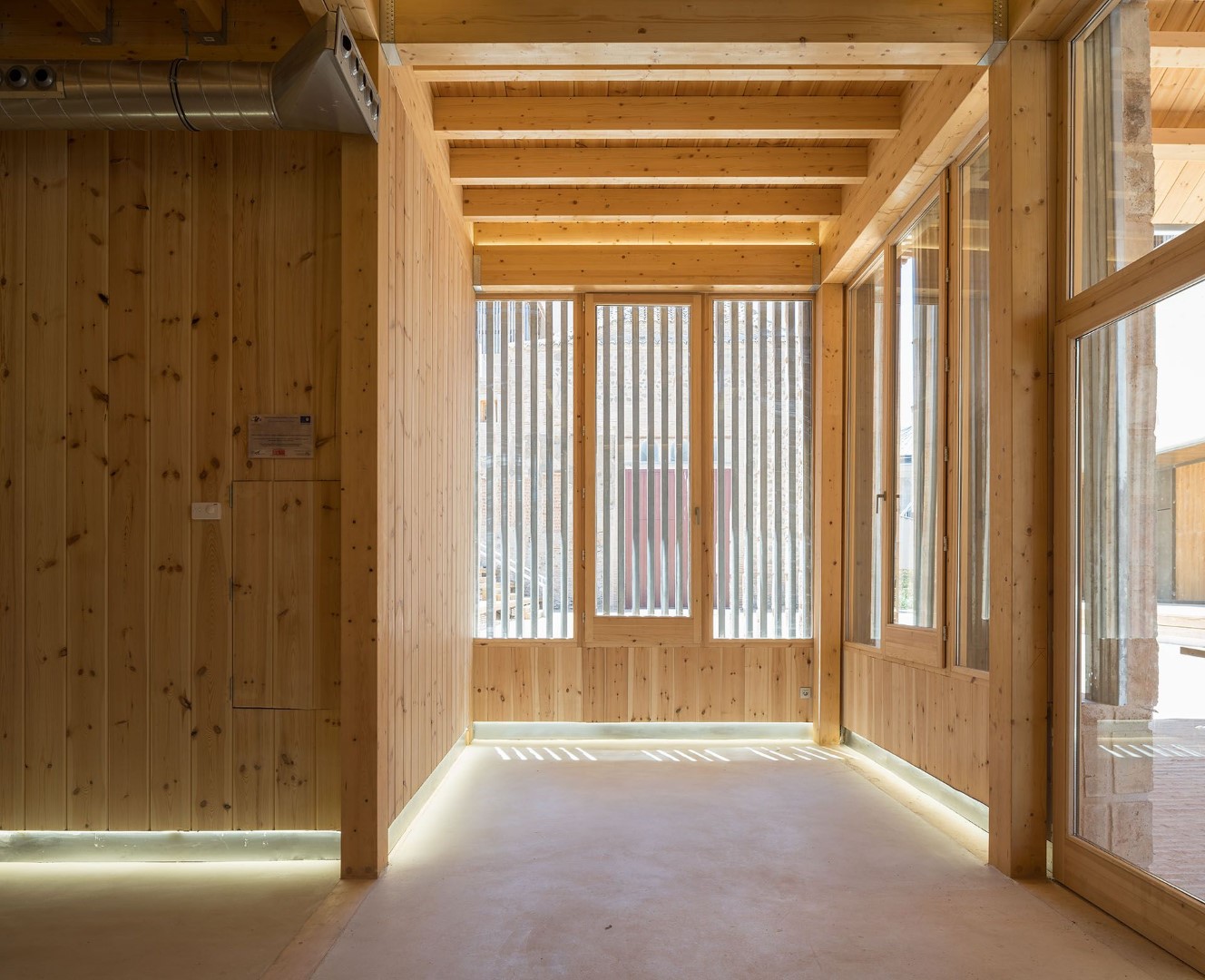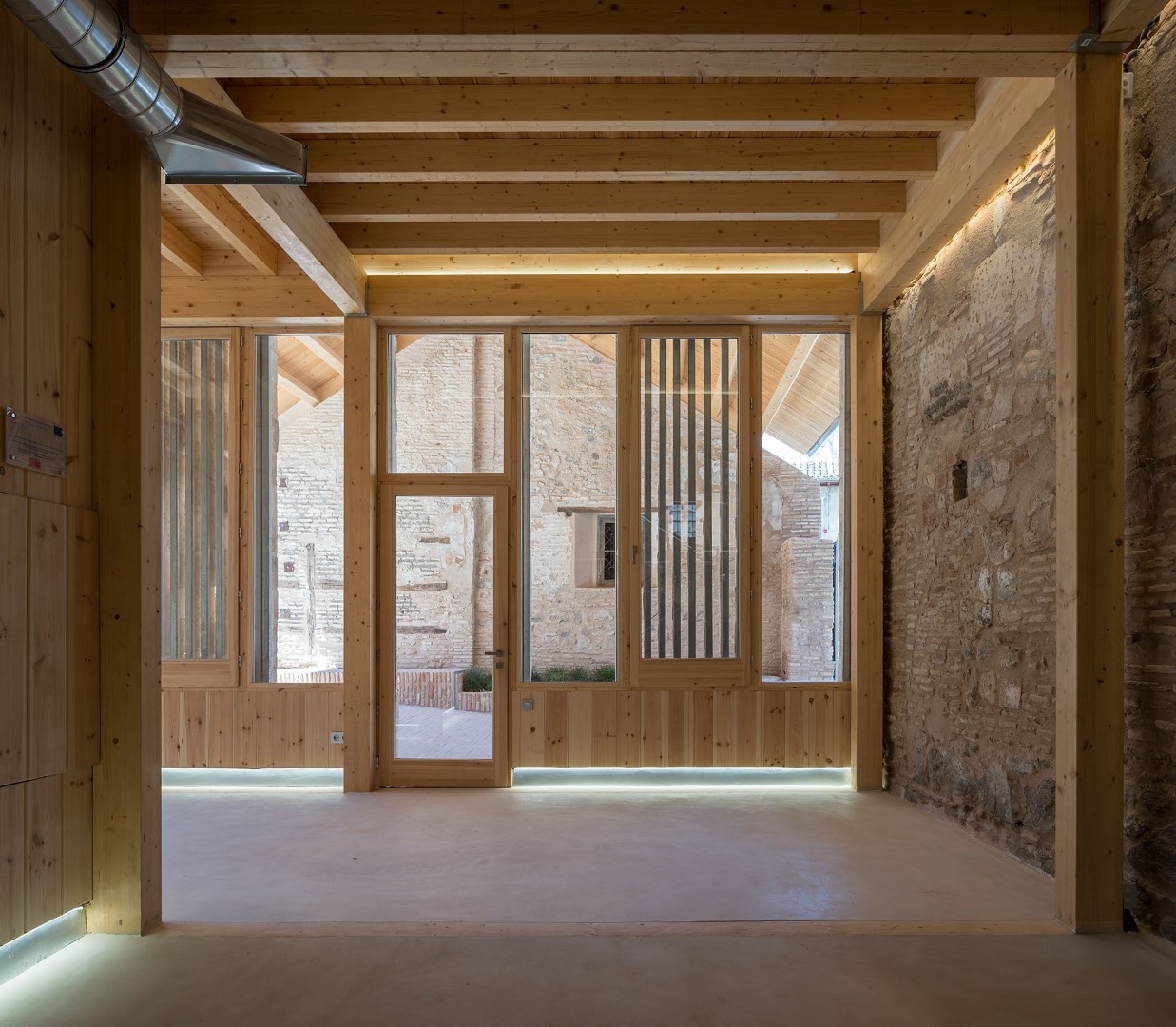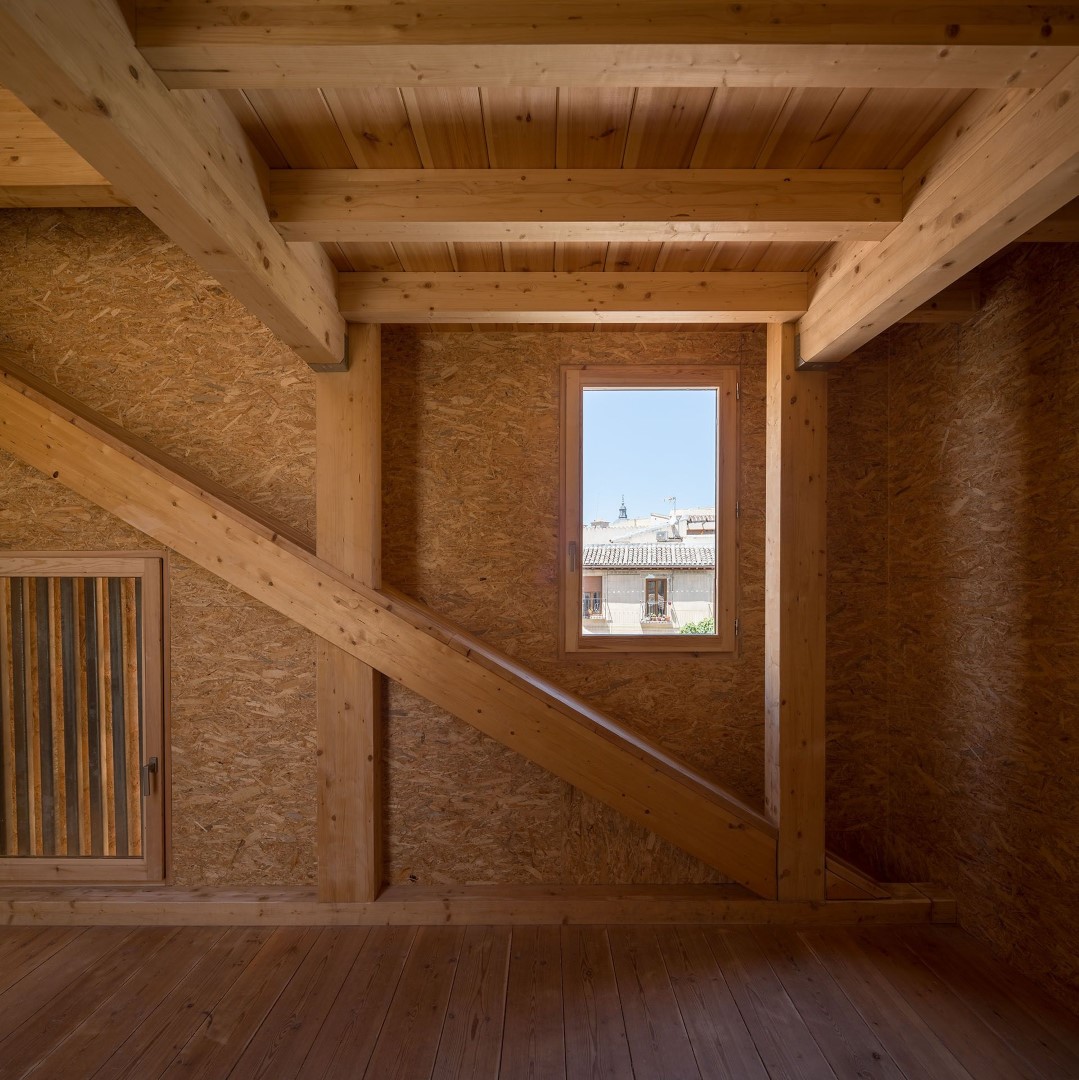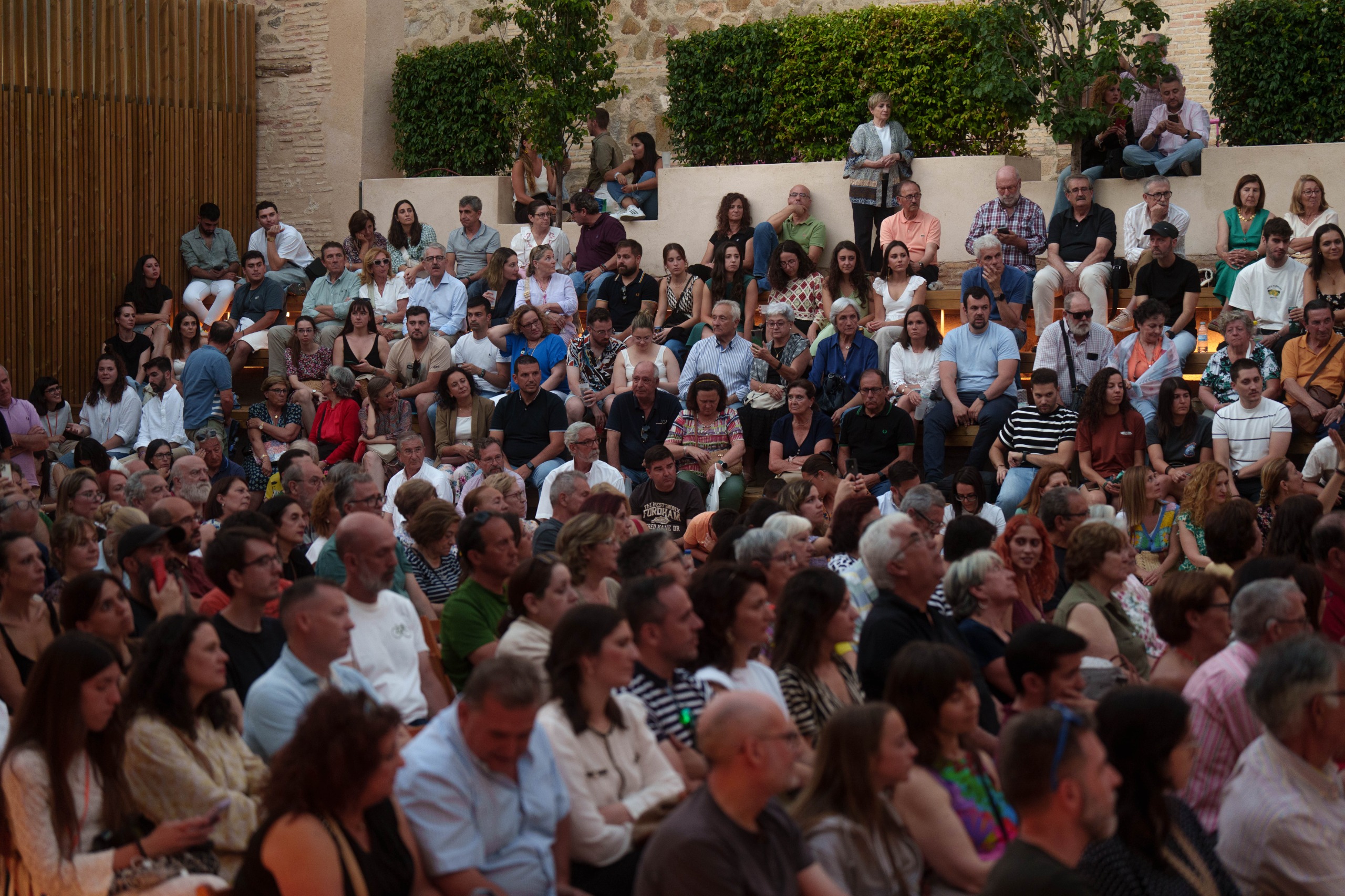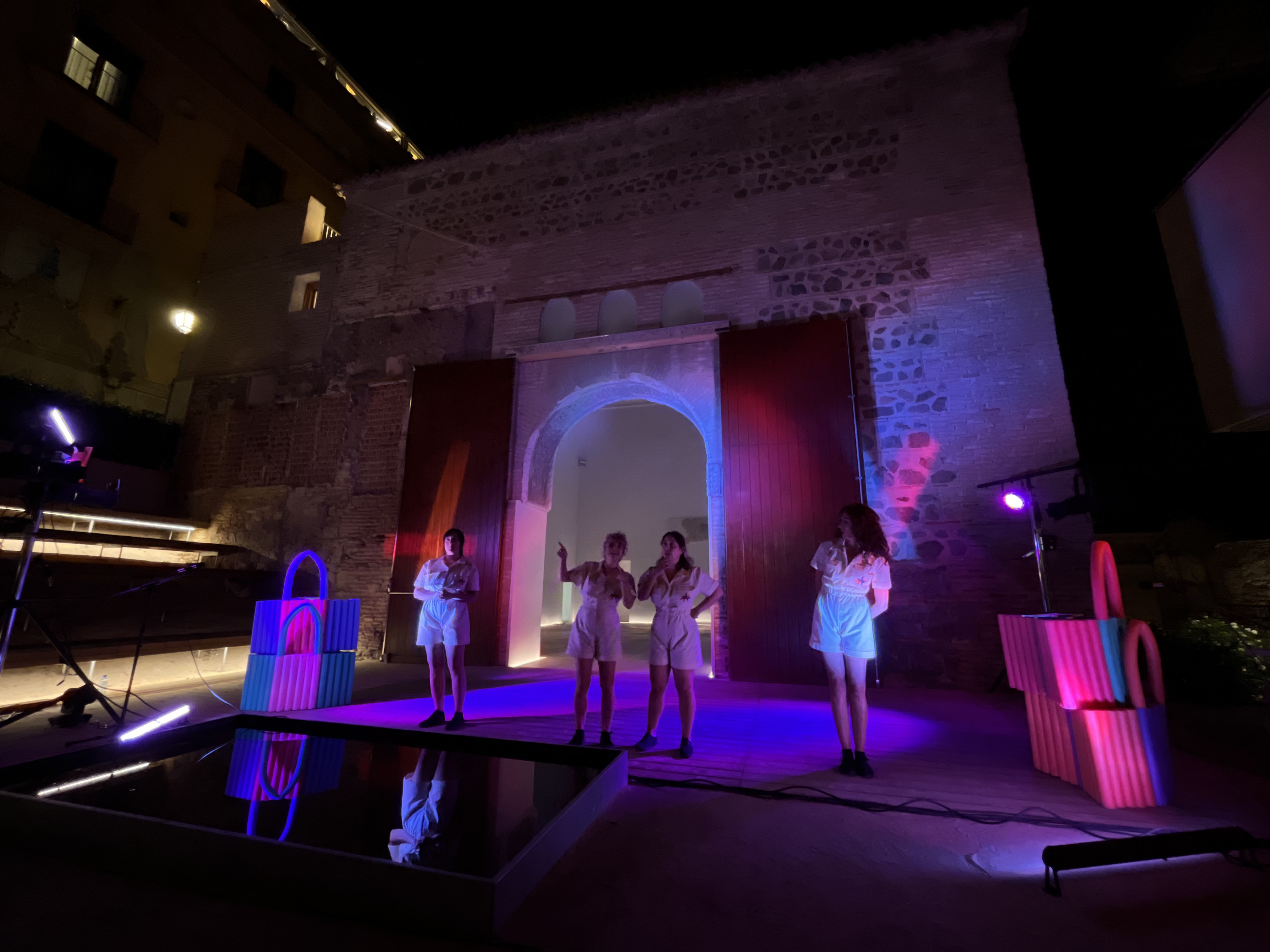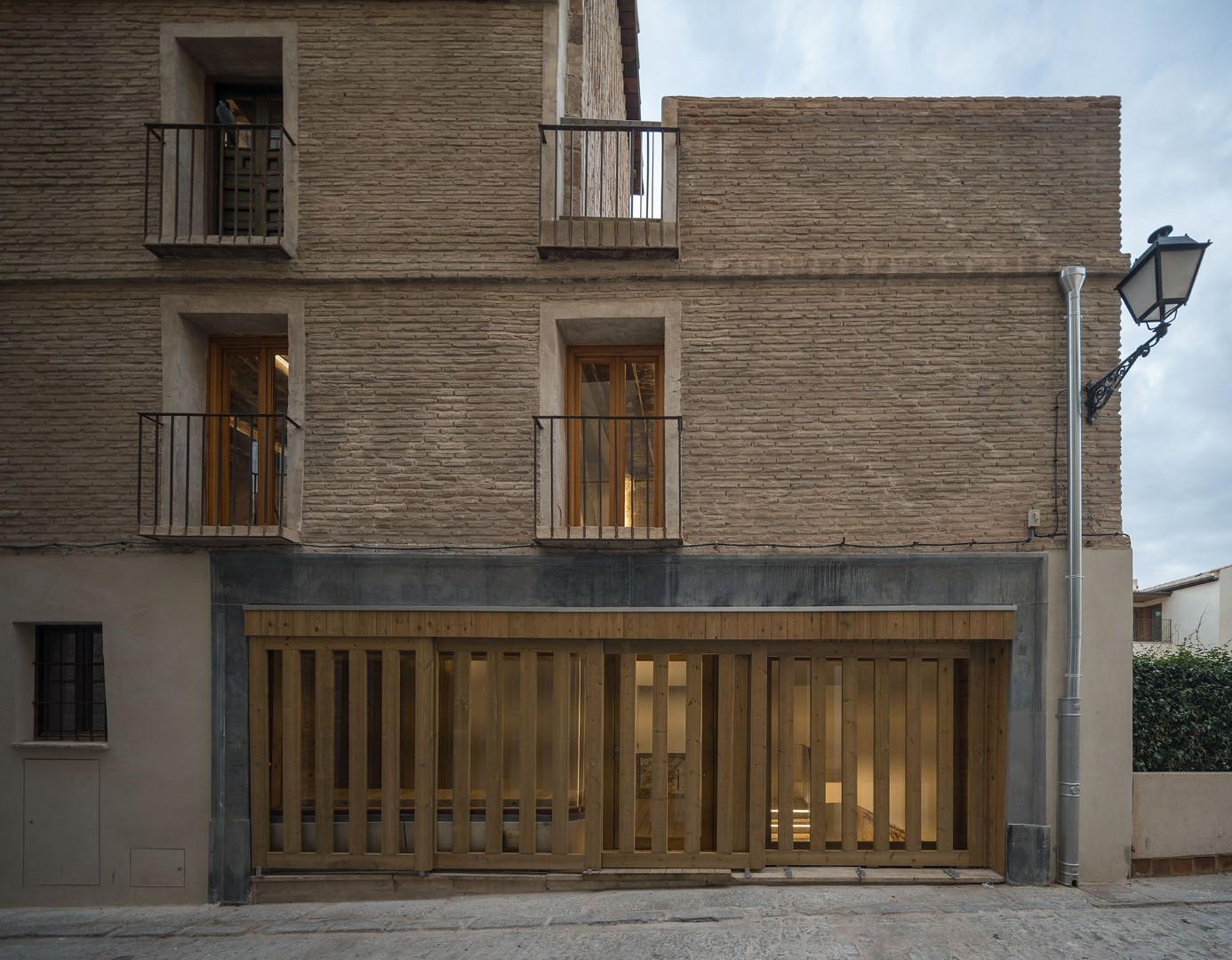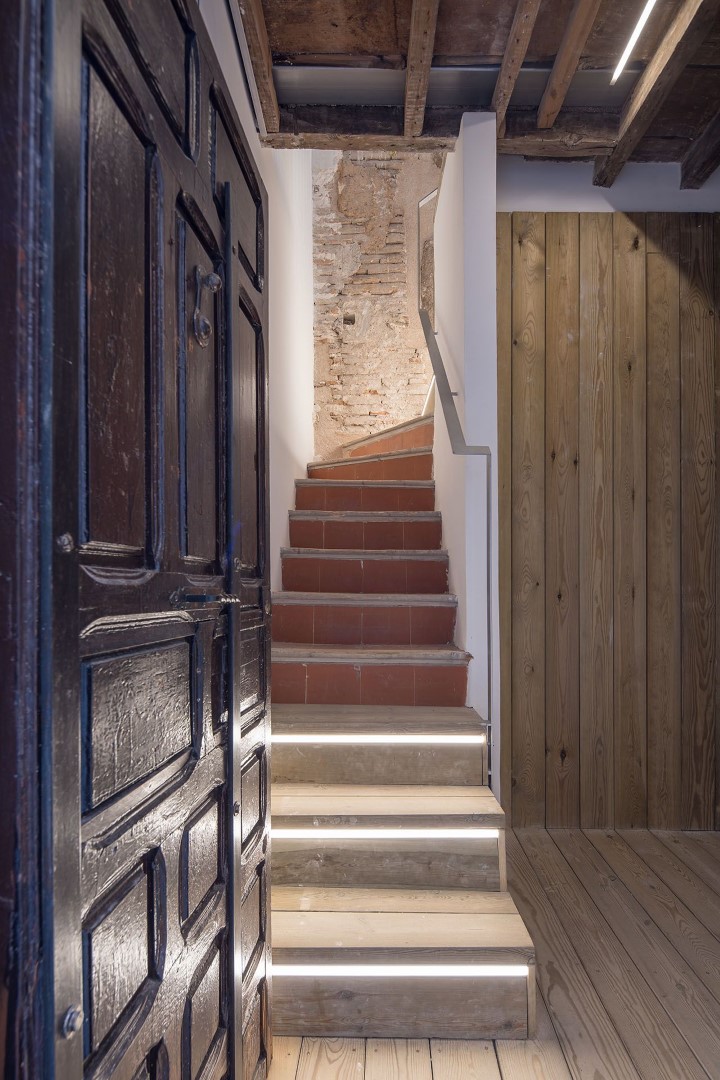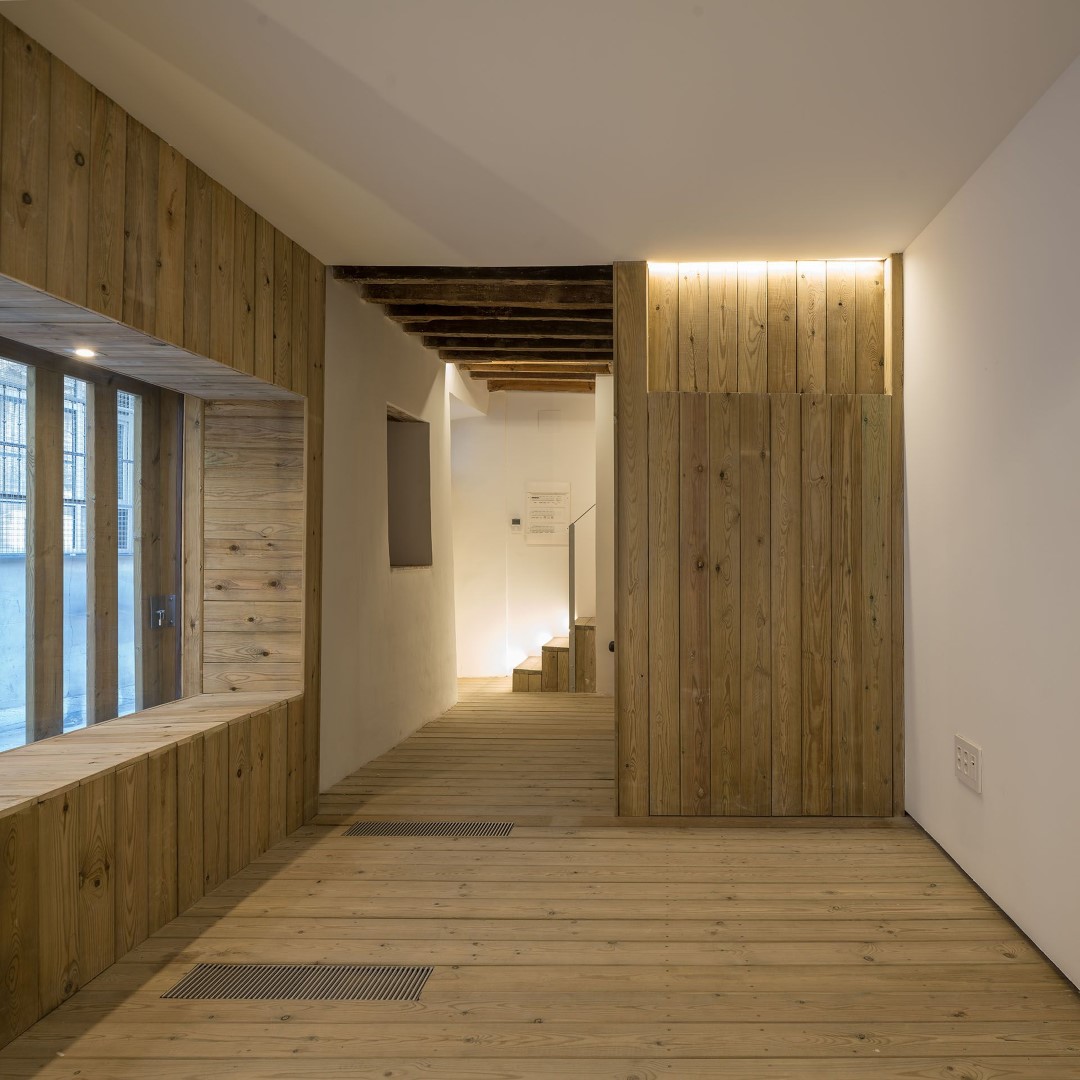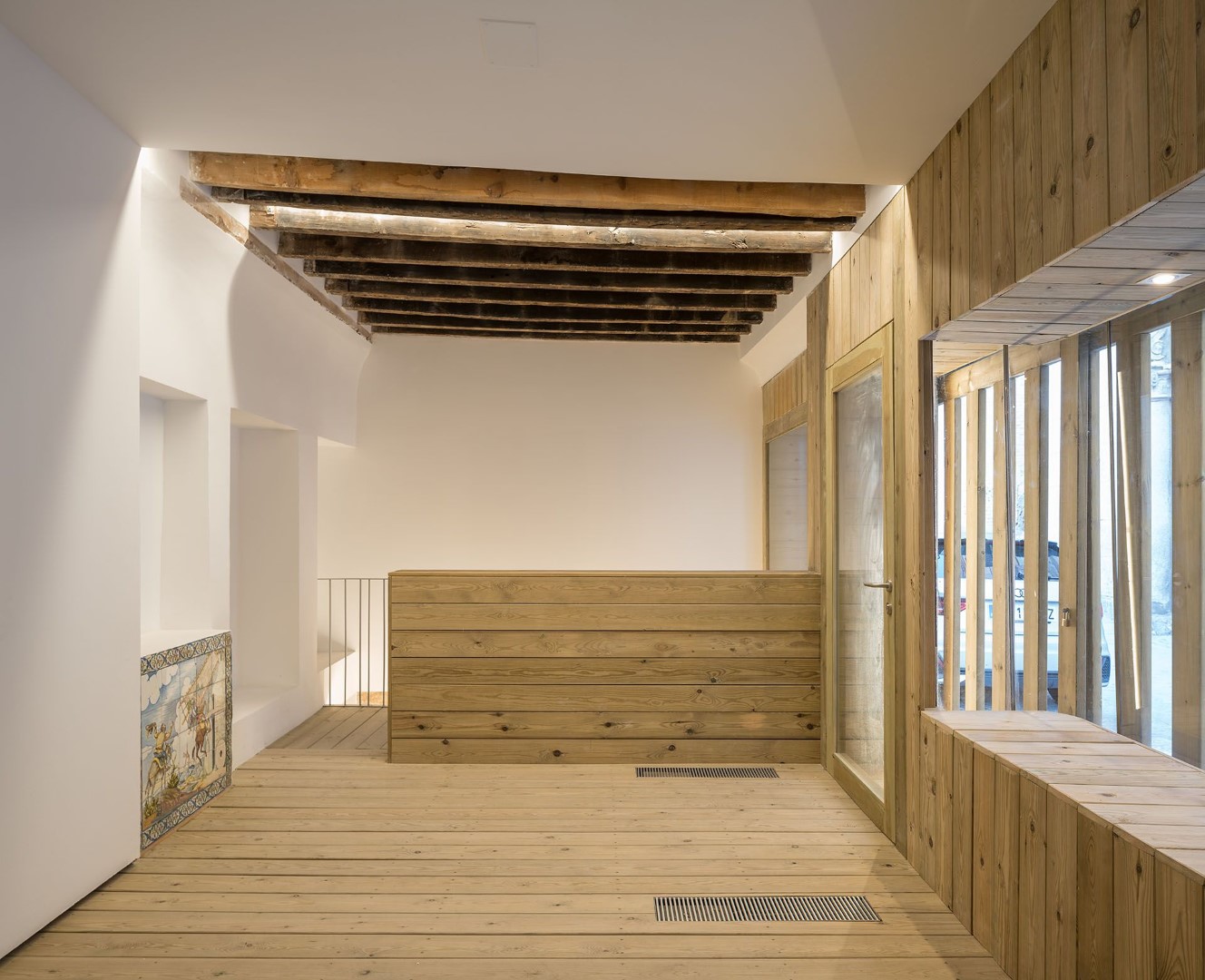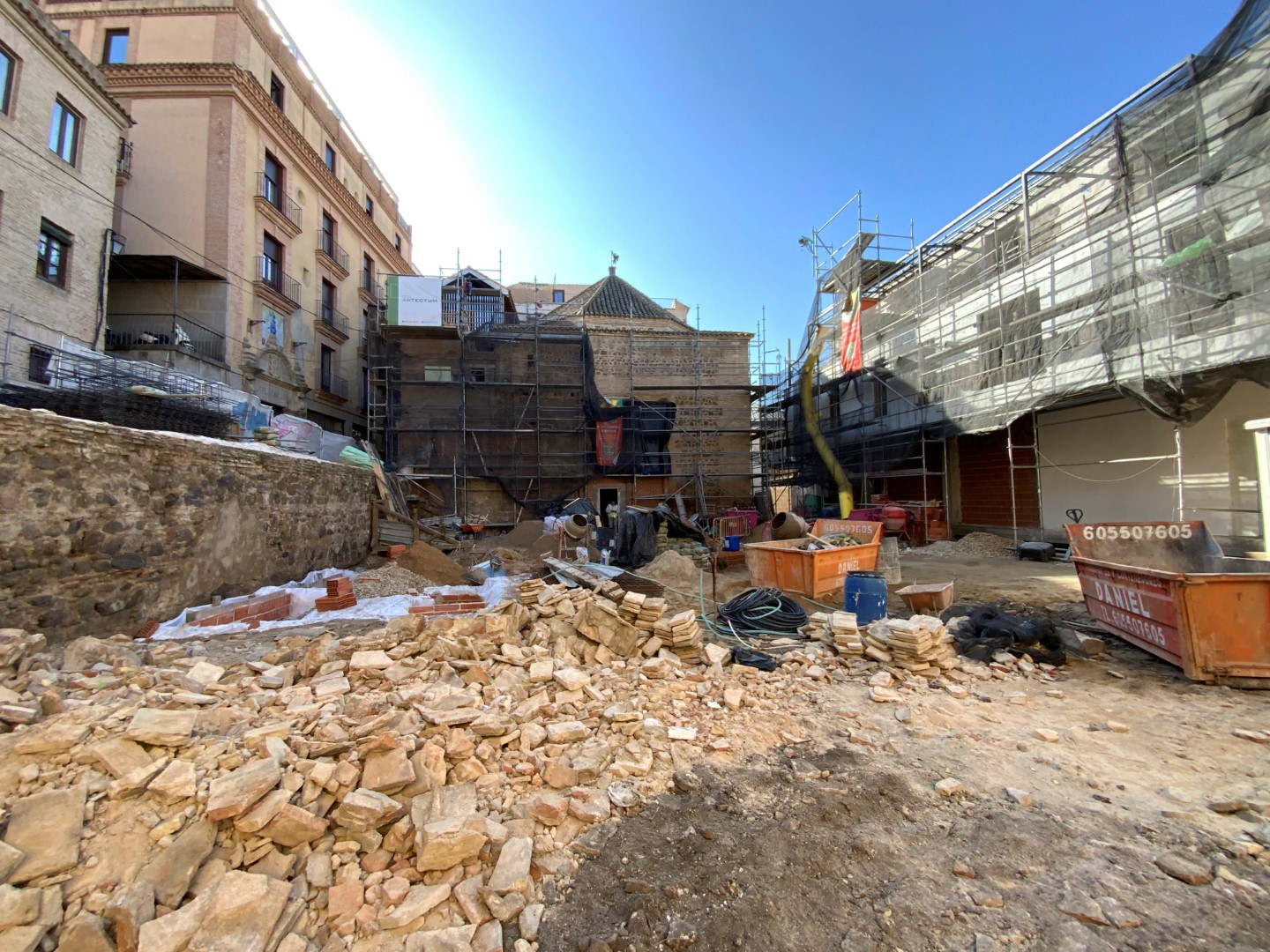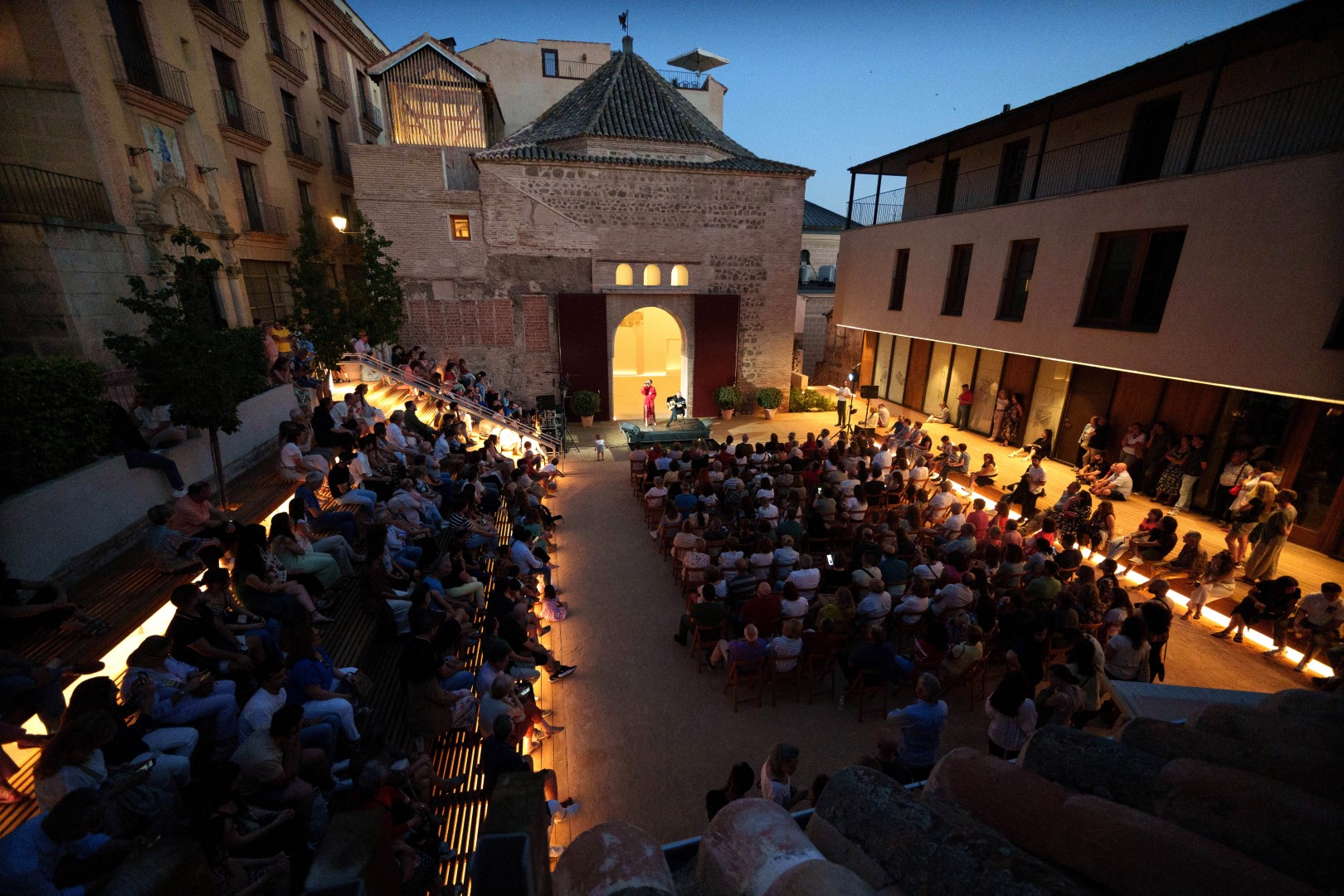Regaining a sense of belonging
Citizenship at the center of Heritage
The urban regeneration of the Corral de Don Diego
The Corral de Don Diego is a place where monuments (the Salón Rico, an Asset of Cultural Interest, abandoned for decades), residential buildings, public spaces and archaeological remains coexist. It was in a state of maximum degradation and disconnected from the city until the Consorcio de Toledo initiated the urban regeneration project demanded by the citizens; coordinating different actions aimed at the recovery of the space that combine own, municipal, regional and EU resources.
Spain
Local
Toledo, Castilla-La Mancha
Mainly urban
It refers to a physical transformation of the built environment (hard investment)
Yes
2024-06-07
Yes
ERDF : European Regional Development Fund
No
Yes
Yes
Yes
As a representative of an organisation
The main objective of this urban regeneration project was to return a lost urban space to the city by handing it over to the citizens for them to make it their own, enhancing its historical value, promoting cultural values, and improving the quality of life for residents and other users.
The project has long been demanded by the residents of Toledo, who have emphasised on creating a place not only to pass through but also to stay in the city, with housing to accommodate a young population in the historic centre and a place to host activities that will benefit traders, local producers and artists. Some other goals were:
- Improvement of road connectivity, resolving the longitudinal and transversal continuity of the urban fabric.
- Resolution of boundary conflicts between neighbouring properties and the deterioration of party walls of buildings.
- A new public square that functions as a meeting space with a permanent cultural program and as a theatrical cavea for cultural commemorations.
- Sustainability through the systematic reuse of demolition materials from walls.
- The concept of urban landscape has been incorporated into the intervention, with elements reminiscent of the historical places that once existed there.
- Each phase of the project is shared with the public: archaeological research, restoration, progress of the works, shows, and cultural visits.
The recycling of materials and the use of traditional techniques in the rehabilitation has led to a lower carbon footprint; and the landscaping of the public space project has enhanced the environmental values of the location. The generated public space fosters social relationships at both the neighbourhood and city levels.
Cultural visits have improved the educational offerings in the area and the participatory process with the citizens, integrating contemporary uses while respecting heritage, has resonated in the city's conservation policies as a system of good practices to be employed.
The project has long been demanded by the residents of Toledo, who have emphasised on creating a place not only to pass through but also to stay in the city, with housing to accommodate a young population in the historic centre and a place to host activities that will benefit traders, local producers and artists. Some other goals were:
- Improvement of road connectivity, resolving the longitudinal and transversal continuity of the urban fabric.
- Resolution of boundary conflicts between neighbouring properties and the deterioration of party walls of buildings.
- A new public square that functions as a meeting space with a permanent cultural program and as a theatrical cavea for cultural commemorations.
- Sustainability through the systematic reuse of demolition materials from walls.
- The concept of urban landscape has been incorporated into the intervention, with elements reminiscent of the historical places that once existed there.
- Each phase of the project is shared with the public: archaeological research, restoration, progress of the works, shows, and cultural visits.
The recycling of materials and the use of traditional techniques in the rehabilitation has led to a lower carbon footprint; and the landscaping of the public space project has enhanced the environmental values of the location. The generated public space fosters social relationships at both the neighbourhood and city levels.
Cultural visits have improved the educational offerings in the area and the participatory process with the citizens, integrating contemporary uses while respecting heritage, has resonated in the city's conservation policies as a system of good practices to be employed.
Citizenship
Heritage
Housing
Sustainability
Agora
The main objectives of the project in terms of sustainability were to promote the recycling and reuse of materials, to achieve a more pedestrian-friendly garden plaza space that would provide all the advantages of a newly planted vegetated space in a historic city, reducing the heat island effect. Traditionally, the historic city of Toledo has lacked this type of space.
It is intended to move away from a hard pavement with a dirt floor that allows play and walking activities; and a garden that implements a variety of plant species in collaboration with a landscape study to select the autoctone species best adapted to Toledo's climate. Some of them are also native species.
Local wood has been used both in the form of laminated wood for the new building and in slats from the old bleachers, recovered for use in finishes and lattices. The project also uses lime as a binder, a material whose use cycle is carbon neutral.
The project seeks to promote the presence of animal species that are beneficial to the environment, including swifts and bats. These species carry out biological control in the environment, as they feed on insects that are potential pest spreaders. To achieve this objective, openings have been made in the eaves of the new wooden building, giving these species a place to shelter.
The design of the plaza also includes an ornamental pool and a drinking fountain for the use of passers-by.
It is intended to move away from a hard pavement with a dirt floor that allows play and walking activities; and a garden that implements a variety of plant species in collaboration with a landscape study to select the autoctone species best adapted to Toledo's climate. Some of them are also native species.
Local wood has been used both in the form of laminated wood for the new building and in slats from the old bleachers, recovered for use in finishes and lattices. The project also uses lime as a binder, a material whose use cycle is carbon neutral.
The project seeks to promote the presence of animal species that are beneficial to the environment, including swifts and bats. These species carry out biological control in the environment, as they feed on insects that are potential pest spreaders. To achieve this objective, openings have been made in the eaves of the new wooden building, giving these species a place to shelter.
The design of the plaza also includes an ornamental pool and a drinking fountain for the use of passers-by.
The main intention in terms of beauty when undertaking this project is to harmonize all interventions that make up the urban regeneration of Corral de Don Diego. Each of the interventions has been drafted and directed by different professionals. The Consorcio has coordinated the aesthetic line of these different fronts in terms of finishes, urban integration, respect for heritage and unity through materials. The difference with respect to its previous appearance, of a degraded and forgotten place for decades, presents as a result its recovery through a contemporary language that integrates with the historic city of Toledo, a World Heritage Site.
This aesthetic intervention does not lose sight of the functionality within the urban fabric. Elements that provide shelter, shade, passage, communication, shadow, spectacle and even drinking water are achieved through a careful and simple design that dialogues with its immediate surroundings.
This aesthetic intervention does not lose sight of the functionality within the urban fabric. Elements that provide shelter, shade, passage, communication, shadow, spectacle and even drinking water are achieved through a careful and simple design that dialogues with its immediate surroundings.
Before being rehabilitated, the Corral de Don Diego was a degraded place in very poor condition, surrounded by walls and covered with vegetation and garbage, which neighbors could not access. Illegal activities such as drug consumption were taking place inside, promoting a marginal and unsafe environment for the neighbors. With its recovery, the Corral de Don Diego has now become a public place, a meeting place for all citizens, discouraging the illegal uses it had in the past. The focus has not been lost on the accessibility of the square for people with reduced mobility through the new shed, and the insertion of local commercial premises, the creation of new housing and a space for cultural diffusion that together complete this regeneration at a social level.
Civil society has been part of the genesis of the urban regeneration project. The Consorcio de la Ciudad de Toledo has carried out citizen consultations and meetings with associations and neighbourhood representatives to define what the city of Toledo wanted Corral de Don Diego to be. The benefit for the citizens is, therefore, full and direct, as they are the ones who have demanded a public space well connected to the city, housing to fix population and an intervention that respects the heritage.
In addition, citizens participate in the use of the rehabilitated spaces through the permanent programme of cultural activities that takes place in the new square and in the newly restored Salón Rico. Neighbours, cultural associations and public or private entities use the rehabilitated space as a living environment, both on a day-to-day basis and as a meeting place, for performances and for academic, cultural or solidarity events. The new public space has become a place for residents and tourists to stay and pass through, recovering a place that did not exist until the urban regeneration promoted by the Consorcio.
The intervention is a civic landmark in the historic centre of a World Heritage city, as it is not common to obtain new public spaces in urban areas as conditioned and closed as is the case of the city of Toledo. Opening a new agora in Toledo with a project promoted by a public administration with the participation of the citizens is a redundant benefit for everyone.
In addition, citizens participate in the use of the rehabilitated spaces through the permanent programme of cultural activities that takes place in the new square and in the newly restored Salón Rico. Neighbours, cultural associations and public or private entities use the rehabilitated space as a living environment, both on a day-to-day basis and as a meeting place, for performances and for academic, cultural or solidarity events. The new public space has become a place for residents and tourists to stay and pass through, recovering a place that did not exist until the urban regeneration promoted by the Consorcio.
The intervention is a civic landmark in the historic centre of a World Heritage city, as it is not common to obtain new public spaces in urban areas as conditioned and closed as is the case of the city of Toledo. Opening a new agora in Toledo with a project promoted by a public administration with the participation of the citizens is a redundant benefit for everyone.
The promoter of the urban regeneration of Corral de Don Diego is the Consorcio de la Ciudad de Toledo, a public administration formed by four consortium administrations: at national level by the Spanish Ministry of Finance, at regional level by the Junta de Comunidades de Castilla-La Mancha, at provincial level by the Diputación de Toledo and at local level by the City Council of Toledo. It has collaborated with public-private foundations to maintain cultural activities on the site. The levels are perfectly represented in the Consorcio as it brings together in a single entity the fusion of the four interests. The main European connection of our project is in its philosophy of intervention: the Consortium is partner of the New European Bauhaus movement that promotes the architectural dimension and its value to improve the quality of life in cities. It is a call for reflection on how the spaces in which we live should be, taking into account the culture of each place and strengthening the ties that unite the different European countries by creating beautiful, sustainable spaces for everyone. The result is an urban space with local identity traits but which feels common because it carries implicit European values and criteria.
Furthermore, the historical-heraldic research that has been carried out in the Salón Rico during its restoration has managed to connect the local history of Toledo with European history by means of the events that took place at the end of the 14th century that shaped the political geography of the countries involved in them (England, France, Portugal and Spain).
Furthermore, the historical-heraldic research that has been carried out in the Salón Rico during its restoration has managed to connect the local history of Toledo with European history by means of the events that took place at the end of the 14th century that shaped the political geography of the countries involved in them (England, France, Portugal and Spain).
The urban regeneration of the Corral de Don Diego is a choral project, where multiple agents and professionals have intervened, contributing their knowledge to the rehabilitation experience. The action has not only been multidisciplinary, but has also sought to obtain the added value of polymathy, seeking excellence in knowledge and results. Coordinated by the Consorcio, teams of professionals with expertise in each discipline required by the project have been included. The fields of knowledge reflected in the design are:
- Architecture: implemented with respect for heritage and the values of the New European Bauhaus (beautiful, sustainable and for all).
- Archaeology: in-depth study of past material evidence in order to protect it properly and incorporate it into the architectural project, when its conservation needs have allowed it.
- Urban planning: work has been carried out with the municipal urban planning services to ensure that the new public spaces and infrastructures planned fit into the urban fabric.
- History: a documentary survey has been carried out, which has provided valuable preliminary studies for subsequent decision-making when intervening in the buildings and public spaces. In addition, during the works, a detailed study was carried out of the existing heraldic motifs in the building of Cultural Interest that is the Salón Rico, discovering their origin and their national and European implications.
- Restoration: work has been carried out using specialised labour and techniques that are respectful and compatible with the immovable property.
- Epigraphy, Palaeography and Philology: the historical inscriptions in the Salón Rico have been studied in detail through these disciplines.
- Landscaping: landscaping, visuals, compatibility of materials, unity of criteria of intervention and integration with the urban environment have been premises worked on together with landscaping professionals.
- Architecture: implemented with respect for heritage and the values of the New European Bauhaus (beautiful, sustainable and for all).
- Archaeology: in-depth study of past material evidence in order to protect it properly and incorporate it into the architectural project, when its conservation needs have allowed it.
- Urban planning: work has been carried out with the municipal urban planning services to ensure that the new public spaces and infrastructures planned fit into the urban fabric.
- History: a documentary survey has been carried out, which has provided valuable preliminary studies for subsequent decision-making when intervening in the buildings and public spaces. In addition, during the works, a detailed study was carried out of the existing heraldic motifs in the building of Cultural Interest that is the Salón Rico, discovering their origin and their national and European implications.
- Restoration: work has been carried out using specialised labour and techniques that are respectful and compatible with the immovable property.
- Epigraphy, Palaeography and Philology: the historical inscriptions in the Salón Rico have been studied in detail through these disciplines.
- Landscaping: landscaping, visuals, compatibility of materials, unity of criteria of intervention and integration with the urban environment have been premises worked on together with landscaping professionals.
The innovation that the urban regeneration process of the Corral de Don Diego represents with respect to the ordinary current in the world of rehabilitation consists of the implementation by a public administration (the Consorcio) of the criteria of sustainability in the rehabilitation process (re-circulate, re-use, re-cycle), giving priority to local materials and minimising waste that is used in the works themselves.
Each of the projects that make up the intervention in the Corral de Don Diego has its own singular character, but they all share the unity of the rehabilitation criteria and the material component that harmonises all of them and integrates them into the concepts of reuse (the lattices of recovered brick bring together the different natures of the buildings at 9 Trastámara Street and 3 Corral de Don Diego Square. The wood (recovered and new) integrates the square with the rest of the buildings. This local identity character of the refurbishment, which at the same time represents an advance in contemporary architectural language, but with respect for heritage, is another of the outstanding innovative points of the intervention.
All this has been done in a context of citizen collaboration with the administration. This way of working is a milestone that may create a trend in the immediate future in the city of Toledo.
Each of the projects that make up the intervention in the Corral de Don Diego has its own singular character, but they all share the unity of the rehabilitation criteria and the material component that harmonises all of them and integrates them into the concepts of reuse (the lattices of recovered brick bring together the different natures of the buildings at 9 Trastámara Street and 3 Corral de Don Diego Square. The wood (recovered and new) integrates the square with the rest of the buildings. This local identity character of the refurbishment, which at the same time represents an advance in contemporary architectural language, but with respect for heritage, is another of the outstanding innovative points of the intervention.
All this has been done in a context of citizen collaboration with the administration. This way of working is a milestone that may create a trend in the immediate future in the city of Toledo.
The Consorcio of the City of Toledo is a public administration dedicated to providing financial aid, technical advice and heritage dissemination in the city. In order to achieve these aims, our entity has technicians specialised in heritage and a Citizen Services Department that every week answers citizens' queries and also carries out technical visits to the buildings in the historic centre at the request of neighbours. This means that the Consorcio has its finger on the pulse of the city and has a good amount of knowledge of the buildings, the residents and the urban planning of such a complex historic city. This working method (attention to citizens, technical visits, advice, financial aid...) is the driving force behind the development of more complex interventions such as the one deployed in the Corral de Don Diego, with a sensitive, learned, academic and technical approach to the site, since the problems of the site, its history, its social and technical difficulties, its inhabitants and its potential opportunities are known.
Another fundamental concept in the success of the method is the coordination between administrations (City Council, Regional Government, Provincial Council, State Administration, those responsible for Heritage, Town Planning, etc.), who have been informed step by step of the rehabilitation process, reducing time and minimising possible conflicts of interest.
Finally, the citizen is at the centre of the intervention: from the beginning, he or she has been involved in the general decisions about what the Corral de Don Diego space should be and what it should be used for after its refurbishment.
Another fundamental concept in the success of the method is the coordination between administrations (City Council, Regional Government, Provincial Council, State Administration, those responsible for Heritage, Town Planning, etc.), who have been informed step by step of the rehabilitation process, reducing time and minimising possible conflicts of interest.
Finally, the citizen is at the centre of the intervention: from the beginning, he or she has been involved in the general decisions about what the Corral de Don Diego space should be and what it should be used for after its refurbishment.
When it comes to rehabilitating public spaces, whether of a more or less urban nature, one of the strategies employed here that could be better replicated in other contexts is the strategy of citizen participation. Taking the pulse of the city and knowing what the residents' demands are for their immediate surroundings. By knowing the needs of the area, it is possible to plan a regeneration of almost any space while being sure that the shortcomings of a place are being addressed, and paying attention to the citizens. In the Corral de Don Diego, materials have also been recovered which have subsequently been used in the construction of new spaces, giving these materials a new use. It is vital to identify before undertaking a refurbishment which elements could be useful in the future, so that they can form part of a new place. In this way, we comply with the principles of recycling and reuse, and give the concept of recircularity the importance it should have in our times.
One of the main global problems facing world civilisation in the 21st century is climate change. The contribution of each architectural project in this aspect, although small, must be constant, raising awareness of the problem among all the rehabilitation agents and trying to take measures that favour a minimum carbon footprint in each intervention. The reuse of materials, zero-kilometre waste, the supply of local raw materials and the application of sustainability criteria, applied through local solutions, are fundamental when undertaking a refurbishment. The sustainability of the Corral de Don Diego urban regeneration project is based on the following local solutions:
- Landscaping: selection of native species (durillo - Viburnu tinus, caper - Capparis spinosa, cypress - Cupressus sempervirens) in combination with others compatible with Toledo's climate in the design of the gardens in the public space.
- Wood from sustainable forests of regional sawmills: used in the structure and finishes of the building 3 Corral de Don Diego Square, 9 Trastámara Street and the plaza.
- Natural limes in the restoration of old walls.
- Reuse of demolition materials to reduce waste.
- The thermal installations of the refurbished buildings have been resolved by means of highly energy-efficient aerothermal energy.
- In the eaves of 3 Corral de Don Diego Square, holes have been drilled to facilitate the nesting of beneficial species such as swifts (Apus apus) or bats (Rhinolophus hipposideros).
Another major challenge facing historic cities is the depopulation of their historic centres. The project has created five dwellings for young families that will contribute to the fixation of population and rejuvenate the historic centre of Toledo.
- Landscaping: selection of native species (durillo - Viburnu tinus, caper - Capparis spinosa, cypress - Cupressus sempervirens) in combination with others compatible with Toledo's climate in the design of the gardens in the public space.
- Wood from sustainable forests of regional sawmills: used in the structure and finishes of the building 3 Corral de Don Diego Square, 9 Trastámara Street and the plaza.
- Natural limes in the restoration of old walls.
- Reuse of demolition materials to reduce waste.
- The thermal installations of the refurbished buildings have been resolved by means of highly energy-efficient aerothermal energy.
- In the eaves of 3 Corral de Don Diego Square, holes have been drilled to facilitate the nesting of beneficial species such as swifts (Apus apus) or bats (Rhinolophus hipposideros).
Another major challenge facing historic cities is the depopulation of their historic centres. The project has created five dwellings for young families that will contribute to the fixation of population and rejuvenate the historic centre of Toledo.
The Corral de Don Diego regeneration project embodies a universalist vision motivated by the values of the New European Bauhaus, seeking to create beautiful, sustainable places for all. The setting that this city, known as the city of the Three Cultures, offers is unbeatable when it comes to inspiring a coexistence that is in the DNA of its own history.
Thanks to this regeneration, new cultural programmes have been developed for the enjoyment of both residents and visitors to our city, which can take place both in the agora formed by the square and inside the Salón Rico. Now, the historic centre has seen an increase in the number of housing and commercial premises available to boost both the population and commerce in an area that has been progressively losing services and facilities. With the new square and garden, an axis of communication has been created between the Plaza de la Magdalena and the Teatro de Rojas, bringing the latter closer to Zocodover Square and the Alcázar, and therefore to the core of activities in the historic centre.
We hope that both the recovered materials and local materials will open up a new line of thought in terms of rehabilitation in this city, leading the way when it comes to recovering monumental and urban spaces, giving a new life to elements that would otherwise be discarded. With all these guidelines, the Consorcio aims to transform the Corral de Don Diego from a dead and marginal space into a space that can be enjoyed by a living city.
A permanent cultural programme with educational workshops on crafts, gardening, mobility for the elderly, events with musical and performing arts events has been achieved. It has become an ideal place to host academic talks, conferences and neighbourhood activities, making the Corral de Don Diego a multi-purpose space that stimulates the social activity of the neighbourhood.
Thanks to this regeneration, new cultural programmes have been developed for the enjoyment of both residents and visitors to our city, which can take place both in the agora formed by the square and inside the Salón Rico. Now, the historic centre has seen an increase in the number of housing and commercial premises available to boost both the population and commerce in an area that has been progressively losing services and facilities. With the new square and garden, an axis of communication has been created between the Plaza de la Magdalena and the Teatro de Rojas, bringing the latter closer to Zocodover Square and the Alcázar, and therefore to the core of activities in the historic centre.
We hope that both the recovered materials and local materials will open up a new line of thought in terms of rehabilitation in this city, leading the way when it comes to recovering monumental and urban spaces, giving a new life to elements that would otherwise be discarded. With all these guidelines, the Consorcio aims to transform the Corral de Don Diego from a dead and marginal space into a space that can be enjoyed by a living city.
A permanent cultural programme with educational workshops on crafts, gardening, mobility for the elderly, events with musical and performing arts events has been achieved. It has become an ideal place to host academic talks, conferences and neighbourhood activities, making the Corral de Don Diego a multi-purpose space that stimulates the social activity of the neighbourhood.

